






































IN A FASCINATING DEVELOPMENT, an aviation insurer sems to have recognized this and is ignoring some of the latest CAA rules.
The aviation industry is highly regulated, not just by the CAA, who makes the rules, but perhaps even more so by the insurance underwriters –who determine what is okay – and what’s not.
The standard aviation insurance policy is supposed to be a simple contract. Risk information is provided and an insurance contract is proposed, with the ‘small print’ of definitions, conditions and exclusions. Exclusions usually include a version of: The aircraft and pilot must not contravene the civil aviation regulations (CARs). This can be worrying for an aircraft operator as it is easy to fall foul of the myriad regulations.
Thankfully insurers are not completely unreasonable when it comes to insisting on pilots being rule abiding.
The recent ill-considered attempt by CAA to introduce legislation that effectively would have prevented anyone from landing at an unlicensed or unregistered airstrip was met with howls of protest from the industry. An amendment to Part 94.07.03 meant that the Breach of Air Navigation Regulations clause in the insurance policies would have made off-licenced/ registered airport ops illegal and uninsured.
The charter industry was alarmed at the prospect, as were the ‘weekend warriors’. After consultation with the industry, CAA withdrew the legislation for six months while it is reworked. But much confusion still reigns as to the status of the legislation, and whether aircraft operating out of unlicensed airstrips are still covered by their insurance.
Santam, the largest aviation insurer in South Africa, has continued with its Unlicensed Landing Ground clause, the gist of which places the onus on the pilot to ensure that a landing strip is indeed suitable for landing. This will hopefully calm the fears of the aircraft operators and focus the pilots’ minds on the suitability of a landing area.
As an astute general aviation pilot friend in Cape Town points out; “It is noteworthy that the insurer would have covered me for basically breaking the law initially passed by CAA. I must imagine that this clause was inserted to make aircraft operators happy that they can continue to land at an unregistered game lodge or farm airstrip without negating their insurance. But it might also reflect the insurance underwriters’ belief that sanity will prevail at CAA and the redrafted law will mirror the insurer’s clause.
“Nonetheless, the CAA’s drive to register all airfields is continuing and it has to be asked to what end? Is this a safety and security thing, or a means to raise more fees in the future? Who knows? But once again CAA has done little to convince us that they are working in the best interests of the aviation industry.”
j

The charter industry was alarmed
Douglas Bader is claimed to have said; ‘Rules are for the guidance of the wise and the obedience of fools.’


Five doors, five seats, yet incomparable and unmistakably Macan. With significant enhancements from the previous generation, the Macan S is contemporary, dynamic, urban and built for adventure and endorphin rushes on every drive. Experience the ultimate sports car SUV.





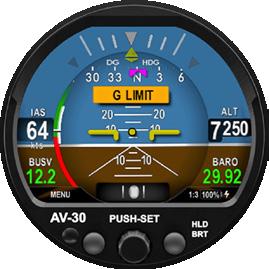

tailBeaconX combined with the AV-30 or supported third-party EFIS elevates your cockpit functionality while future-proofing your ADS-B transponder to meet South Africa, US, Canadian, and future ADS-B requirements. tailBeaconX replaces your existing transponder while upgrading your rear position light.
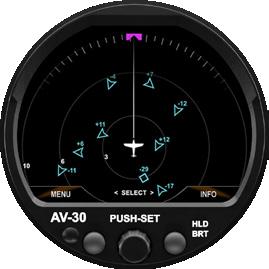




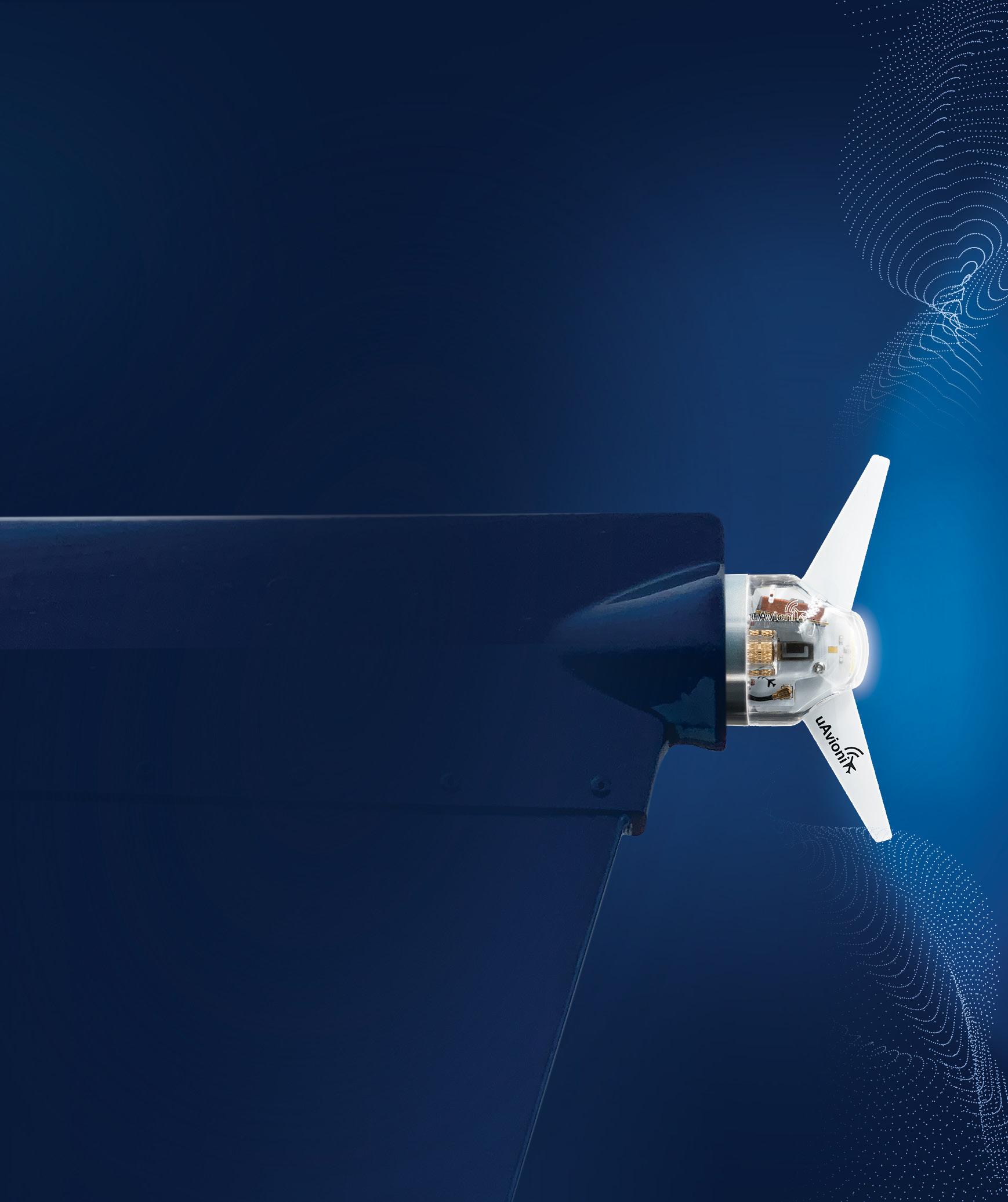
EASA Approved and Now Shipping
tailBeaconX CONTROLLED WITH AV30
AV30 HIGHLIGHT S:
• PRIMARY AI
• PRIMARY DG
• PRIMARY SLIP
• GMETER
• PROBELESS AOA
• LIVE ADSB TRAFFIC
AV30 ADDONS:
AV MAG STC
• EXT MAGNETOMETER
AV LINK
• WIFI/TRAFFIC
uAvionix.com/tbx



At altitudes like these, a lot can happen. And whether you’re a professional or recreational drone pilot, there are a number of risks that can lead to the damage of your drone. Which is why you need the right expertise to protect your drone from the risks that are obvious and the ones that aren’t. Santam. Insurance good and proper.
more information, visit santam.co.za or speak to your intermediary.


DURAN DE VILLIERS IS PASSIONATE about flying. He flies everything from paragliders to his Eurocopter EC120 helicopter and has now purchased a Bell 204 ‘Huey’.
The challenge when taking a photo out the cockpit is to get the interior and exterior exposures right. This is a perfect example of the art – no doubt assisted by his iPhone cell phone camera’s remarkably smart software. Duran took it from a Starlite Flying School Sling 2 while flying east along the coast towards Knysna.

THE TWO VOYAGER SPACECRAFT are quietly getting on with the job of heading out of our solar system and into deep space. At over 61,000 km/h the two little Voyagers are right up there in the list of the top ten fastest objects, and they have been maintaining that speed flying away from Earth for almost 50 years. Both carry the famous “Golden Record,” a 12-inch goldplated disc containing sounds and images about life and culture on Earth.
The Voyagers unarguably own the record for the flying machines with the greatest range and endurance. Forty-six years ago, on 20 August 1977, NASA’s Voyager 2 launched from Cape Canaveral, Florida, on a Titan III-Centaur rocket. It embarked on a “grand tour” of the solar system that included visits to the Jupiter and Saturn systems and would make it the first spacecraft to visit the ice giants Uranus and Neptune and their moons.
Voyager 2 is now more 25 billion kilometres away and still they fly on, transmitting from the depths of interstellar space, rebuking every car and computer that profited from built-in obsolescence.
NASA’s rocket scientists are wondering how long they can keep going. There were glum faces at NASA in early August when the wrong command caused the transmission antenna of Voyager 2 to misalign with Earth – and the spacecraft went silent – possibly forever.

However, NASA said it wasn’t panicking. The mission’s scientists believed they had several options to restore communications with the half-century-old probe. And so they did. In an update in early August, NASA said all is now well once again with Voyager 2.
When they were launched, Jimmy Carter was in the first year of his presidency and Fleetwood Mac was in the charts with Don’t Stop. The two spacecraft took that song to heart and have not stopped ever since, travelling further from Earth than any other man-made object.
NASA’s Deep Space Network facility in Canberra, Australia, was able to “shout” a command to Voyager instructing the spacecraft to reorient itself into a proper position to facilitate communication with Earth.
It took 18.5 hours for the signal to reach the
The title of these columns is Attitude for Altitude –and this is nowhere better demonstrated than by two little spaceships that have real attitude – and altitude.
spacecraft, which is now 20 billion km from Earth. Finally, in the middle of the night, after an anxious wait of 37 hours, Voyager 2 once again started streaming back data.
Voyager 1 and 2 were launched to take advantage of a once-every-176-years alignment in the 1970s that made it possible for spacecraft to take gravity-assisted slingshots from planet to planet across the solar system.
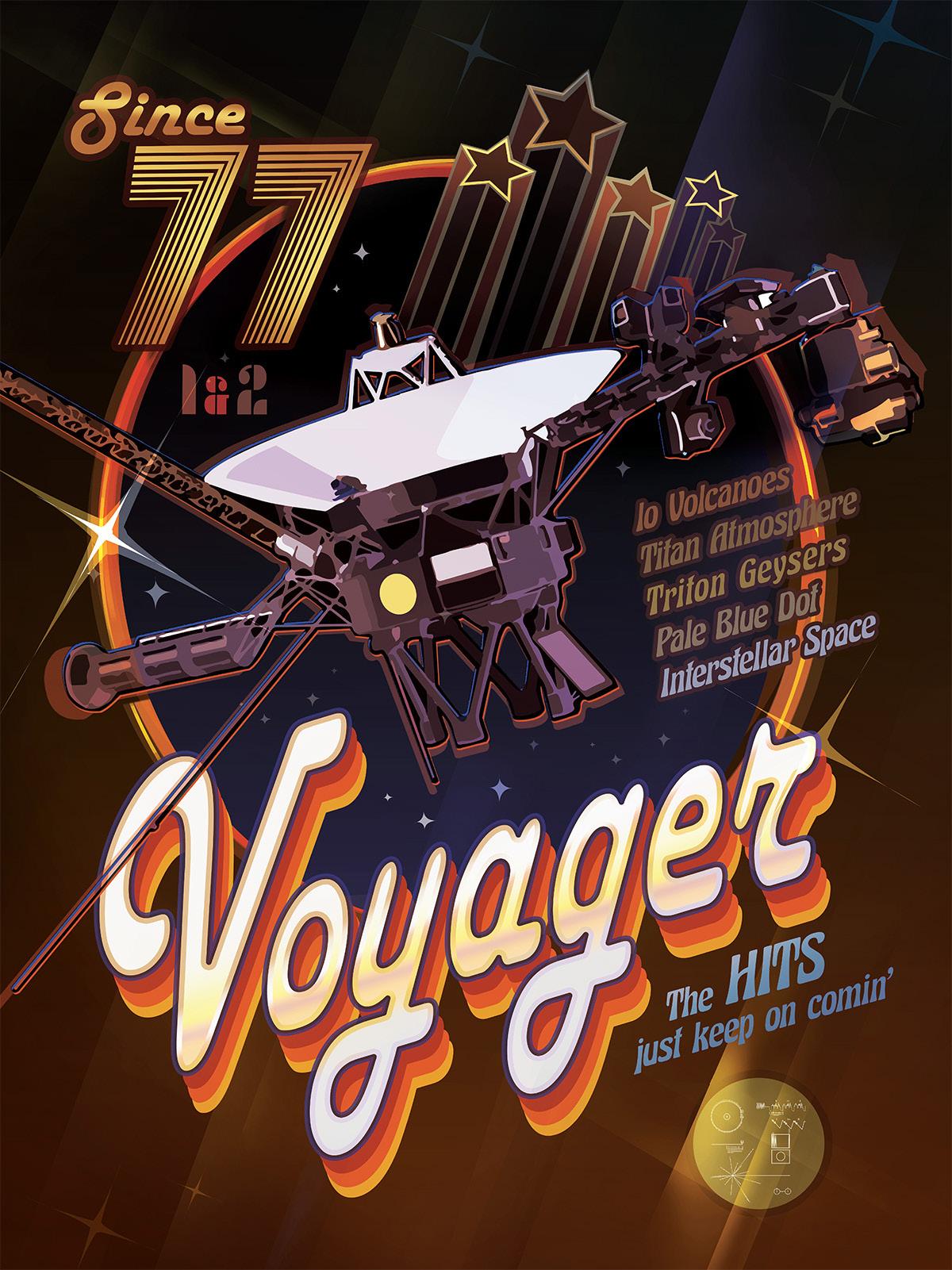
Voyager 1 is currently the farthest spacecraft from Earth at about 24 billion kilometres, while Voyager 2 has travelled more than 20 billion kilometres. Both have now left the solar system and are in interstellar space, making them the only spacecraft to operate beyond the heliosphere, the sun’s bubble of magnetic fields and particles that extends well beyond the orbit of Pluto.
Though it launched second, Voyager 1 was so called because it was to reach Jupiter and Saturn first — in March 1979 and November 1980, respectively — before exiting the plane of the planets where it took the famous “Pale Blue Dot” photo.
Voyager 2 visited four planets: Jupiter in July 1979, Saturn in August 1981, Uranus in January 1986 and Neptune in August 1989.
Voyager’s discoveries are the stuff of legend among planetary scientists, many of whom still rely on the unique images from the spacecrafts’ now antiquated wide-angle and narrow-angle digital cameras.
The probes have taken photos of the volcanoes on Jupiter’s moon Io, and discovered that Jupiter’s Great Red Spot is an Earth-size storm. They studied Saturn’s rings; saw the giant moon Titan’s thick, Earthlike atmosphere; and revealed the tiny moon Enceladus to be geologically active.
Voyager 2 then set off by itself to check out Uranus and Neptune. The spacecraft’s firstever images of Uranus revealed dark rings, the planet’s tilted magnetic field and its geologically active moon Miranda. Neptune, meanwhile, was also discovered to have rings and many more moons than scientists initially thought. We also got to see Triton, a geologically active moon that is orbiting “backward” and, like Pluto, is now believed to be a captured dwarf planet from the Kuiper Belt.
In addition to making groundbreaking discoveries, the Voyager mission helped scientists determine what merited deeper exploration. The mission revealed Jupiter to be an incredibly complex planet, thus spurring NASA to launch the Galileo mission in 1989 and the Juno mission in 2011. The Voyager probes’ work also helped inspire the iconic Cassini mission to Saturn.
the two probes are alone on their cosmic treks
Voyager 1’s close flyby of Saturn’s largest moon Titan was the catalyst that justified the amazing Cassini mission. Cassini’s Huygens probe successfully parachuted onto the surface of Titan in 2005 and sent back an incredible video. This was the first landing ever accomplished in the outer Solar System and the first landing on a moon other than Earth’s Moon.
Voyager 2 has also been a catalyst for investigations into the role of the ice giant planets — not only in the solar system, but also in distant star systems, since most of the exoplanets found so far are roughly the size of Neptune and Uranus.
The big question is, how much longer will the Voyagers last?
Despite the recent communications near disaster, both the intrepid spaceships are still communicating with NASA’s Deep Space Network (which itself was created to communicate with Voyager 2 at Uranus and Neptune), receiving routine commands and occasionally beaming data and images back to Earth from its 1970s era computers. “We’re looking forward to getting data for probably another five or six years,” Stamatios Krimigis, principal investigator for the Voyager Interstellar
Mission, said during a news conference held in July.
To achieve the miracle of keeping these spacecraft alive in the frigid and far reaches of space, NASA is getting creative with the power supply and instruments. Over time, the Voyager team has commanded the probes to turn off instrument heaters and other nonessential systems.

Both Voyagers are nuclear powered, using radioisotope thermoelectric generators. The power pack loses 4 watts per year as the plutonium it relies on slowly decays and its heat is converted into electricity.
Each spacecraft’s power pack carries radioactive plutonium-238. As the isotope decays, it releases energy that is converted into electricity by three radioisotope thermoelectric generators (RTGs). At launch, the RTGs provided each spacecraft with 450 watts of power. Now, they’re producing less than half that amount and their electrical output is decaying by four watts each year. NASA says that it takes about 200 watts to send signals back to Earth, and they only have about five to six watts of power margin on each spacecraft.
In the deep cold soak of outer space, the key challenge is to keep the propellant lines warm above 2 degrees Celsius so the aiming system continues to work.
Voyager 2 has begun using a small backup power reserve, which will enable the spacecraft to keep from shutting down another science instrument until 2026. The power reserve was designed as a safety mechanism to protect the instruments in case the flow of electricity changes significantly on the spacecraft. Now that back-up power is being used to keep Voyager 2’s instruments up and running.
The rocket scientists were thrilled to discover that the instruments recalibrated to become more sensitive in their data collection because some of the detectors operate better when colder.
As the sole extensions of humanity outside the heliosphere’s protective bubble, the two probes are alone on their cosmic treks as they travel in different directions.
Given the age of the two spacecraft it is inevitable that a small failure could ultimately lead to losing communication completely, even
if it still has power. But however long Voyager 1 and 2 continue to operate, the Voyager mission is already a massive success. The original mission was to perform flybys of the solar system’s gas planets and their moons and beam back data to Earth — tasks that both spacecraft had completed by 1989.

Now 35 years later, around the mid-to late 2020s, the probes’ scientific instruments will be shut down, and eventually, the spacecraft will go cold and silent — but their journeys into interstellar space will continue indefinitely.
In around 300 years, Voyager 1 and 2 will enter the Oort cloud, the sphere of comets surrounding the solar system. About 30,000 years later, they’ll exit the neighbourhood and silently orbit the centre of the Milky Way for millions of years.
Their scientific work may be almost over, but the Voyager spacecraft have only just begun their journeys into the cosmos. And who knows – maybe some clever lifeform will find and play Voyagers’ gold plated records and look back to where they came from. j
guy@saflyermag.co.za

Jack Knight’s was not a hero’s face. Neither rugged nor square-jawed, it was, rather, over-broad in the forehead and narrow in the chin, somewhat like Fred Astaire’s or the famous screaming face on the bridge in the Edvard Munch painting. But heroes are as heroes do.

KNIGHT WAS AN AIR MAIL PILOT at the very start of the air mail, years before Charles Lindbergh was. President Warren Harding wanted to shut down the air mail, deeming it unduly dangerous and costly, unreliable and not even especially swift, since mail was flown only by day and loaded onto trains at night. The assistant postmaster general in charge of the air mail, Otto Praeger, in a bid to deflect the presidential axe, set out to demonstrate that mail could be flown through the night.
On February 22, 1921, the night of a full moon, four de Havilland DH-4s took off at dawn, two from New York and two from San Francisco. One crashed in Nevada, killing the pilot. Two westbound planes gave up in the face of a snowstorm near Chicago. By evening, one lot of eastbound mail had been delivered by Knight to Omaha, Nebraska. Bad weather lay ahead, with snow still falling between Omaha and Chicago, and the pilot who was to fly the next leg declined to continue.
Jack Knight took off instead and flew through the night, freezing cold in his open cockpit and guided by bonfires lit by postal employees and by farmers. He refuelled at Iowa City, remarking later with some understatement, “Say, if you ever want to worry your head, just try to find Iowa City on a dark night with a good snow and fog hanging around.”
By morning he had reached Chicago, where another aeroplane took his cargo and continued to the east coast, completing the transcontinental trip in 33 hours.
Knight had no radio. He navigated by a combination of dead reckoning and pilotage. Pilotage means flying from one visible landmark to another, but in the midwestern night before rural electrification, few visible things were to be found. Dead reckoning means calculating your location from time, speed and direction of travel. With dead reckoning, here was seldom exact,
but it was good enough that Lindbergh made his landfall in Ireland, after 20 hours over water, right where he expected to.

In principle, you would dead-reckon from one unmistakable landmark to another; but alas, from time to time the next landmark would fail to appear, and that would “worry your head.” You would get the tense, creepy feeling of being lost in the sky. It was different from being lost on the ground; in the sky, there was a deadline set by fuel. No one liked the feeling, but still, it had a value: It reminded you that what you were doing was dangerous.
The night mail officially began operations in 1924. To provide its pilots with the landmarks that the countryside begrudged them, the Postal Service set up the first airway system. It was defined by electric beacon lights; Jack Knight helped lay them out.
At one time 1,500 beacons marked 18,000 miles of airways. I followed them across Arizona in a Cessna 175 in the 1960s, but by that time the system was being dismantled. There was something sweet and warm in a beacon winking at you from a distant mountaintop, something
that the chill abstraction of a radio signal lacked. The only remnant of the beacon airways today is a string of 17 lights in the mountains of western Montana, maintained as a historical artifact by the state.
The beacon lights were supplanted by fourcourse “Adcock ranges.” Four-course ranges were low-frequency beacons like NDBs, usually located near airports, and set up to broadcast in four lobes roughly corresponding to the quadrants of a circle. In one lobe and the one opposite it the signal was the Morse letter A, dot-dash; the other two were dash-dot, N. Within the narrow “courses” where the lobes overlapped you heard a continuous tone. Chains of these courses formed airways; some were aligned with runways to provide primitive instrument approaches.
As you may imagine, to fly a range approach required a firm grip on oneself and a welldeveloped ability to transform random and obscure symbols into a mental map of the world and where you were in it.
Underlying that map was our old friend dead
Navigation, a great and noble art
reckoning. Besides calculating speed, time, distance and drift over long distances, dead reckoning also meant maintaining a sort of intuitive situational awareness on a local scale.
The four-course range was not just a bewildering cacophony of dots and dashes but an inner space in which an imaginary aeroplane, felt rather than seen, crept along. VOR, the
successor to the four-course ranges, preserved and augmented the airways system they had defined. It replaced the aural with the visual and made navigation infinitely more precise. It also made IFR flying more expensive because, for the first time, you needed something more than a simple audio receiver and headphones in the cockpit.

GPS, and the complex digital processing it makes possible, has changed all that. A drug seductive to even the fiercest Luddite, GPS
makes skill, knowledge and intuition obsolete. It makes us at once infants and gods. Observer and observed, we watch from on high as our icon creeps across the map. With GPS, there is no longer such a thing as “lost”.
Navigation, a great and noble art whose traditions stretch back into prehistory, has been replaced by a computer game. Its tools, the products of so much experience, ingenuity, daring and self-sacrifice, will soon become curiosities; its methods and skills, so recently the barrier separating life from death, will be forgotten.
Jack Knight’s night flight more than a hundred years ago must be, to new pilots who have trained in the era of GPS, all but unimaginable. His aeroplane, a two-place biplane designed during the First World War and modified to replace the front cockpit with a hold for 400 pounds of mail, could do 100 knots or so and stay aloft for nearly four hours. The cold, the darkness, the din of the 400-hp Liberty engine far out in front and the endless peering into darkness unrewarded for long periods by any answering light – these were trials to which we
modern pilots, snug and cozy in airtight cockpits and ministered to by a crew of digital assistants, weather forecasters and ground controllers, are strangers.
We are much better off, but we have also forfeited something: an adventurous life in which anxiety and relief alternated like the beating of a heart.
Beryl Markham, one of the pilots of that rash and risky era, foresaw what was to come, and in her autobiographical ‘West With the Night’ she wrote of the future we now inhabit:
By then men will have forgotten how to fly; they will be passengers on machines whose conductors are carefully promoted to a familiarity with labelled buttons, and in whose minds the knowledge of the sky and the wind and the way of the weather will be as extraneous as passing fiction.












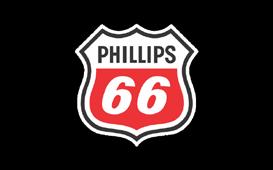
ASK A DOZEN PEOPLE WHY the sky is blue and you will get a dozen woolly answers about refraction and reflection but not one honest, I don’t know. So nobody learns anything.
And now ask a dozen pilots why Madame Beech or Mr Piper put a rudder on their aircraft and you will hear all sorts of bull – but very few will answer, it’s mainly to counteract design problems like aileron drag and P factor. Much more on this later.
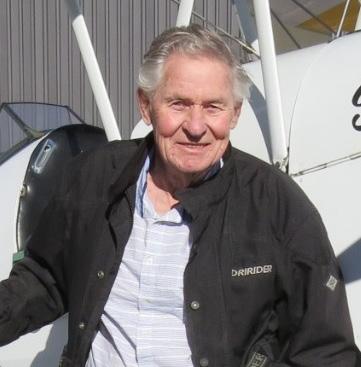
Back in the days when Pilate was only a student, I wrote a slender document called “Patter for Instructors”, or something. It worked well –instructors liked it and so did the DCA (which later became the CAA). So I updated it a bit and most of the flying schools in South Africa copied it – which was fine – actually quite flattering. I was trying to make a living from training pilots –not selling bits of paper.
Forty years later, when I sold my flying school, three of the instructors cosied up to the CAA and decided to turn this little ten-page book into something really impressive. They formed committees and sub-committees to advise each other. They were determined to improve my slender guide and make it so comprehensive that no one would ever use it.
They turned it into an AIC – 333 pages of dense text with the impressive name DOC NO: DP/ FTD/TS/05/009 Flight Instructor’s Training Procedures, Revision No: 07. DATE AMENDED: 26 October 2009
Imagine coming back to your bachelor pad, after a hard day at the office, to study this by candlelight during load-shedding. I believe this boring document, with its paragraphs and sub-paragraphs, sub-subparagraphs and roman numerals, has single-handedly caused our terrible shortage of Instructors.
The exercise – Effects of Controls – from a single page, now takes up 30 pages and includes things like the effects of carb-heat. Why not chuck in cabin-heat and the door handle as well? They both have just as much potential to kill you if you get them wrong.
They missed the point of the whole thing. The document was meant to teach new instructors the best way of training pedestrians in the art of handling basic aeroplanes.
Which reminds me – a pupe did indeed try to kill me by getting the cabin-heat wrong. So perhaps I should revise my thinking on the whole thing. Anyhow, here’s what happened.
We Saffers are ever reluctant to use the magic words, I don’t know.
our terrible shortage of Instructors
I was training a group of enthusiasts at Swellendam. They were a good bunch and we were having huge fun playing with rudimentary aeroplanes away from controlled airspace. Honest flying.
But I need to tell you about this one pupe who simply wasn’t hacking it. His name was Hendrik. He was a hell of a decent guy so I am doubly reluctant to speak ill of him –but facts is facts. If I describe the classic village idiot sitting on a wall with straw in his hair, taxi-door ears, rabbit teeth and the puzzled demeanour of a sheep who has found his path impeded by a mangelwurzel, you will have a picture of Hendrik.
Poor guy – not his fault, that’s simply the way they had kitted him out at birth. Those who constructed him, both mentally and physically, did not have aeroplanes in mind at the design stage.

Anyhow I am doing circuits and bumps with him in a delightful little Piper Cruiser, and they are not going well. While Hendrik’s body was in the aircraft, his mind was sitting on a stone in the sun, chewing a piece of grass.
We were doing a glide approach on runway 33 (the uphill one) when all the cheese-holes became aligned with the planets. In those days, most training landings were from glide approaches that started at 1000 ft on base.
In the last few seconds Hendrick had done two things wrong. He had started the glide too early, and he had forgotten to use carb-heat.
Now before going on, I should tell you that the Cruiser has fore-and-aft seating – like a Cub. The instructor sits in the rear and has access to only three controls – the stick, the rudder and the throttle. Apart from this, you can see little more than the back of the pupe’s head unless you loosen your seat-belt and move forward to peer over his shoulder.
So although a Cruiser is huge fun, it’s not the ideal training aeroplane.
Anyhow, there we are in a glide with no carbheat – so the engine is going to stop fairly soon. This would be fine if we were able to make it to the field – but we weren’t.
Nothing happens, so I repeat my request a little louder. We didn’t use head-sets – we just shouted. But the comparative silence of a glide approach made comms pretty easy. It wasn’t

that he couldn’t hear me – it just wasn’t getting through. His mind was still sitting in the sun chewing grass.
“Carb heat!” I shout, and tap him on the shoulder.
He is made of rubber. His head twists round 180 degrees, like a turkey, and he seems surprised to find someone else in his vicinity.
I point at the panel and repeat my instruction slowly as if talking to a snotty infant.
He faces ahead again and yanks out the mixture.
The engine noises cease, and the prop slows to a gentle windmill.
“Not that one,” I screech. So he pulls another knob that works the cabin-heat. But leaves the mixture out.
I seldom shout at a pupe, but this calls for decisive action, so I bellow at him to push the red knob – the mixture – in.
There is only one other red knob in the cockpit – it’s the throttle on the left sidewall, just below the window. So that’s what he goes for. The only thing that changes is the expression on his face as he again swivels his head round to give me a helpless look. Of course the throttle makes not a damn of difference, because the mixture has killed the engine.

I grab the controls and we skim over the dirt road and plonk down in a boulder-strewn area 50 yards short of the runway. And stop almost immediately.
This exercise is both critically important, and boringly obvious. It’s like learning to swim – you had better get it right, but once you have the basics of flying, or swimming, you may never need to give them another thought unless you go in for instruction, aerobatics or aquatic sport.
There is no damage, but I have to get out and swing the prop to get us to the numbers – and thence to the hangar.
Ask the average commercial, or even airline pilot, to describe the effects of the controls, and you will get an old-fashioned look and some vague muttering. Or they might laughingly tell you about “the houses”. Push the stick forward and the houses get bigger. Pull it back and the houses get smaller. Pull it further back, and the houses get bigger again.
Sorry about the side-track. I was just letting you know that under the ‘Effects of the Controls’ we will not cover all the controls – like that ridiculous AIC. We only do the three main flying controls. We cover the flaps separately, and the rest as they come up during the training.
Actually, this is so important (as was your first swimming lesson) that I am going to walk you through the pre-flight briefing and patter – before we look at the actual flying exercise.
Remember the golden rule:
Tell me and I will forget Show me and I will remember Involve me and I will understand
So you are going to do all three. You will tell her about the effects of the three main flying controls, using a model aircraft in your briefing room. Next, you are going to demonstrate how they work, in the real aircraft. And finally you are going to involve her by letting her fly herself and try out the controls one at a time.
By the way, patter means the words you use in the air, as you talk her through the exercise. For some exercises you need to learn it pretty much by heart otherwise the aircraft is likely to complete the exercise while you are stumbling along behind it groping for the right words.
Remember that the aeroplane is a terrible classroom – because of the noise, the distractions and the lack of face-to-face contact. For this reason – try to avoid teaching in the cockpit. Most of the teaching and learning should happen in the classroom or the briefing room.
Well they are both wrong – you don’t need to be a thief, a street hawker, circus barker, comedian or entertainer to use patter – you need to be a top-line flying instructor.
Remember to have the model pointing away from the pupe, and to start each control response from straight and level flight.
The stuff in blue is a reminder of what to say in the briefing and is also the actual patter you will use in the aircraft.
We will start with the PRIMARY effects of the three main flying controls.
This warrants a bit of discussion. Mr Chambers’ splendid dictionary claims that patter is: chatter, gabble, jabber, line, pitch, jargon, monologue.
Madame Merriam-Webster is a little more verbose on the subject, she thinks ‘patter’ means:
• a specialized lingo: especially: the jargon of criminals (such as thieves)
• the spiel of a street hawker or of a circus barker
• empty chattering talk
• the rapid-fire talk of a comedian
• the talk with which an entertainer accompanies a routine
• When I ease the stick back – like this, the elevator on the tail moves up, this decreases lift there, so the tail moves down and the nose moves in the direction of the cabin roof.
• When I ease the stick forward – like this, the elevator on the tail moves down increasing the lift there, so the tail moves up and the nose moves in the direction of the undercarriage.
• This movement is known as pitching.
• The aircraft pitches about its lateral axis –which runs from wingtip to wingtip.
• When I ease the stick to the right – like this, the right aileron moves up, decreasing the lift on the right wing, while the left aileron moves down, increasing the lift there. So the aircraft ‘banks’ to the right, with the right wingtip moving in the direction of the undercarriage. Obviously, if you move the stick to the left the aircraft ‘banks’ that way.
the aeroplane is a terrible classroom
• This ‘banking’ movement is known as rolling
• The aircraft rolls about its longitudinal axis which runs from the spinner, between our seats to the tail.
be more elegant to say that the nose moves towards the undercarriage, or the wing tip. But that’s not strictly correct – it doesn’t move one millimetre towards anything.
• When I press on the right rudder pedal – like this, the rudder on the tail moves to the right. This causes the tail to move to the left and the nose moves in the direction of the right wingtip. Using left rudder causes the tail to move to the right and the nose moves in the direction of the left wingtip.
• This movement is known as yawing
• The aircraft yaws about its vertical axis which runs from the undercarriage, up between our seats and to the cabin roof.
Notice that I use rather clumsy terms about the nose moving ‘in the direction of’ the undercarriage, the cabin roof or a wingtip. This is necessary because the controls always have the same effect relative to the aircraft.
For instance, if you are banked in a turn and you ease the stick back, the nose will not move vertically up – it will still move in the direction of the cabin roof. In other words, it will tend to pull the aircraft into the turn.
If you venture into aerobatics one day and you have the aircraft inverted, easing the stick back will still move the nose in the direction of the cabin roof – which will be down.
Also, if you are banked, say to the right, and you use right rudder, the nose will move in the direction of the right wingtip – in other words it will move down and cause you to lose height.
Finally, in defence of the clumsy phrase, it would
So remember – the PRIMARY effects of the controls are all relative to the aircraft – not relative to your main reference – the horizon.
Unfortunately the ailerons and the rudder both have FURTHER effects, meaning an additional effect that’s not necessarily desirable – it’s just a fact that you must be aware of and make corrections for.
Remember that if you move the stick to the right, the right aileron moves up – reducing the lift on the right wing, and also reducing the drag. At the same time the left aileron moves down, causing more lift and more drag. This differential drag will cause the nose to move to the left.
So, although you have moved the stick to the right – the nose will move in the direction of the drag on the left wing.
But this only happens when the ailerons are deflected, so if you centralise the ailerons, as you do once established in a turn, then that differential drag disappears.
Don’t worry too much about it at the moment – we will deal with it again later under a coordination exercise.
The further effects of the rudder
Remember that the right rudder moves the nose in the direction of the wingtip – so the nose yaws to the right. This means the right wing slows
ailerons and the rudder both have FURTHER effects
down and the left wing, on the outside of the turn, speeds up and gets more lift. The result is that as the aircraft yaws to the right it also banks to the right.








All a bit tough to get your head around? So here’s a table to make it easier:
Okay – so that’s what you teach in the lecture hall, and in your briefing. Once you are in the air you just need to remind her by using key words as you patter her through the exercises.



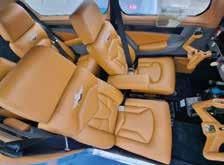




Do it properly and it works beautifully.

And I haven’t yet explained why aeroplanes need a rudder. That, and some more patter next time.


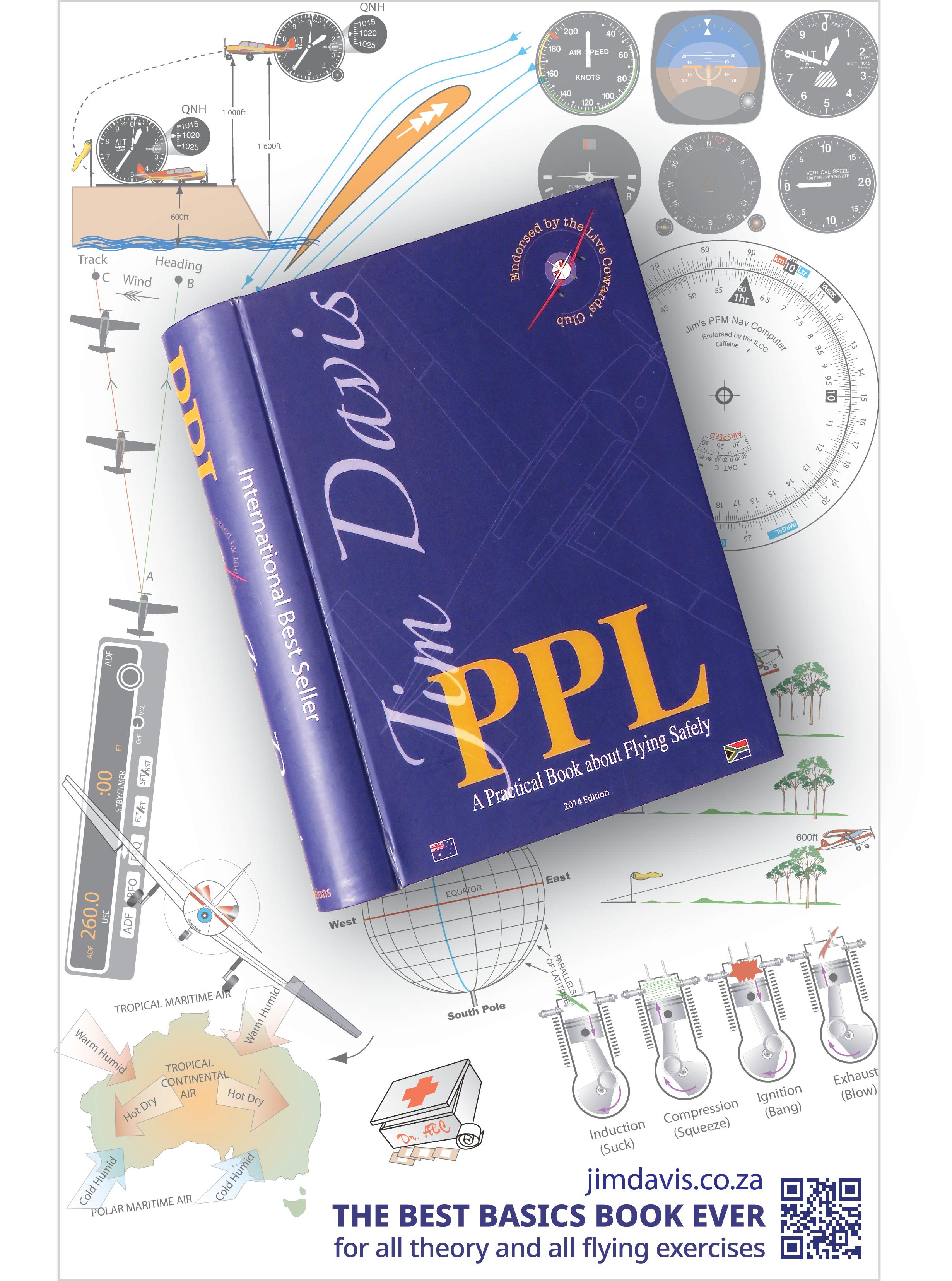
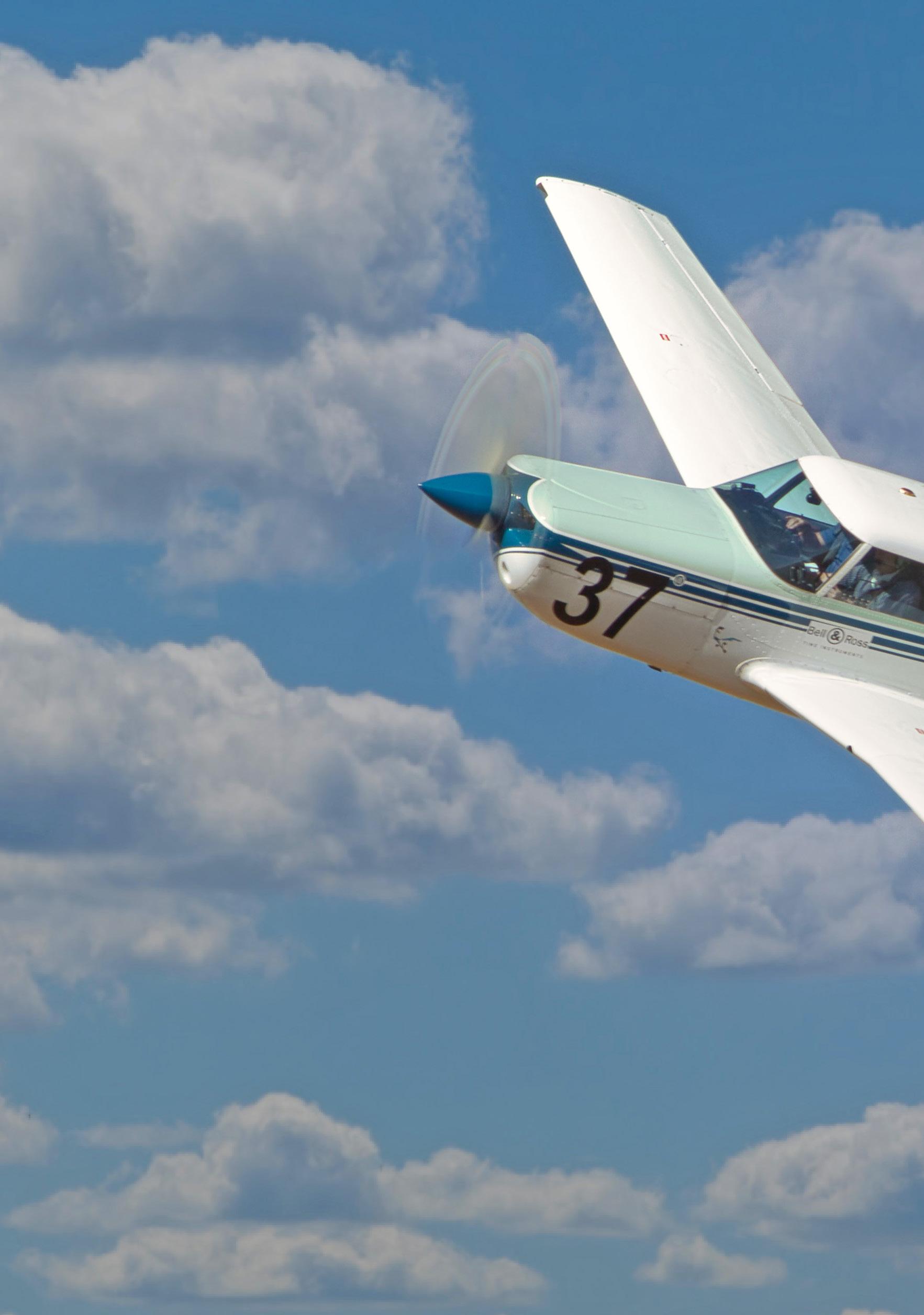

SOUTH AFRICA HAS ONE of the few remaining Comanche 400s and the type of pilots who have owned it say much about its character.
The subject of this flight test is ZS-DZZ and it was first owned by the indomitable Victor Smith – famous for his “Open Cockpit over Africa” exploits. It was then owned by South Africa’s Formula 1 champion Dave Charlton and is currently owned by Presidents Trophy Air Race uber-competitor, John Sayers. These are all pilots capable of taming the 400 galloping horses bolted onto the nose of Piper’s most svelte design.
When asked why they liked the Comanche 400 so much, both Dave Charlton and John Sayers have much the same answer – “Because it gives Baron speeds, with the cost and maintenance of just one engine.”
John Sayers has campaigned ZS-DZZ across many Presidents Trophy Air Races. A quick search through race results shows John roaring around the course at 195 knots – beating a number of Baron 55s. ‘nuff said.
The 400 sure is capable – but what’s it like to fly? Is it a rampaging monster - or a purring pussycat?

There is a popular saying that you can’t have a plane with too much power. Piper put that to the test when they increased the engine in their beautiful Comanche from 180 hp to a stonking 400 hp. So – does it have too much power?
Victor never got to full throttle
Jim Davis shares his insights into this extraordinary muscle plane.
If you listen to a pod of Piper pundits discussing their favourite aircraft. Some will insist that the Comanche is the greatest aeroplane of all time.
Comanches came with varying amounts of zing–anything from 180 to 400 horsepower. Many aircraft grow with time, but Piper planned the growth of the Comanches from day one. Here’s a 1956 news item from Lock Haven:
“The new four-seater Comanche might almost be mistaken for a wartime fighter because it is an all-metal, beautifully streamlined aircraft with retractable tricycle landing gear and an almost fighter-like cockpit canopy. The prototype is powered by a 180 hp Lycoming engine but future models could have various engines up to 400 hp, giving the Comanche something akin to the performance of a wartime fighter too."
This is a fascinating forecast because it shows the excellent relationship William T Piper had with Lycoming. There was no such thing as a 400 hp Lycoming at that time – so Piper got them to build it specially for his Comanche.
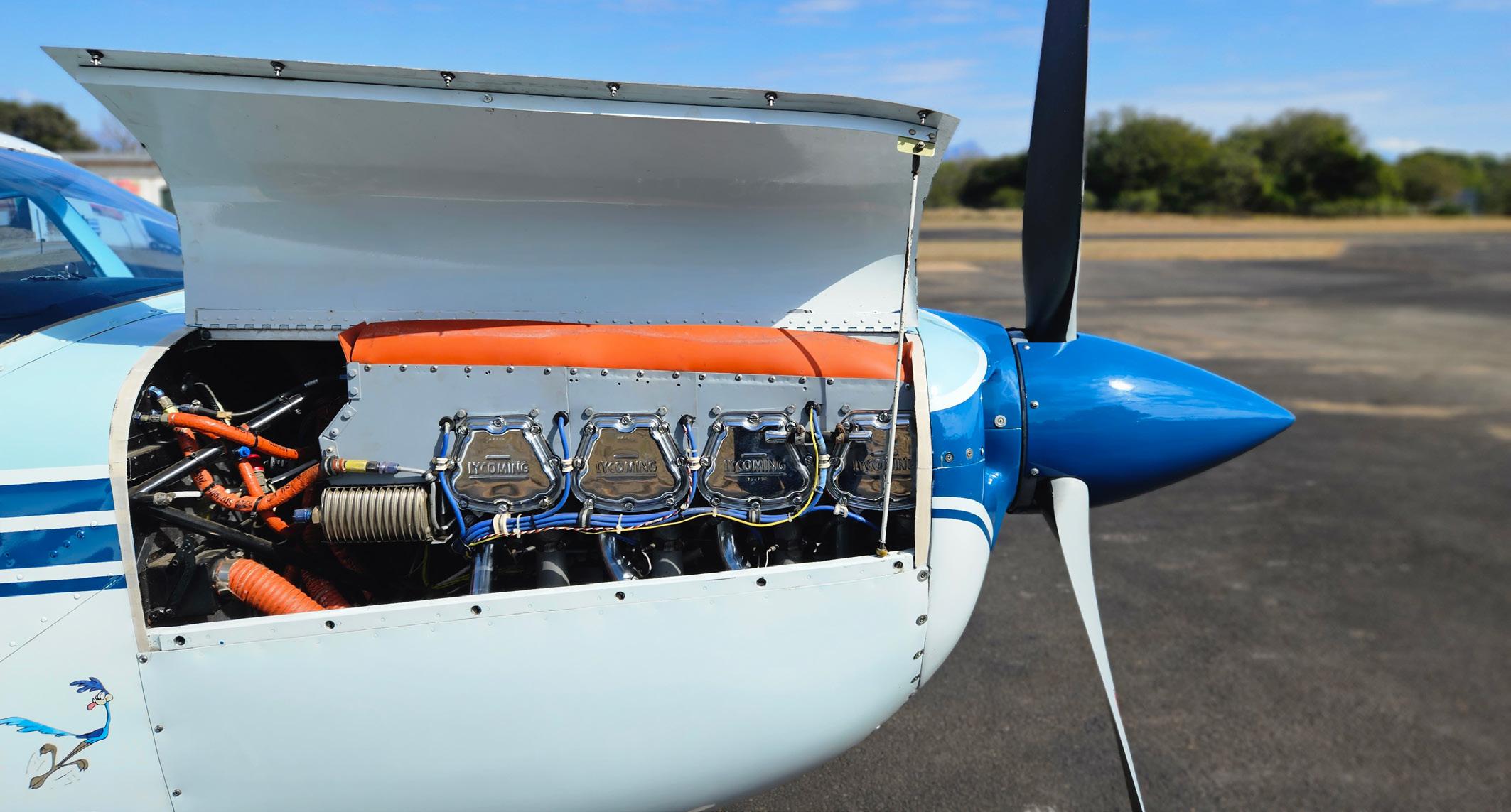
Unfortunately that didn’t turn out too well. The
400 was a magnificent aeroplane, but the market wasn’t ready for it. Also it had an undeserved reputation for hot-start problems. So only 148 were built, making it a pretty rare bird.
I was lucky enough to fly a 400 from time to time. Victor Smith owned ZS-DZZ, one of at that time only two in Africa. I had a little flying school at the old airport at George. Victor would phone me, “Davis, I need to do some instrument flying. Meet me at my hangar at 2.35.”
This was not a request. It was a military-type order which meant that I had to drop whatever I was doing and either fly or drive the ten miles to Victor’s little grass strip on the edge of the Serpentine River at Wilderness.
Of course, Victor didn’t want to do instrument flying – he wanted me to come and play aeries with him. I suspect the phone call was to convince his wife, Betty, that this was important aviation stuff that had to be complied with.
Comanches handle like Spitfires and they look magnificent. I can’t think of a prettier aeroplane
than a Comanche with tip-tanks. And there’s nothing that will take you that far in so much comfort and style.
As you pull a Comanche out of the hangar the first thing you will notice is the big nosewheel – the same size as the mains. Not like the baggage trolly wheel on the Bonny and the 210.
A Comanche sits low and solid on the ground, and she handles rough surfaces and crosswinds very comfortably.

After pre-flighting you step up on to the wing and then deep down into the sports-car like cabin and sink into the red leather upholstery. All Comanche cockpits smell of avgas and luxury.

When that big 400 Lycoming is cold she starts instantly and the three blades shudder into a blur as the eight cylinders come alive with a deep throated growl.
Takeoff in a 400 is something else. We would sit at the threshold of this little grass strip and Victor would take his feet off the brakes and start winding in the vernier throttle. There’s no Maserati howl from the engine, it’s more of the rumble that you get from a big-bore V8.
The aeroplane doesn’t leap from the block like a race-horse out of the gate. It just pushes you firmly in the back with an ever increasing force as the rumble gets louder.
Victor never got to full throttle on the ground –he would still be winding in the power as we flashed across the river and watched the beach and the palm trees sinking below us.
Before takeoff in the 400 make sure that you wind in plenty of right rudder trim – you will need it by the time you get to full throttle. Acceleration may be rapid, but don’t raise the nosewheel too early – she likes to accelerate level.
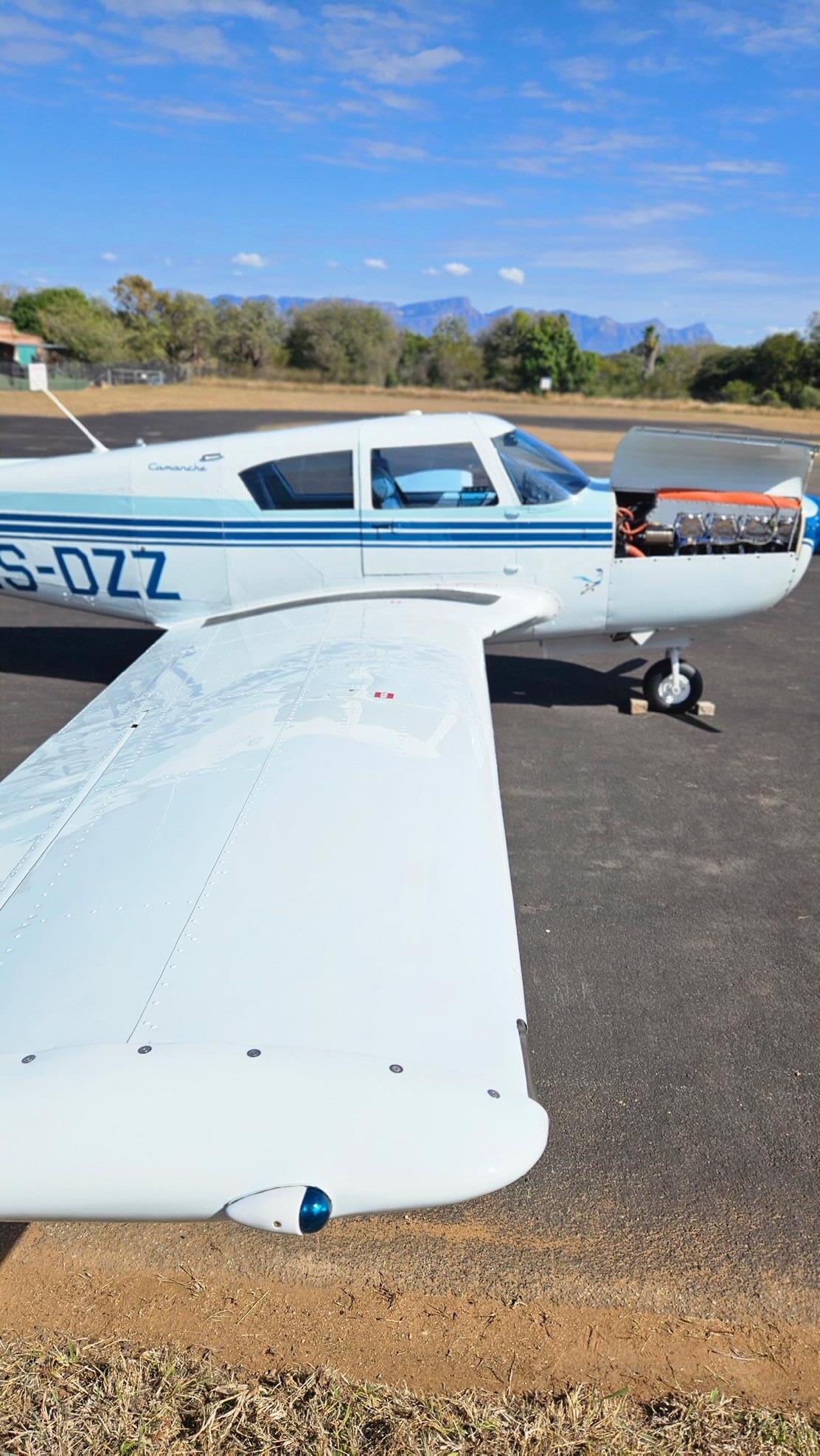
She’s ready to fly at 70 -75 mph and will climb strongly as soon as she leaves the ground. There is none of that wallowing that you get with a heavy Mooney, Bonanza or Centurion.
As you pull up the undercarriage, retract flap and reduce power, she continues to climb and accelerate solidly. Comanches don’t mess around when they leave the ground.
You can’t expect a 60-year-old machine to be quiet by modern standards. You can get by
without head-phones but it’s not fun. A lot of the noise comes through the windscreen, and the optional, thicker, one-piece, curved windscreen is much quieter.
Like a sports car, the Comanche is a wonderful aircraft to play with. The controls are crisp and well-balanced at normal speeds. She sails round steep turns without adding power and without seeming to slow down. But at very low speeds she does wallow a bit and needs plenty of rudder.
Stalls are gentle and straightforward as long as you have the ball in the middle. In an unbalanced stall she will drop a wing, and the
a very soft spot for
rudder is slow to correct this until you have a bit of airspeed – which means losing a fair amount of height. It’s also easy to induce a secondary stall if you try to recover too quickly. But inadvertent stalls are unlikely, because you are warned by a strong aerodynamic buffet.

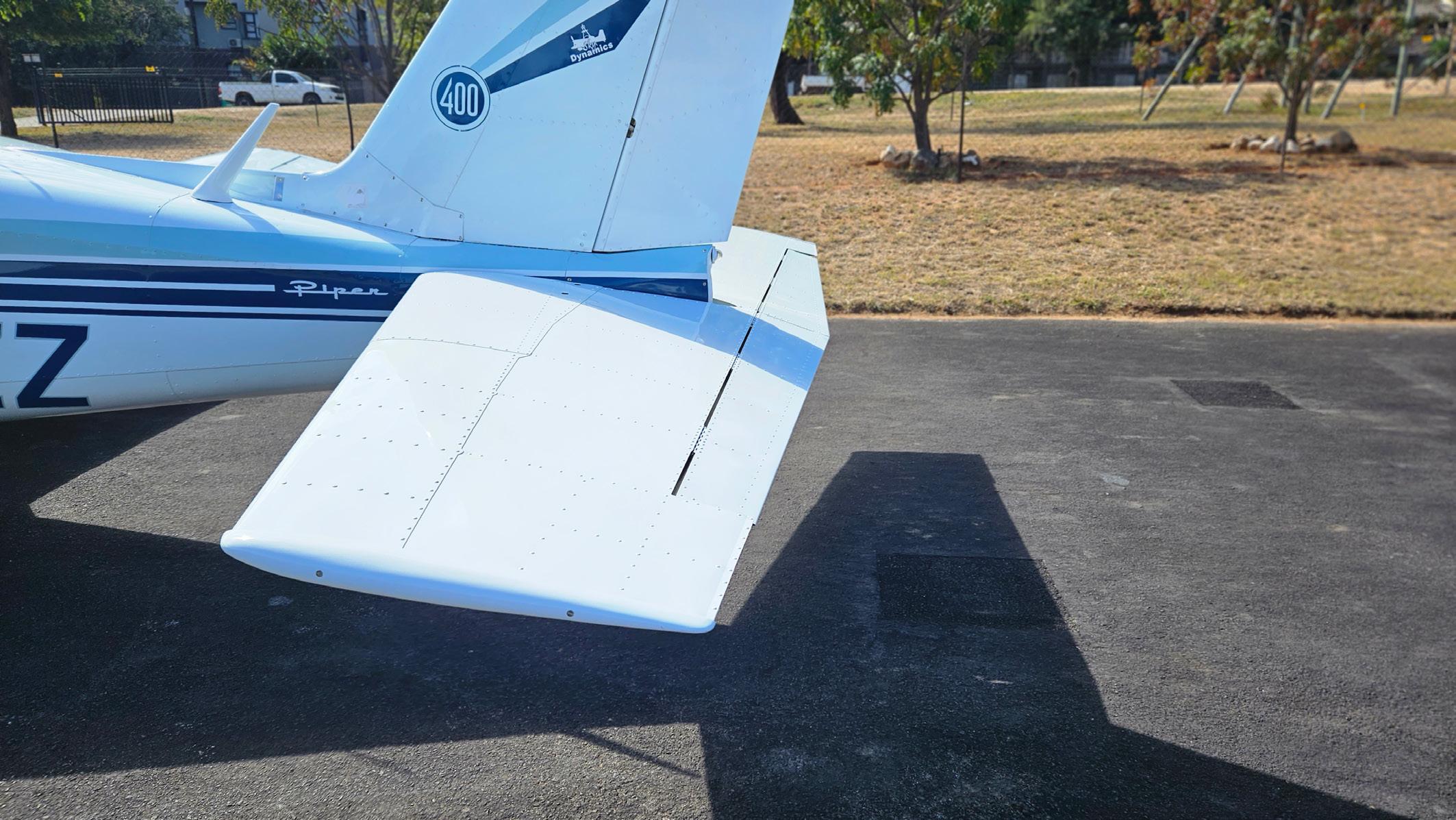
If you enjoy doing circuits and bumps you will love the Comanche. Her raw power keeps you busy round the circuit. And when you get the knack of landing a Comanche it’s an absolute delight. Ground-effect helps you to squeak the main wheels on, with that long nose so high you can’t see the runway.
Comanche flaps can give you a nasty fright if they are not maintained properly. I have twice had a Comanche try to roll on me when retracting the flaps. It’s possible for one to stick on its way up (not going down). This leaves you with one coming up and the other staying down. Once
you know about it, there is no problem. In fact Comanches taught me a good habit – to keep my hand on the flap (and undercarriage) selector until the job is done. If a Comanche starts to roll as you retract the flaps, just move the selector down and the problem is over.

Some say it is a bitch to land. If you have a forward CofG she can run out of elevator during the hold off. But so can a 182, a Cherokee Six, a Seneca and a Beech Sundowner. That’s why Piper gave us electric trim. Simply put your thumb on the button and roll it back as you round out and she touches down like a fairy.
If you need to go-around at the last minute then you have got to be strong with the forward pressure – but again, you just press the trim button and your problems melt away.

And talking of CofG, Comanches never have that Bonanza nonsense of sitting on their tails. Load it any way you like and the CofG always stays within the envelope.
Flying DZZ with Victor, our ‘instrument flying’ would consist of, “let’s see how quickly we can get to 10,000ft”. Then Victor would say, “Look at this” as he levelled off. And we would watch the needle move steadily round to the 220 mph
mark in the TAS window of the ASI. Or he might say, “I think I need to practice a few stalls and steep turns – would you like to have a go first?” Then sometimes we found it necessary to whip over the Outeniqua mountains to Oudtshoorn for a couple of practice forced landings, and some circuits and bumps.
Perhaps this is a good place to tell you that although the Comanche is seen as a hot-ship, this is a largely undeserved reputation. All the Comanches fly like proper aeroplanes. Certainly, if you pull them too tight in a turn, without enough airspeed, they will shudder and flick. But so will any self-respecting aircraft. Maybe not a Cub or a Colt, but then if a pilot ignores the stall warning and the shudder, should he really be allowed out on his own?
A Comanche is just an ordinary aeroplane. There’s no need to be frightened of it – treat it with respect and it will reward you in spades.
When we came back to his little strip of grass next to the river, it never seemed too short. We would rumble over the reeds at the edge of the lake with full flaps at 75 mph and sink gently into the grass at the threshold. Mostly we didn’t
need brakes because Victor knew how to fly an aeroplane.
Wonderful times in a spectacular aircraft.
You may be wondering why such a brilliant aircraft should go out of production. It’s a sad story. [queue ominous music please].
1972, enter stage left the villain of the piece – Agnes. She was the worst hurricane in American history. She twisted her way up from Florida and dumped nearly a metre of water on Pennsylvania, killing 129 people. Mr Piper’s factory at Lockhaven was one of the casualties. The Comanche’s dies, jigs and tooling were completely wiped out.
This was the second flood, and it killed the Comanche range, including the Twin Comanche. Word has it that it was an accountant’s decision to discontinue the Comanche tribe – no red blooded pilot could ever have made that terrible mistake. j
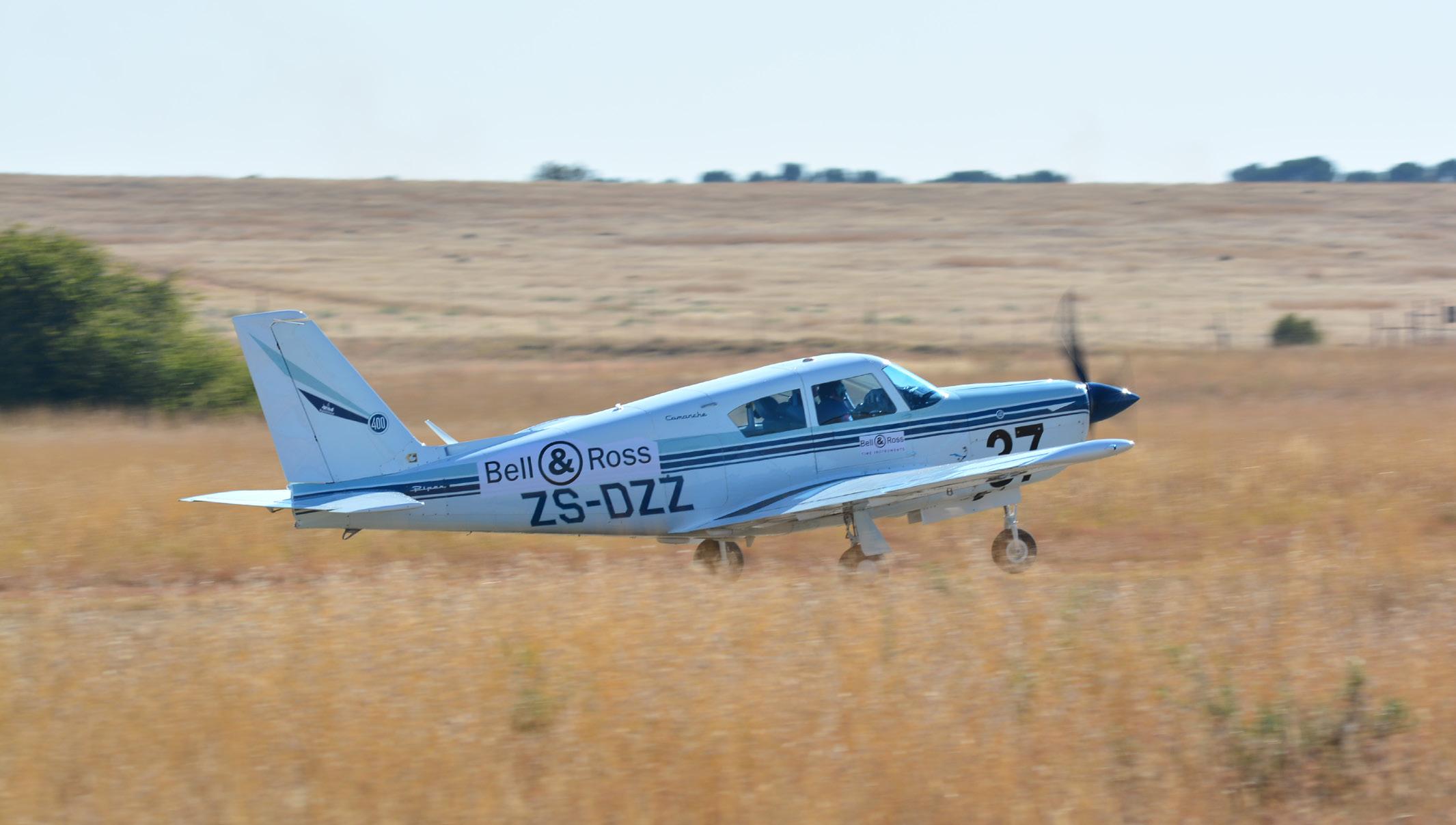
The first, and littlest Comanche, the 180, is an absolute delight. Not because it’s a great performer – it isn’t. In fact none of the single Comanches perform like modern glass aeroplanes. But then they are 50 or 60 years old. And they are roomy and comfortable. It’s like comparing an E-type Jag with the latest Porsche 911.
The 180 is nimble, and light as a feather. It has that beautifully simple carburettor, O-360 A1A Lycoming that always starts on the third compression. And even with the slightly shorter nose than its big brothers it’s still a very pretty aeroplane.

Actually one taught me an important lesson about pre-flights. It has, in common with many other Pipers, those sensible engine cowls that you can open with a couple of clips. I love it.
How can you preflight an aeroplane without looking at the engine?
Anyhow, I preflight this 180 in the gloom of a hangar without a torch. I fiddle with the plug leads, inspect the primer lines, view the engine mounts and check the exhaust flange gaskets –which are prone to blowing. It all looks fine.
We take off on a sparkling clear morning with the Outeniqua mountains so clear you can almost touch them. As we turn downwind there is a slight burning smell. Suddenly smoke billows from the engine and the slipstream whips it away over the wing. I yank the throttle back, turn towards the field, chuck out the gear and flaps and land on the cross runway – completely forgetting to turn off the fuel.
Smoke is still pouring out of the cowling so I leg it to the terminal building, come back with an extinguisher, open the cowl and give it the berries. It is all over in moments.
The frightening thing is that it was entirely my fault. If I had pre-flighted in the sunlight, or used a torch, I would have seen the massive rats’ nest in the bottom of the cowl. Sorry, fellow bunny-huggers, I don’t know what happened to the darling little furry inhabitants.
Before leaving the 180, I have to admit that speedwise, the beautiful Comanche wing is not quite as good as it looks. The boxy, short-wing, 180 Arrow is about 3 mph faster than the 180 Comanche at pretty much the same weight. But then the Comanche glides like a Grob, while the Arrow doesn’t so much glide as plummet.
But it’s a brilliant wing for long distance flying. In November 1959, my hero, Max Conrad, flew a 180 Comanche from Casablanca, in Morocco, non-stop to El Paso in Texas. That’s just short
of 7,000 miles (11,211 km) in a little 180 hp aeroplane. And that record still stands today.
The 250.
I have a very soft spot for this aircraft, probably because the 250 is the Comanche in which I have the most time.

Comanches are renowned for their long legs. In the days when my bladder could match the aeroplane’s, I flew a 250, ZS-DPL, from Rundu to George non-stop with three up and plenty of clobber. That’s 960 nautics or 1100 statutes, and we arrived with enough fuel to divert to Cape Town or PE. We may have been a tad over gross at takeoff, but the Comanche doesn’t mind in the least.
But that’s nothing. In June 1959 Max Conrad flew his 250 Comanche non-stop from Casablanca to Los Angeles. That’s 7668 miles (12,340km) breaking the record for that class. That’s Cape Town to Edinburgh and you would still be able to fly another 1300 miles.
In 1962 the 250s stopped using manual flaps and came out with electric ones. Actually I prefer the manual ones – there is nothing to go wrong, they are quick to operate, and you can tell what setting you have by resting your hand on the lever.
A thing I really like about the 250s is that they mostly came out with carburettors on their O-540-A1A5 Lycomings. That makes for easy starting and less to go wrong.

The undercarriage is also nice and simple. It has a direct mechanical linkage to a lever (Johnson bar) that’s hinged on the floor below the centre of the panel. The early ones were manual like the older Mooneys – same designer.
On the later models the lever is telescoped into a stub which you can extend to work the gear
manually should the electricity fail. It’s comforting to drop your hand to this stub and feel it rotate until the gear clonks into place.
Perhaps the 260 is the most interesting member of the tribe because it came in four flavours: Carburetted, fuel injected, six seater and turbocharged. I hasten to say that the six-seater isn’t really, it has extra windows and a couple of kids seats which take up the entire boot.
To my mind the ultimate Comanche is the turbocharged 260 six-seater with tip tanks. With enough fuel to go 2000 miles you can still put 730 lbs in the cabin.
Conrad wasn’t the only one to choose Comanches for record breaking. Sheila Scott used her 260, G-ATOY, called Myth Too, to fly solo round the world in 1971 and then go on to break more than 90 other world records, including first single engine aircraft to fly over the north pole.









Aircraft registration: ZS-PHB
Date and time of accident: 27 August 2016 1025Z
Type of aircraft: Cessna C182Q
Type of operation: Private (Part 91)
PIC license type: Private Pilot
License valid: No
PIC age: 39
PIC total hours: 342
PIC hours on type: 311
Last point of departure: Komati Gorge Lodge private strip
• This discussion is to promote safety and not to establish liability.
• CAA’s report contains padding and repetition, so in the interest of clarity, I have paraphrased extensively.
Next point of intended ldg: Komati Gorge Lodge
private strip
Location of accident site: Komati Gorge Lodge
private strip
Airfield Elevation: 4730’
Runway dimensions: 800m x 15m (2625’x50’)
Meteorological info: 050˚/08kts, 24˚C, Dew Pt: -5˚C, POB: 1+2
People injured: 0
People killed: 3
On the day before the accident, the pilot, who owned the aircraft, and a passenger took off from Nelspruit at approximately 1430Z. The aircraft was refuelled to capacity in Nelspruit. They flew to a private lodge 24km north-east of Carolina. They landed at approximately 1515Z.
The next day, at approximately 1025Z, the pilot and two passengers boarded the aircraft to conduct a short scenic flight in the area and land back at the lodge.
A witness, a guest at the lodge, saw the aircraft just after takeoff. He estimated its height at that point to be 30 feet above ground. He confirmed that he could hear the sound of the engine running, however, it sounded as though the engine was straining. He felt it was having difficulty maintaining height. Thereafter, the aircraft turned right and he heard a loud bang and saw smoke coming from the aircraft.
According to the second witness, a security guard working for the lodge, he heard the aircraft engine making an unusual noise, followed by a bang. He also noticed smoke and telephoned the lodge reception to notify
them of what he had heard. He also notified the neighbour (next door to the lodge) who also confirmed that he had heard a loud noise.
The aircraft was certified to use 100 LL grade aviation gasoline (AVGAS). It was fitted with standard tanks of which the total capacity is 61 gal / 230.91 litres.
The aircraft was refuelled to capacity at Nelspruit Airport. At approximately 1430Z, it departed Nelspruit Airport for the private lodge. The distance from Nelspruit Airport to the lodge is approximately 42 nautical miles with the estimated flight time of 45 minutes. The 45-minute flight would burn approximately 6 gal / 22.7 litres of fuel. Therefore, the total of 56 gal / 211.98 litres of usable fuel minus the 6 gal / 22.7 litres burned = 50 gal / 189.28 litres of usable fuel remaining on-board when landing at the lodge.
Note: There are no aircraft refuelling facilities available at the lodge airstrip. This is possibly the reason why the pilot decided to carry two extra jerry cans of fuel on-board the aircraft. Each of the two jerry cans carried 25 litres of fuel. No evidence was found of the aircraft being refuelled at the private lodge prior to the flight. This suggests that the aircraft took-off with a total quantity of 189.28 litres of usable fuel in the tanks and with two 25-litre jerry cans of fuel on-board.
The weight at takeoff was calculated as 2938 lbs which means it was 12 lbs below the maximum allowable takeoff weight of 2950 lbs.
The airstrip had been constructed approximately a month before the accident. The surface was uneven and was topped with soft soil.
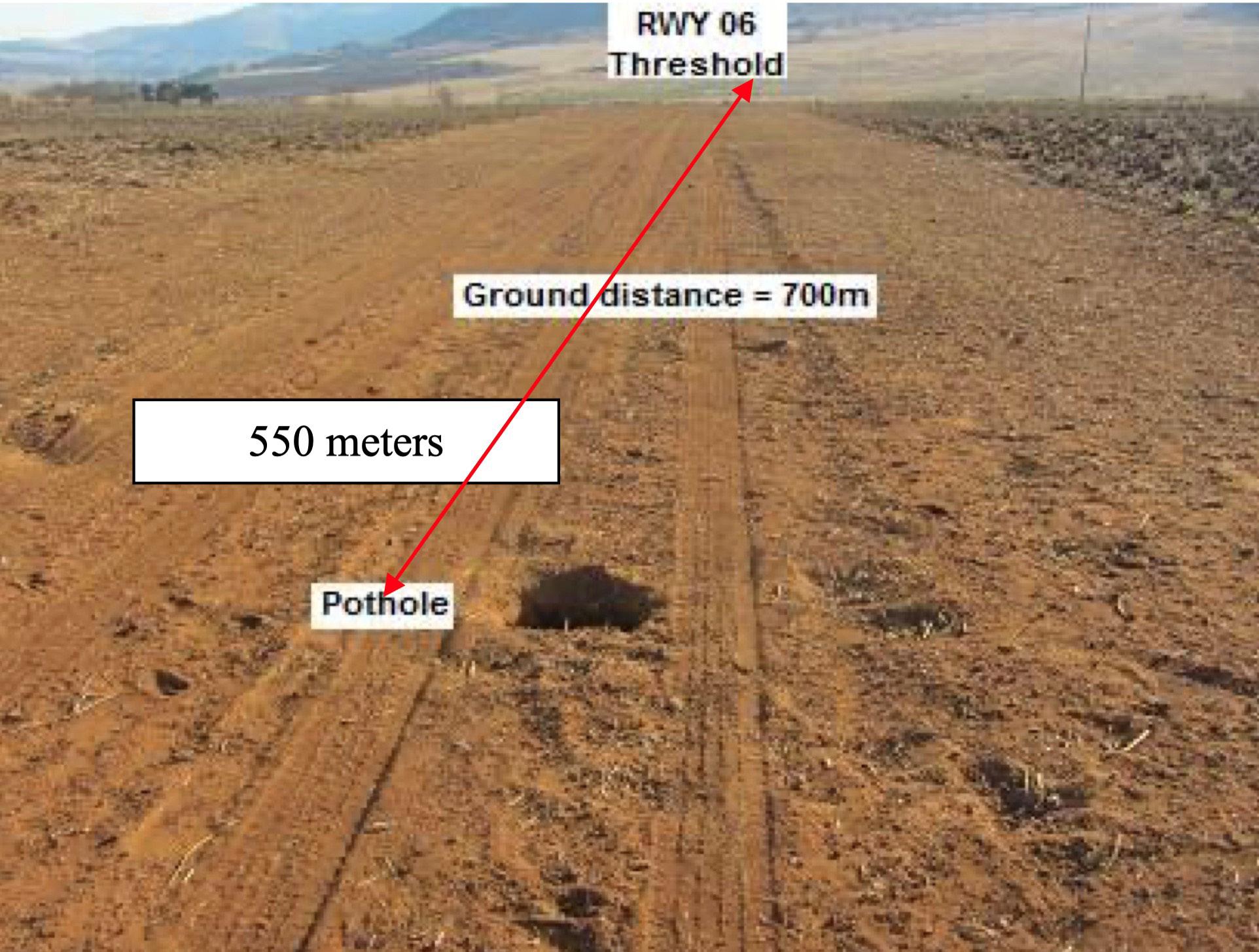
A substantial pothole was found on the centreline, 550m from the threshold of runway 06.
The wreckage distribution path was almost at 90° from the take-off direction. The right wing tip impacted the ground first and separated from the wing; it was located 29m from the main wreckage.

As the right wing impacted the ground, the aircraft rolled to the right and became inverted.
The propeller impacted the ground 10m from the initial point of impact. The propeller assembly had separated from the fuselage on impact and came to rest 17m from the first point of impact and to the right of the wreckage distribution path. The propeller showed evidence of rotation on impact.
The six attachment bolts on the propeller assembly were ripped out and the threads on these bolts were smooth.
The fuel tanks in both wings ruptured and the wreckage was consumed by fire.
It was not possible to determine the flap settings.
The POH says
1. Wing Flaps -- 0° - 20°.
2. Carburettor Heat -- COLD.
3. Power -- FULL THROTTLE and 2400 RPM.
4. Elevator Control -- LIFT NOSE WHEEL at 50 KIAS.
5. Climb Speed -- 70 KIAS (flaps 20°). 80 KIAS (flaps UP).
1. Wing Flaps -- 20°.
2. Carburettor Heat -- COLD.
3. Brakes -- APPLY.
4. Power -- FULL THROTTLE and 2400 RPM.
5. Brakes -- RELEASE.
6. Elevator Control -- MAINTAIN SLIGHTLY TAIL LOW ATTITUDE.
7. Climb Speed -- 57 KIAS (until all obstacles are cleared).
8. Wing Flaps -- RETRACT slowly after reaching 70 KIAS.
SOFT FIELD TAKEOFFS are performed with 20° of flaps are achieved by lifting the airplane off the ground as soon as practical in a slightly tail-low attitude. If no obstacles are ahead, the airplane should be levelled off immediately to accelerate to a safer climb speed
Note: The procedures for a soft field take-off and a short field take-off are similar in that the flap settings are the same and the aircraft is lifted off the ground as soon as practical.
The mixture should be leaned for takeoff from elevations greater than 5000ft to ensure maximum power.
The runway was 2624 ft long and the graphs show the distance required is 2459ft, a difference of just 167ft. However it’s not known where the takeoff run started. It’s likely that the pilot rotated too early without sufficient speed to climb, causing the aircraft to stall shortly after lift-off.
The POH states that runway conditions are calculated on level, dry, paved runways. The soft earth would have substantially decreased the aircraft’s ability to accelerate.
Probable cause:
The investigation could not find a definitive cause of the accident; however, it is likely that the aircraft’s performance was diminished by density altitude and/or the take-off configuration was incorrect, which would have caused the aircraft to stall shortly after takeoff.
The likely cause of the accident is that the aircraft was poorly configured, taking into account the density altitude and the effect on performance of the aircraft, which led to a stall shortly after takeoff.

I nearly skipped past this one because it looked boring – same old, same old. And then it sank in that this is the very reason it happened – and keeps on happening.
There is no one big red flag that would say to me ‘Woa! this flight looks bloody dangerous – I wouldn’t fly in the back of that aircraft’. Nope, but if I started scratching around a bit, I would find several things that were just a bit too marginal.
Things that we have all accepted from time to time and got away with.
Perhaps the most serious was the soft surface. But how are do you evaluate that in terms of takeoff distance? Sure there’s a general rule that says add 15% to the book figure. But that’s just a blind guess. It’s a very rough rule-of-thumb that is meant to apply to soggy ground, deep sand, long grass and so on. But, how soggy? how deep? and how long? There are no numerical answers.
cause one to suck in one’s breath and wrinkle the brow. And that’s what makes this accident so important.
casual
It’s shouting at me that in fact every one of these little flags should be a deal breaker. We know that one or more combined to kill three people and throw many other lives off track.
Then there’s a figure for the gross weight. We simply don’t know the gross weight within a couple of hundred pounds. No one was sure whether there was any luggage on board – the fire was too destructive to leave accurate evidence.
And how about the two jerry-cans of fuel in the back. Really not a good idea in the cabin because of the weight, the fire hazard and the question of how well they were tied down.
And technically the pilot was unlicensed – his medical had expired three weeks earlier. Did his disrespect for the law point towards a generally casual attitude towards safety?
And did he lean out for the takeoff? We don’t know, but at a density altitude of over 7000 feet he certainly should have done – it makes a hell of a difference to the power. But nothing different would show on the manifold pressure or the revs.
And the pothole in the runway. Was the pilot aware of it? And if so, was he planning to simply steer round it?
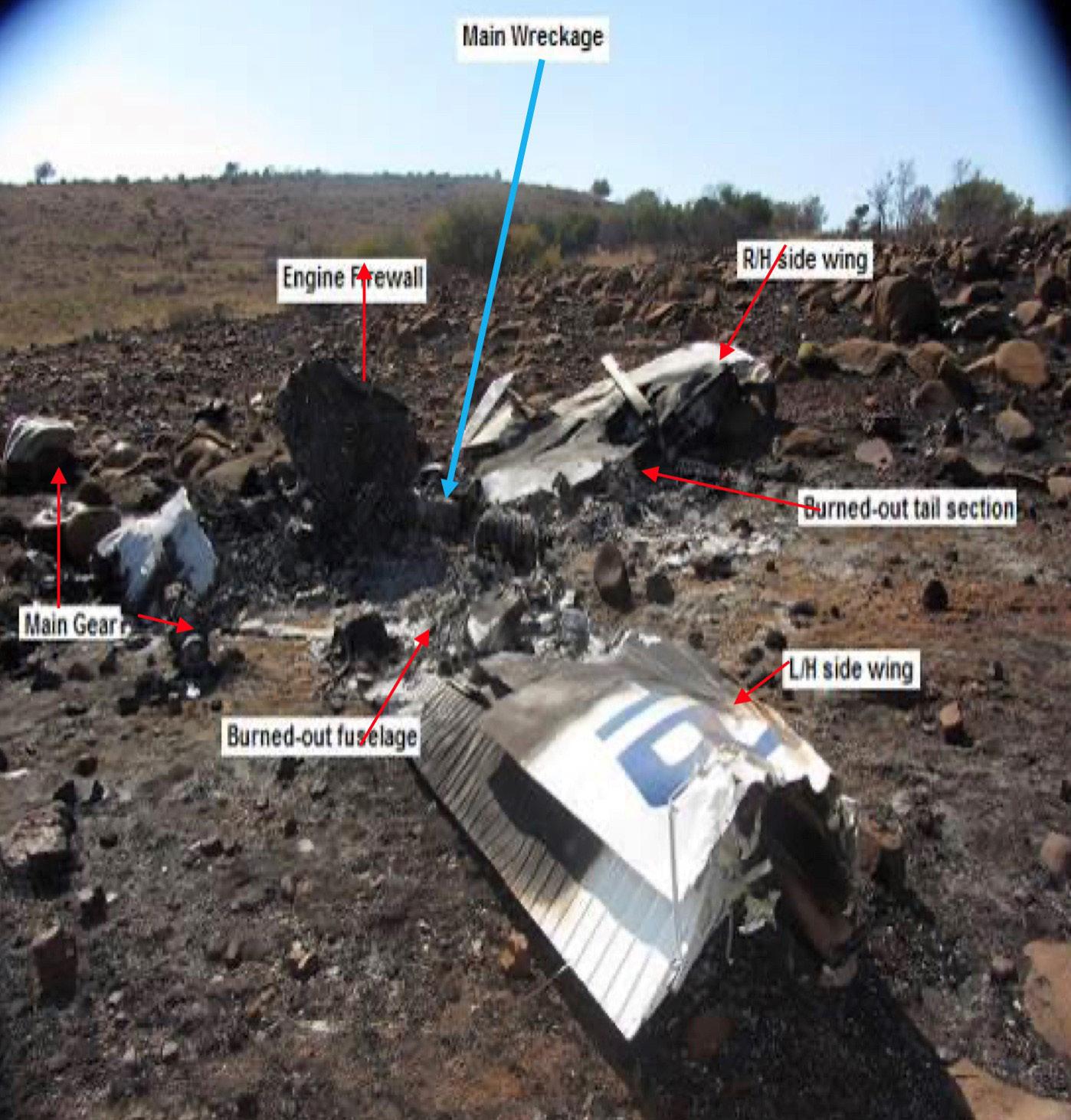
None of these points is a deal-breaker. But they do
In a way it relates to last month’s discussion on the eroding of safety margins. Our tendency to justify lower standard because they have not caused any trouble so far.
Beware when everything seems almost okay, it only takes one of them to slip over the line and bring down the whole pack cards.
j

The security services make a basic altitude error for the no-fly zone over the BRICS summit.



A meme after Russia's lunar lander crashed.
Only in Africa - boots to keep the tyres safe from wild animals.

This Spring, make sure you have the Sling that inspires your adventure.
THREE OF THESE REGISTRATIONS of new aircraft are Cessna C208 Caravan EXs for Federal Airlines. Federal have purchased a total of six new Caravans, of which these were the first three delivered. Aftrer a long ferry flight they arrived here in the first week of July. The other three arrived on 18 July 2023. This is the biggest single order and delivery for Cessna Caravans we have seen in this country. Federal Airlines will be using these on their flights to the various luxury game lodges that they service.
A Bombardier BD700-1A10 Global Express ZS-BPG taken up the registration once used by an HS125 which was exported to India in 2003.
Cemair have registered another Canadair CL600-2B19 ZS-CMJ. This one is a 2004 model and it takes up the registration once used by a Beech 1900 which now operates in Mauritius. There’s a new ATR72 for Solenta as well.
FlySafair have leased another Boeing 737-
800 from Ethiopian Airways. This one is now ZS-FGY and uses the registration of Cherokee 6 that was exported in 1988.
Amongst the other TCAs there is a Falcon 20, ZS-FLC, which arrived here in February 2023 and is now finally registered.
Showing the continued strength in the agricultural sector there is a Thrush Commander and an Air Tractor on the register. A Beech F33A Bonanza returns from Kenya, a Thunder & Colt Hot Air Balloon and a Pilatus PC12 from Botswana.

In contrast, the number of aircraft registered in the NTCA section this month is just six. Notably, there is a Graham Lee Nieuport 11 WW1 replica registered as well as an ex-Netherlands AF Allouette III, two new Sling 4 TSis, an RV7 and a Savanah S.
The number of drones registered just keeps getting larger, with another sixty-nine added this month and fourteen deleted.
This month there are sixteen new type certified aircraft (TCA) registrations – this is the most in a very long time.
the biggest single order
ABOVE: Imported from the Netherlands - A-275 is an Allouette III ex-Netherlands Air force, now ZU-RIK.

BELOW: A rare Garret powered King Air - N136MB is a Beech Be100 now ZS-JVR.

BELOW BOTTOM: An unique new homebuilt - the Graham Lee Nieuport 11.
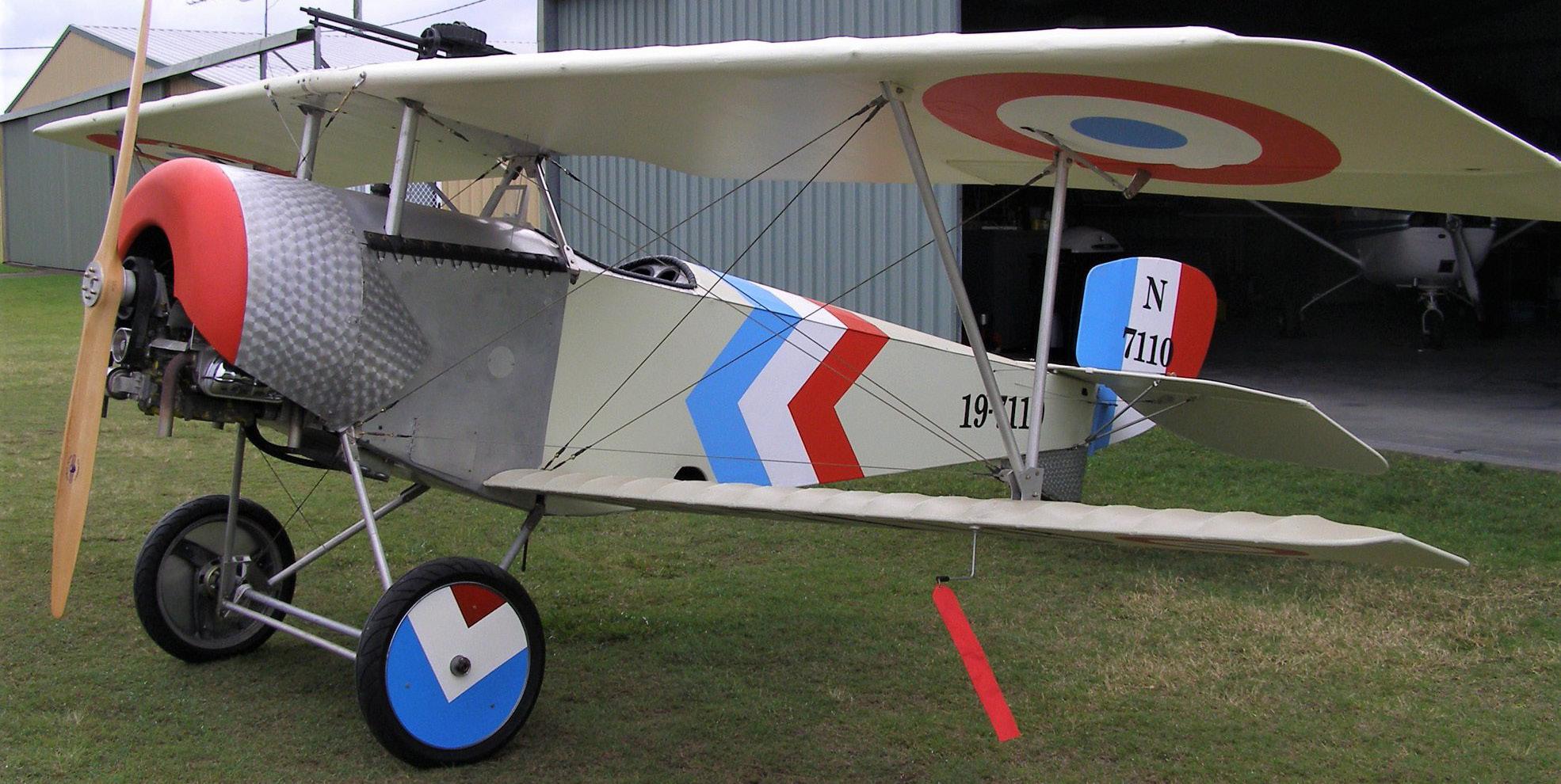
ABOVE: ZS-MOX is a C152 exported to Uruguay. Photo Shane Swart.
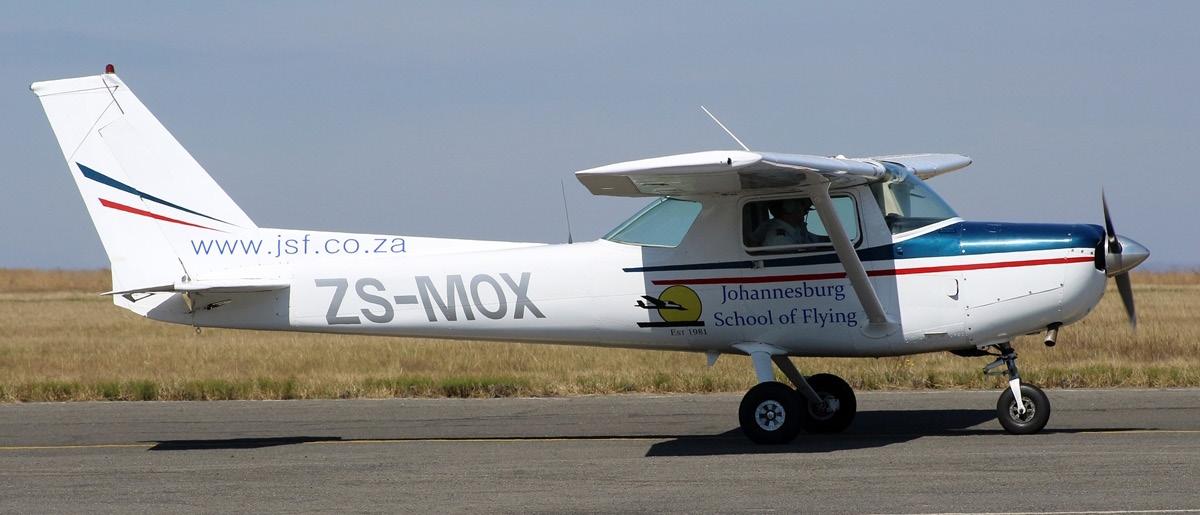
BELOW: ZS-NYE is a King Air Be E90 exported to the USA.
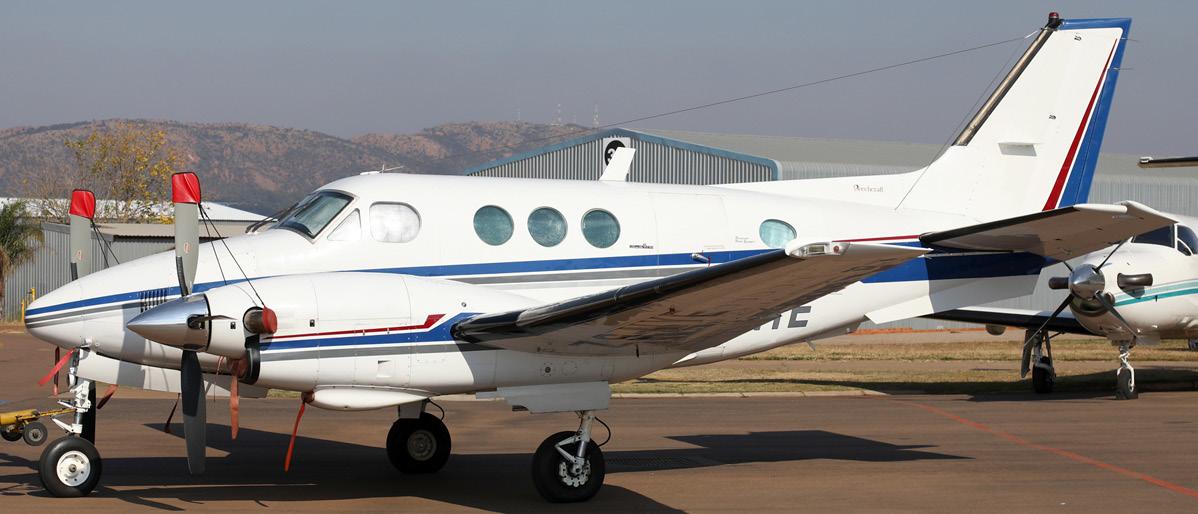
BELOW BOTTOM: Another addition for Solenta - F-GRPX ATR 72 now ZS-XZR.

ABOVE: ZS-COH is a PC12 previously exported to Botswana, now re-registered as ZS-TAL.


BELOW: ZS-JSM is a Jetstream J41 exported to Zambia.
BELOW BOTTOM: The Safair fleet continues to grow - ex Ethiopian ET-AOA Boeing 737-800 is now ZS-FGY for Fly Safair.

is now
As a pleasant change, only five aircraft have been exported this month. There is a Jetstream J4101 exported to Zambia, and I suspect this one’s been operating outside the country for a long while as I’ve never seen it. There’s also a Cessna 152 exported to Uruguay. Two aircraft have gone to the USA. An Airbus AS332 C1 Super Puma has been registered in Switzerland.
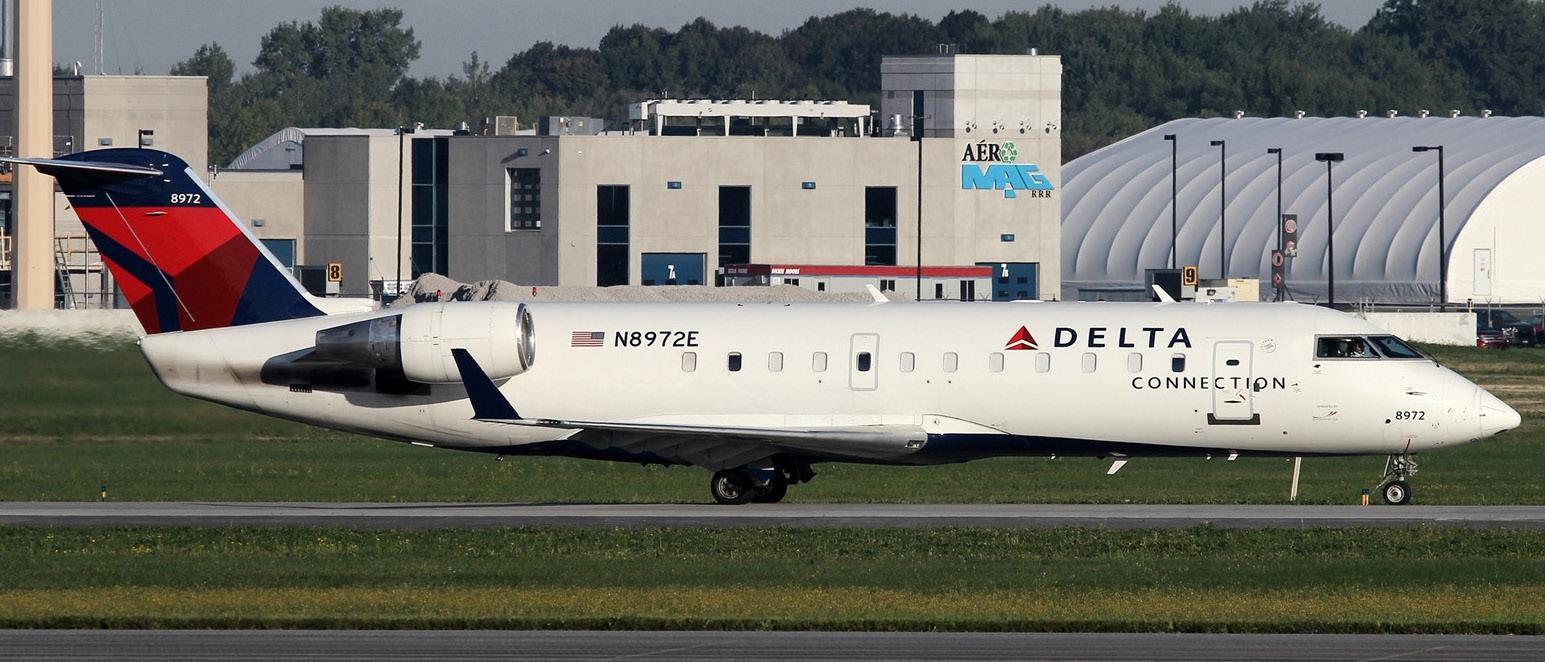
The AERO Africa trade show at Wonderboom Airport was quite successful and I look forward to attending again next year. j

Through





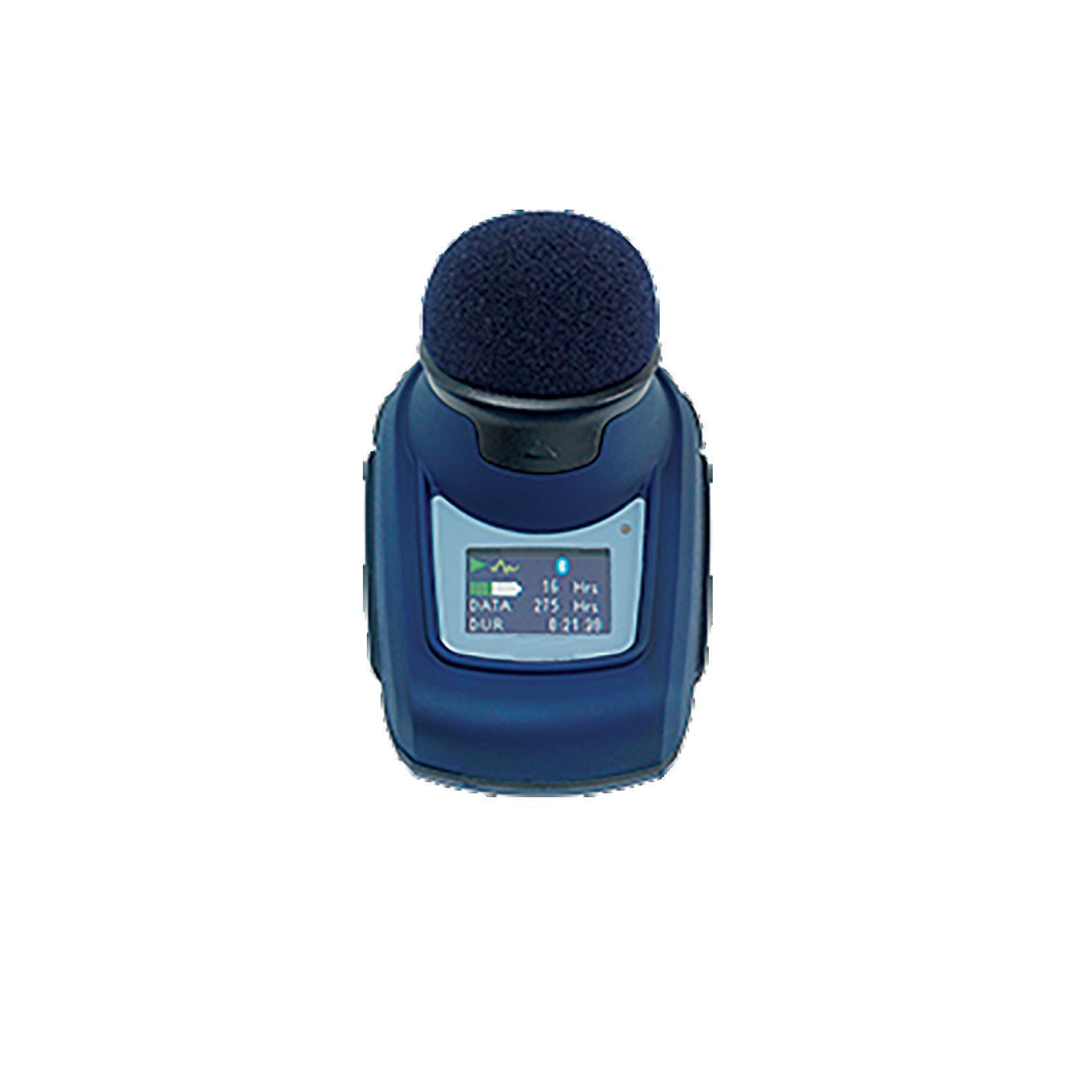
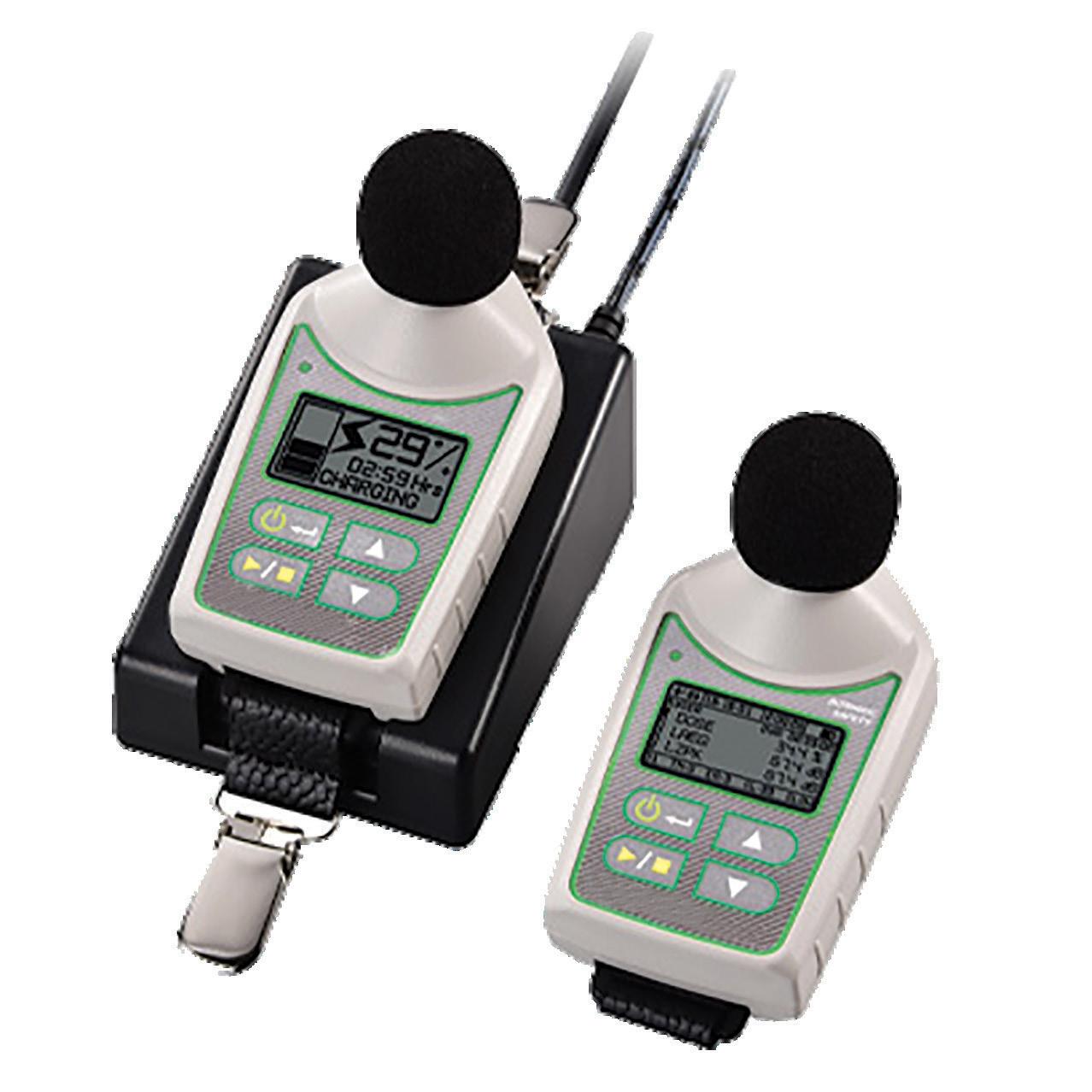

The picturesque town of Maçon, France, served as the backdrop for this year’s World Rally Flying Competition.
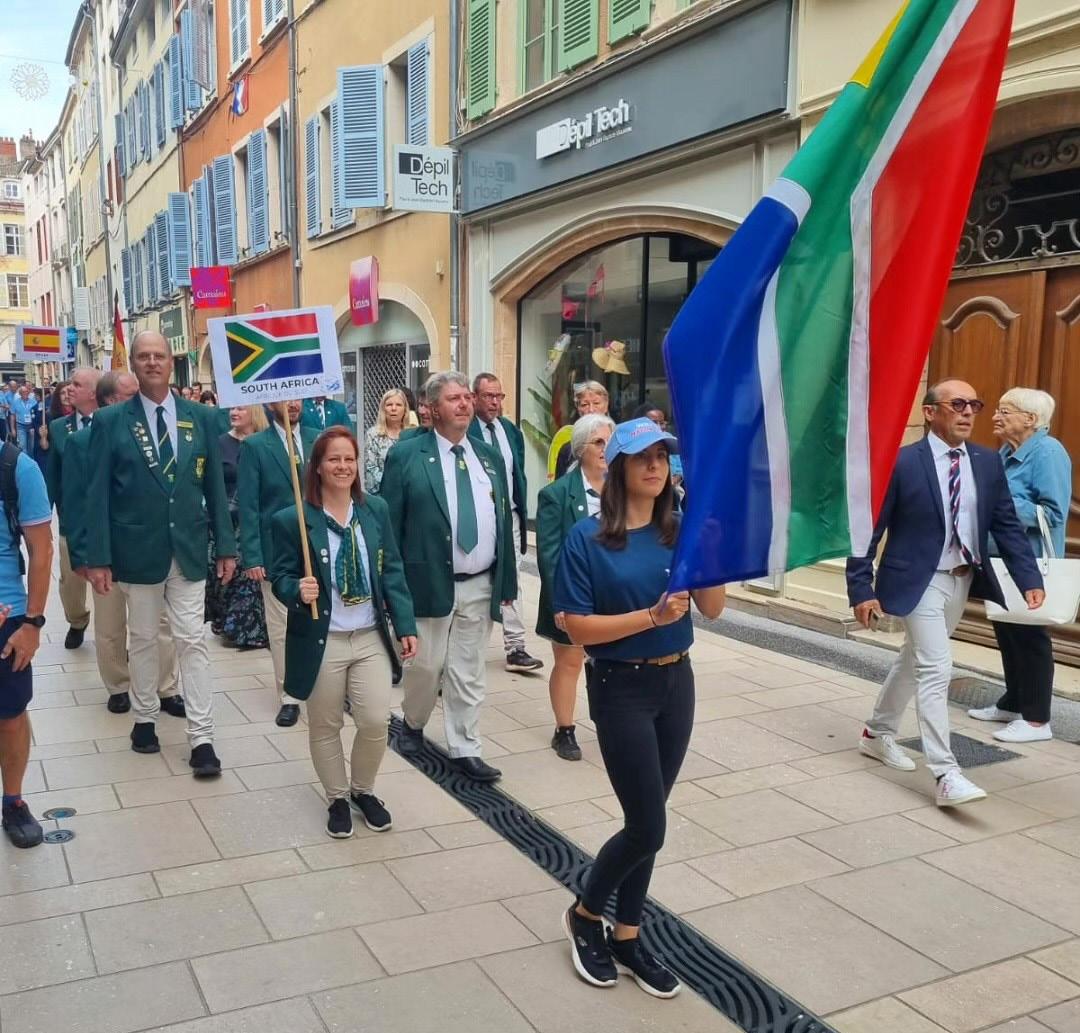
FROM 29 JULY TO 5 AUGUST, aviation enthusiasts and competitors gathered to witness an exhilarating showcase of skill and precision. With participation from eleven countries and forty-five teams, including four teams from South Africa, this event promised the highest level of intense competition.
Ahead of the official start, Team SA displayed their dedication by arriving in France a week early for rigorous training. The anticipation peaked on 31 July, the first day of the competition, as the skies came alive with the energy of flying prowess.

In a true show of technological advancement, live tracking allowed enthusiasts from around the world to follow the action online.
The spirit of competition was briefly dampened when an official fell ill the following day, leading to the cancellation of flying activities.
Dominating the leaderboard were two Czech teams in first and second place, while the host country, France, claimed a respectable third. Team SA’s performance on the opening day ranged from 14th to 39th place, a testament to the diverse challenges of the event.
Undeterred, the competitors resumed the challenge on 2 August to be met with a difficult route and unpredictable wind. The Czech duo, Petr Jonàś, and Marek Velát, maintained their dominance by clinching the top spot again, with a Polish team securing second place and a French team placing third. For Team SA, the journey was marked with tenacity, as they secured positions in the range of 27th to 40th place.

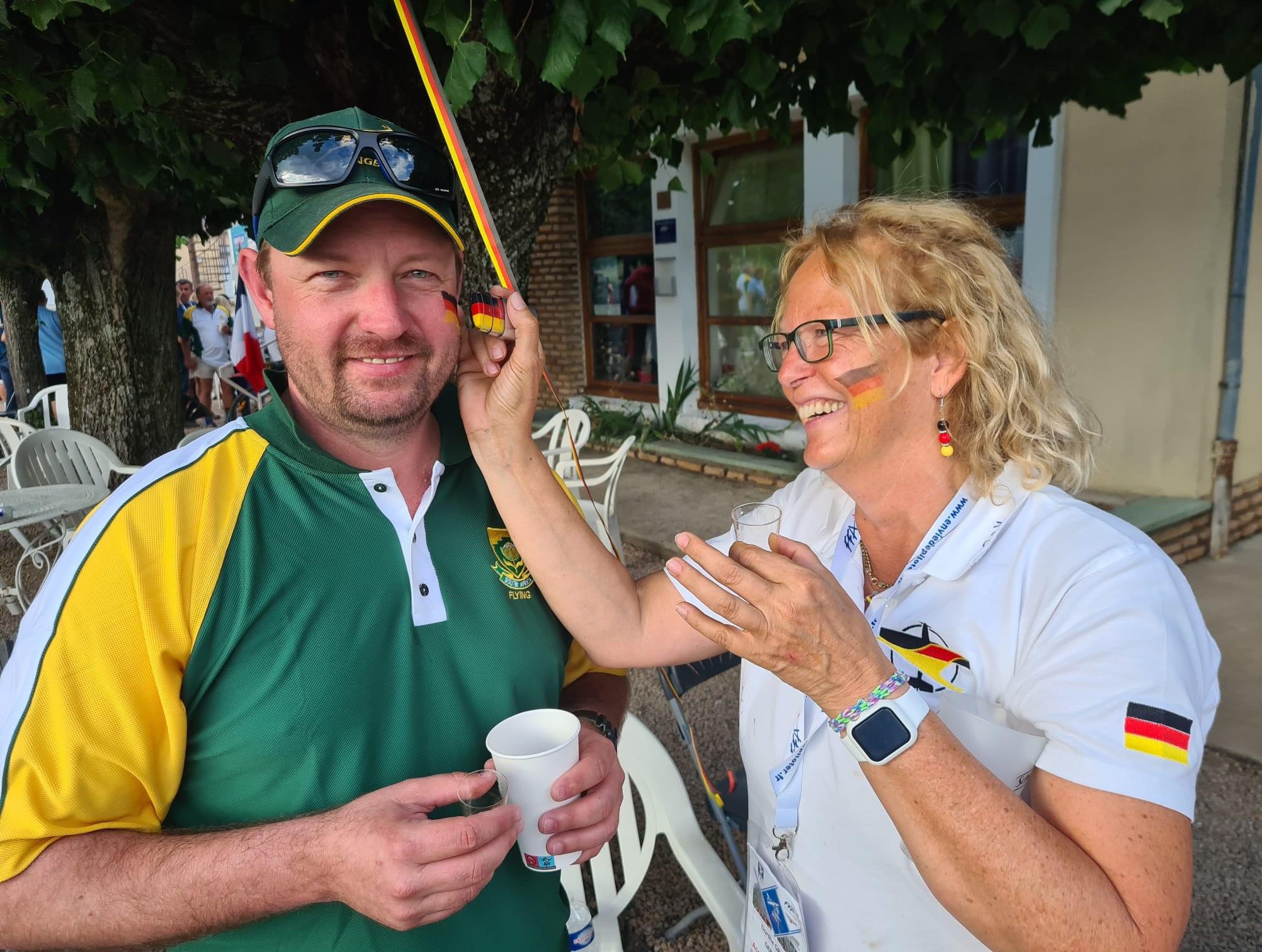

As the event climaxed on the third and final day, the Polish team showed their mettle, claiming both first and second positions. The French team, while not clinching top spot, retained their third-place position with admirable finesse. Team SA’s placements ranged from 33rd to 40th, reflecting their unyielding spirit in the face of fierce competition.
Despite Poland’s late comeback, Czech duo, Petr Jonàś and Marek Velát, clinched the coveted first place, followed by two French teams in the second and third positions.

Amidst the mix of triumphs and challenges, South Africa found a glimmer of success. Steve van der Merwe and Alewyn Burger earned third place in the Landings category, serving as a testament to the perseverance and skill that required to compete in this top level exhilarating event. j

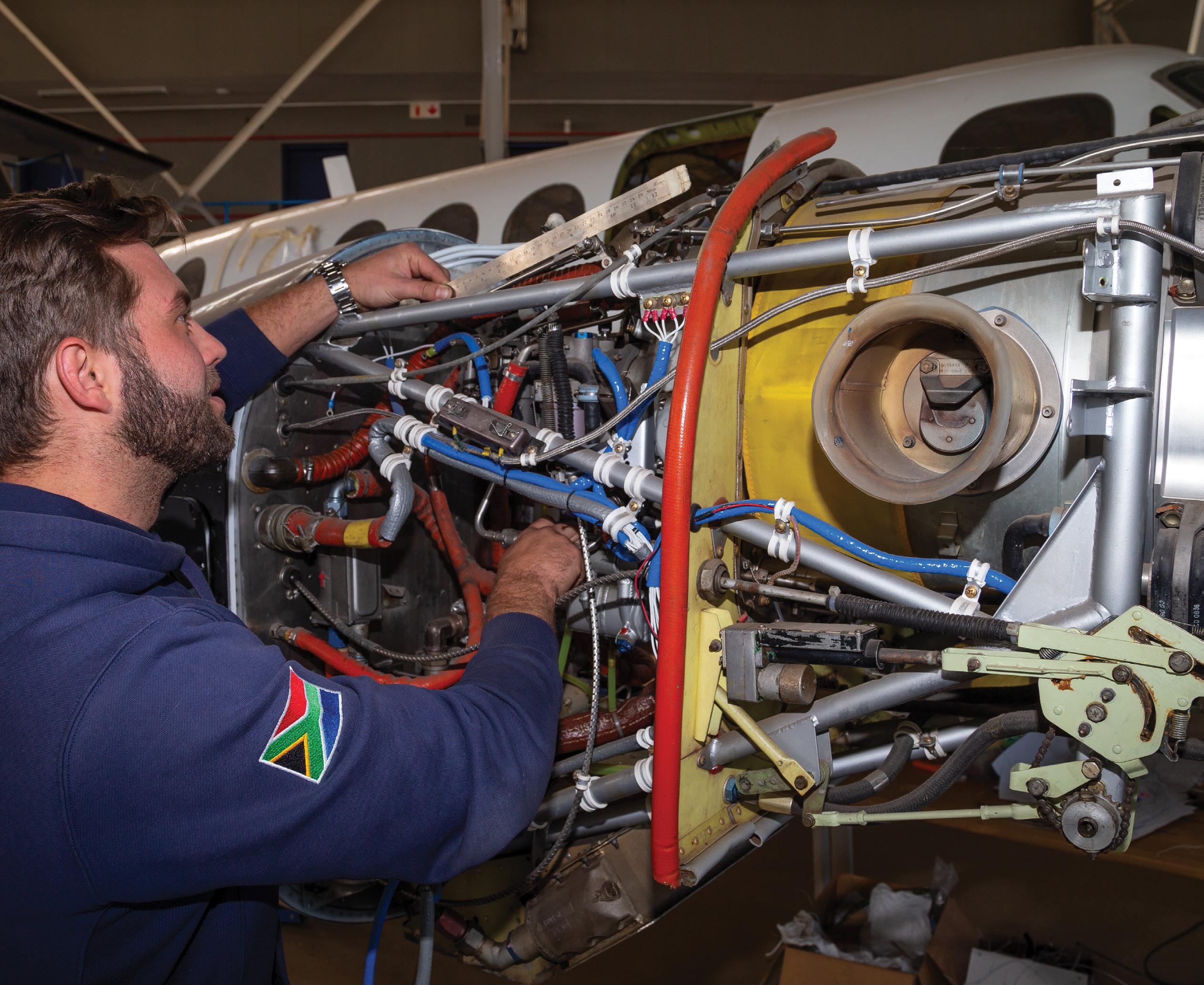



Fuel Prices as at 28/07/2023
Prices include VAT but exclude any service fees
Fuel Prices as at 29/08/2023
Prices include VAT but exclude any service fees



FOR THOSE AVIATION newbies who may be reading this, but have never heard of Oshkosh, it is the biggest airshow in the world. Held in Wisconsin, USA, it is on every passionate aviator’s bucket list, as it has been on mine for many years.
I’ve never met a pilot who’s returned from this spectacle disappointed. It covers every aspect of aviation, from exhibits showcasing a variety of home-builds to workshops on how to build your own aeroplane, there’s something for everyone that can leave you giddy with choice.
As is tradition amongst the South Africans, my home for the 8 days was in ‘Plakkerfontein’, the camp run by Neil and Carolyn Bowden. Neil set up the camp twentyodd years ago and it has become an institution.
As our bus from Chicago O’Hare pulled up at the camp, the red and blue lights which festoon the pub glowed invitingly in the stormy
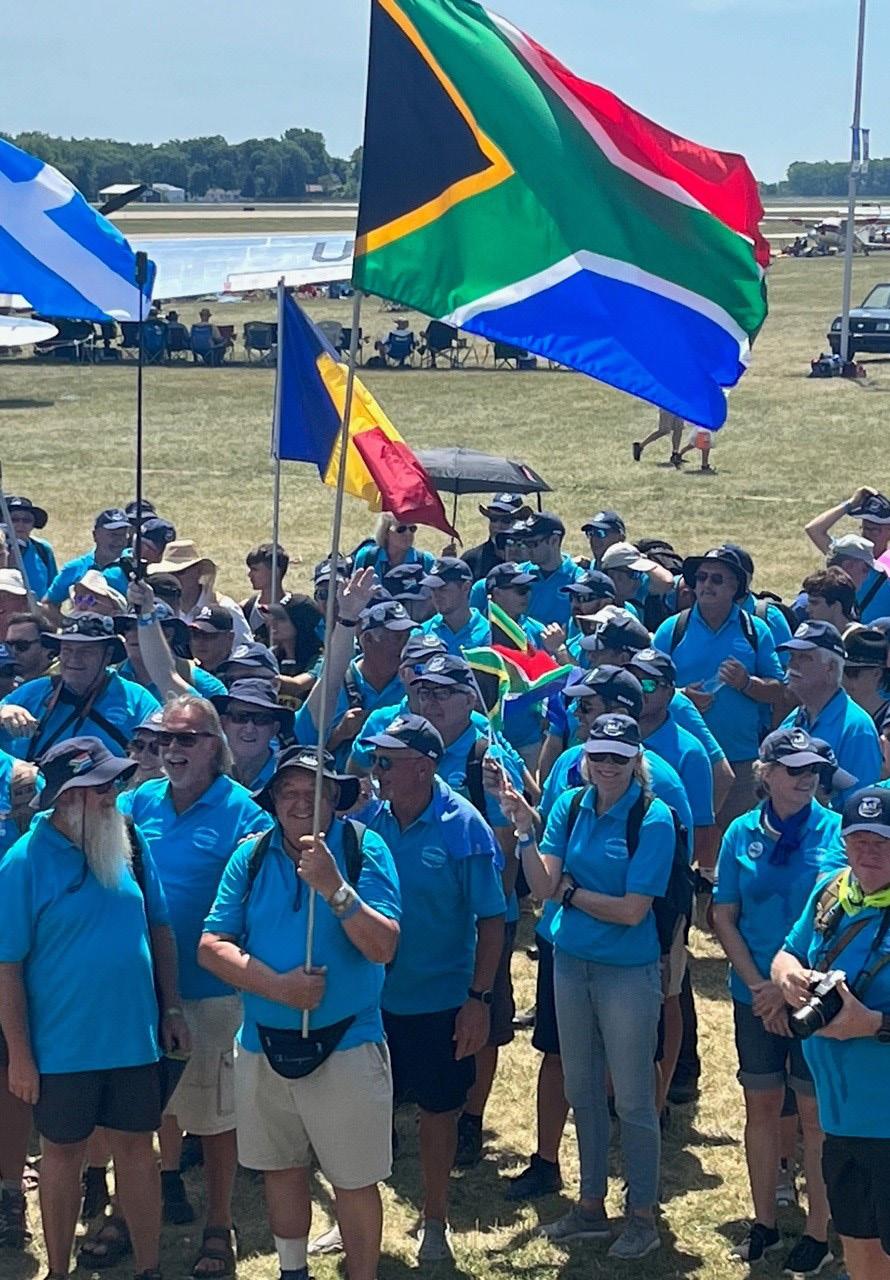
I had the great privilege of going to Oshkosh this year to represent SA Flyer.
A small part of the 150 strong South African contingent.
darkness. The cheerful garden surrounding the entrance to the camp leads to a large marquee which sheltered us from the rain. In the storm a swing rocked under a large tree; its dense green canopy would serve as a respite from the relentless heat over the coming days.
A laager of caravans formed a semi-circle around 106 green dome tents, each labelled with its occupant’s name, arranged in neat rows of 10.
We waited until the rain dissipated before collecting sleeping bags and blankets.
I unpacked my kit, made up my bed and headed to the communal ablutions. After 36 gruelling hours in planes and buses, the warm shower was an elixir for my weary body.
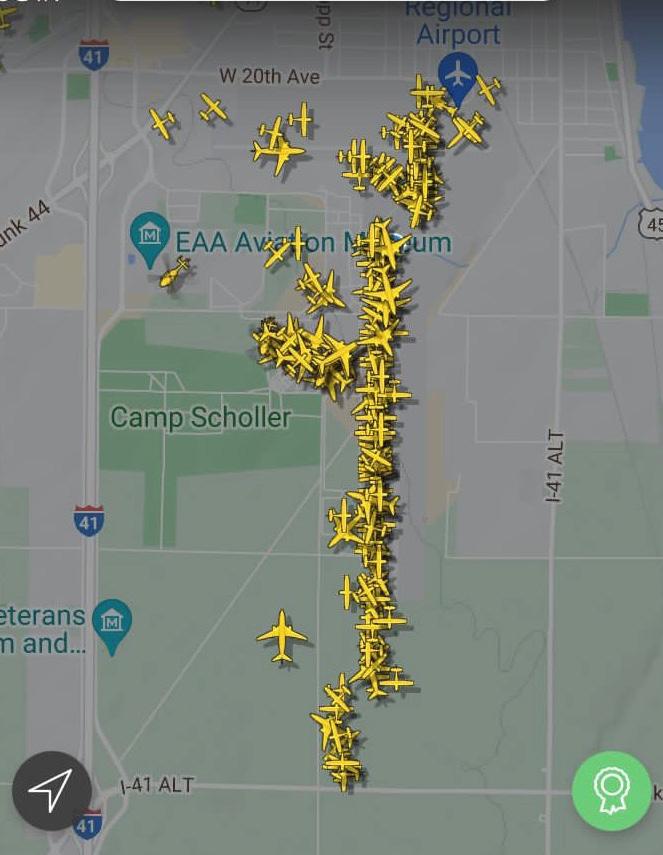
Following a light dinner, I made a bee-line for my stretcher, looking forward to sleeping horizontally for a change.
The following morning, I was awakened by the general bustle of the campsite. I obtained my
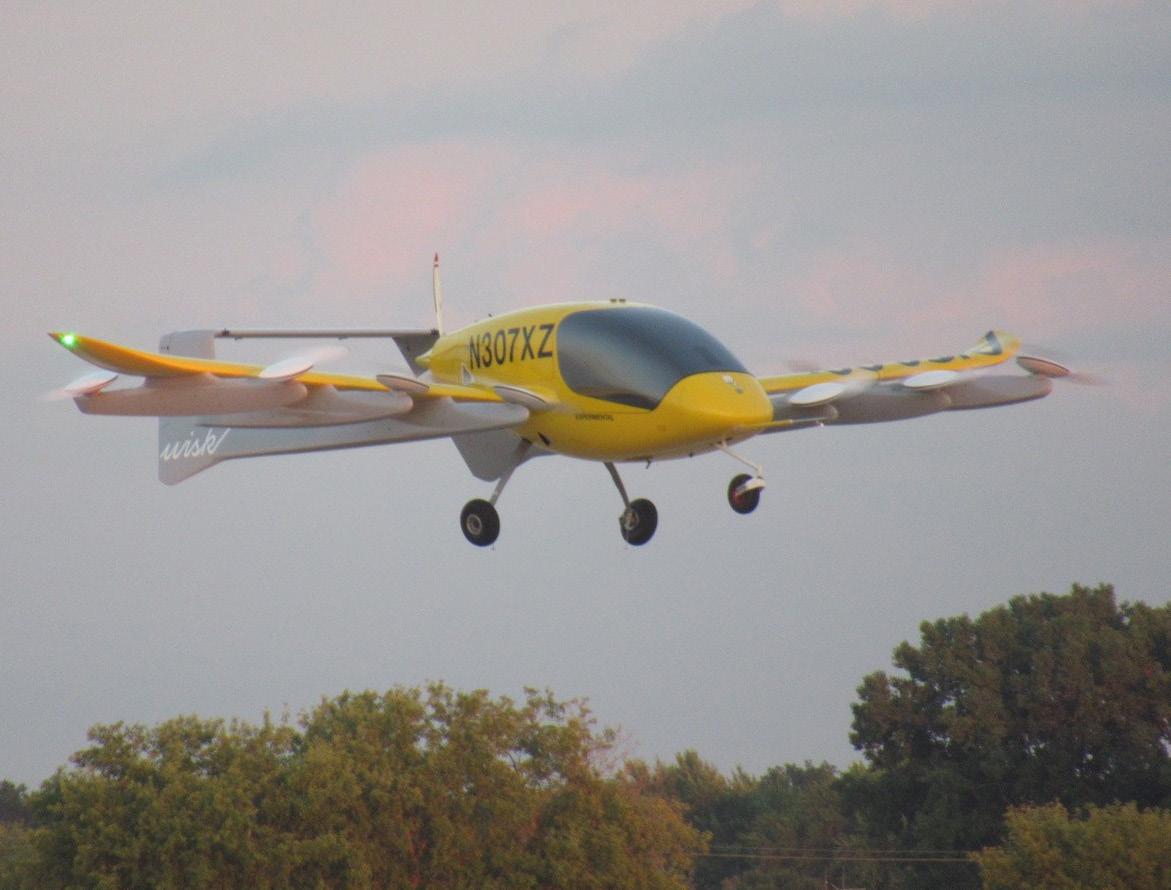

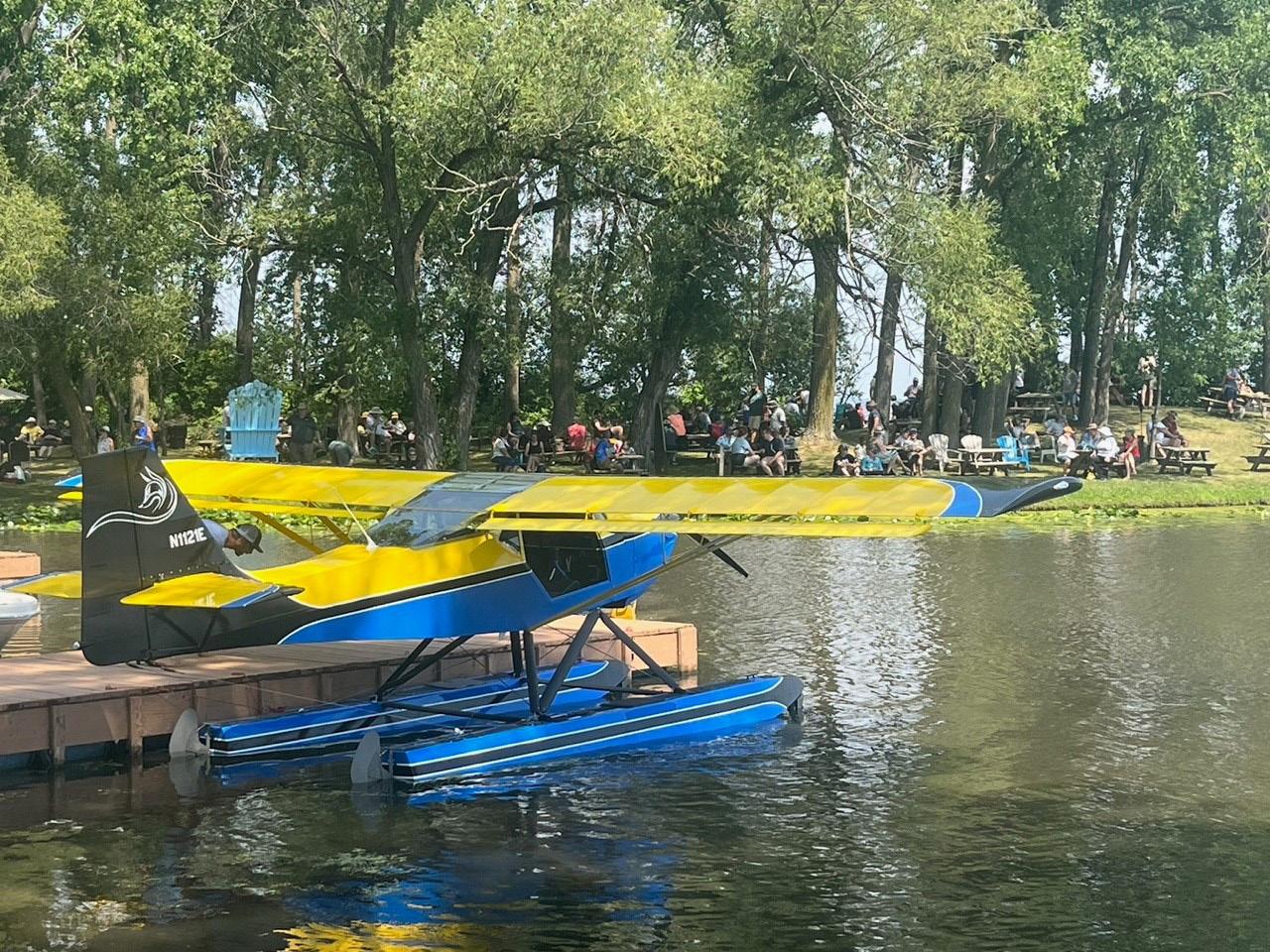
A herd of Canards grazing peacefully.
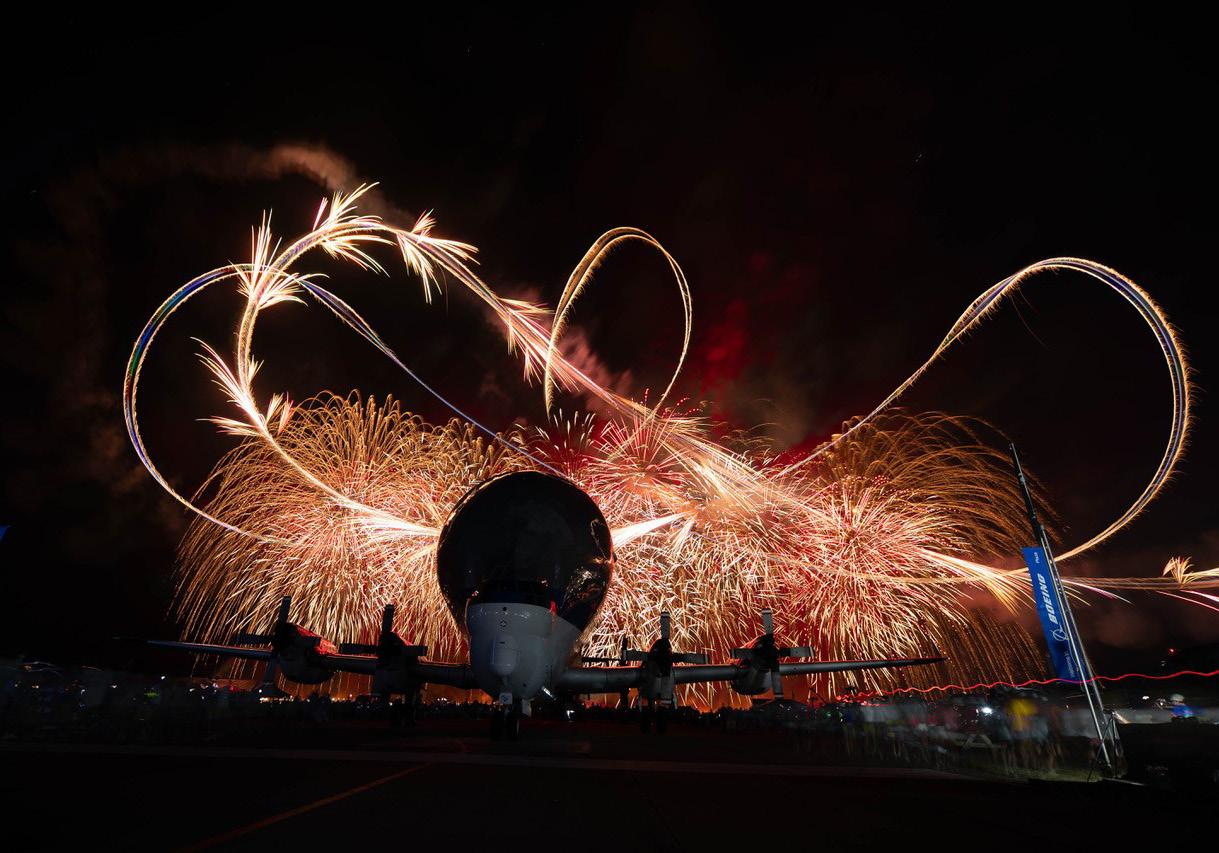
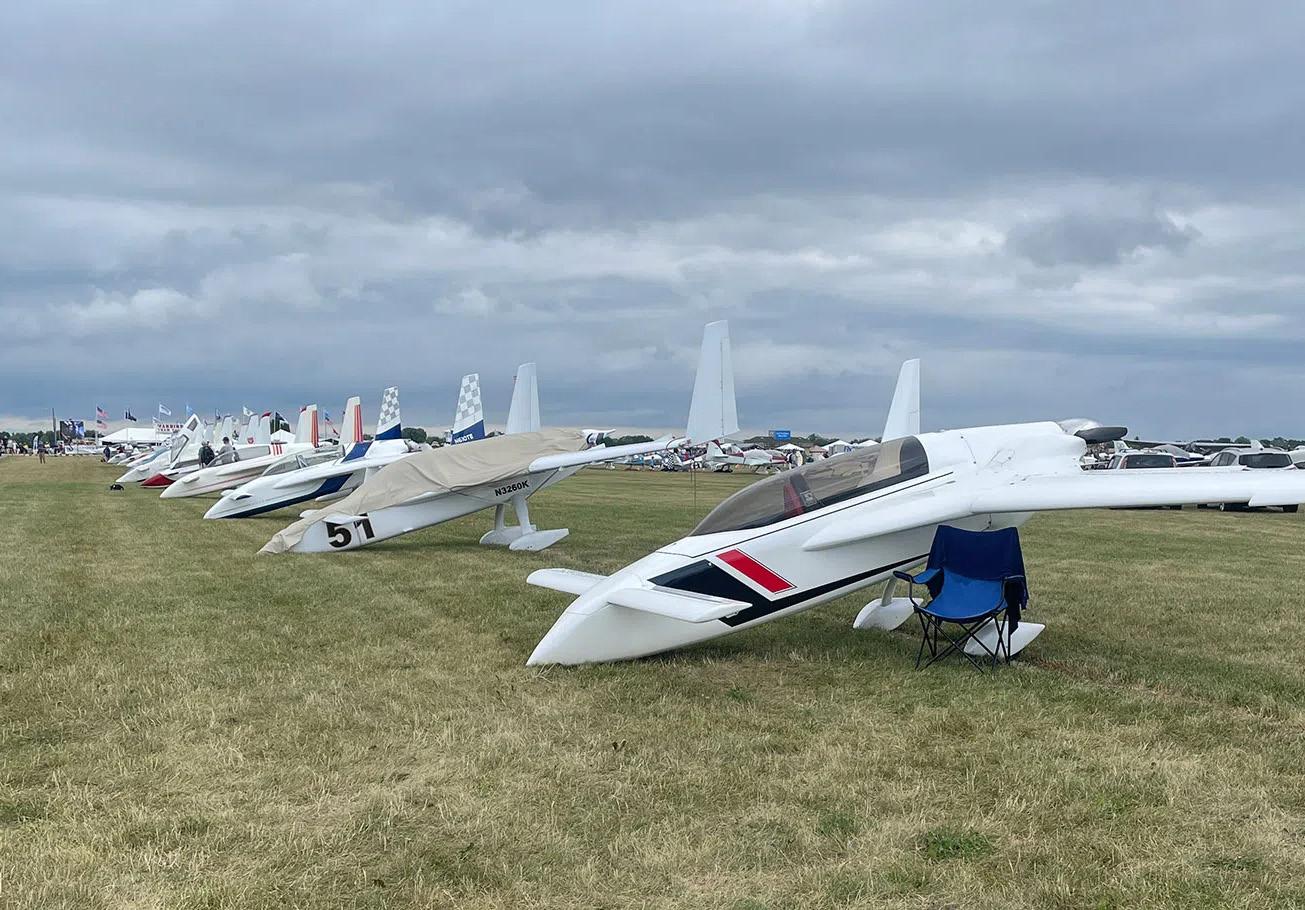
fix of caffeine from the Red Barn and headed off to the media briefing area in the showgrounds.
My biggest challenge was trying to decide which talks to attend; more than 1,400 workshops, forums and presentations were on the agenda for the week.
Later that day I weaved my way through the thousandplus home-built aircraft that had flown in and headed for the flight line to watch the daily aerobatic displays.
The temperature was north of 35 deg C with the humidity above 70%, so I sought respite under the wing of Greg Peck’s restored 1955 150HP Piper Pacer N3622P. Like many of the fly-in visitors, Greg had set up camp next to his plane.
Airport in Oshkosh, a total of 556 NM which took him 8 hours at an average cruising speed of 110KT.
This was his first long cross-country flight. With only 300 total flying hours, it was a brave and adventurous thing to do, and Greg was bursting with pride. Rightly so, as anyone who has ever watched the landings at Oshkosh would know just how intimidating it is to fly in.
More than 10,000 aircraft flew into Oshkosh. There were 21, 883 aircraft operations in the 11-day period, which is an average of approximately 148 takeoffs/landings per hour.

He had flown the PA-22-150 all the way from Harrisburg, Pennsylvania to Wittman Regional
The next morning, I attended the media talk on the Super Guppy at the Boeing Plaza. With its bulbous fuselage and protruding ‘eyes’ this oddlooking aircraft lives up to its fish namesake. The Super Guppy was built to transport
components for NASA’s space programs, including spacecraft, rockets, and other critical hardware. It is an extensively modified version of the Boeing 377 Stratocruiser, with significant modifications to its fuselage to accommodate bulky payloads.
That afternoon I was back at the air show.
Skip Stewart took his highly modified Pitts S-2S biplane, ‘Prometheus’, through its paces, followed by Susan Dacy in her iconic Boeing Stearman biplane ‘Big Red’. Their performances included a mix of loops, rolls, spins, and other jaw-dropping manoeuvres.
Red Bull Air Race legend Michael Goulian, flying his Extra 330SC, took the air show performance to an even higher level of extreme aerobatics. The 330HP Extra tumbled and rotated at awe-inspiring rates in almost every attitude, showcasing the limits of both the pilot and the aircraft, leaving the spectators in awe.
The jet blast of a Pratt & Whitney F119-PW-100 could be heard way before the F-22 Raptor came into view. In an ear-splitting roar, the jet fighter thundered overhead. The air seemed literally bent out of shape as the Raptor approached the speed of sound. Air in front of the jet cannot move out of the way fast enough, so it compresses into a region known as the “shock cone”.
I watched transfixed as the Raptor climbed vertically at a rate of 60,000 fpm, in a blink of an eye becoming a mere speck in the sky. As I gazed into the glow of the disappearing afterburners, I pinched myself for the umpteenth time that day. What an amazing honour it was to be standing mere metres away from these incredible pilots and machines.
The next day, David Clarke’s in hand, I headed to the ultralight aircraft. I was to fly in a Bat Hawk, with our very own Sean Cronin, who was helping the Saitowitz family (who relocated to Los Angeles from South Africa) to promote and

sell this capable South African-built rag and tube microlight.
I cannot overstate the significance of getting in the air at Oshkosh, it’s a privilege that very few get to enjoy and here I was on my way to experience this grand spectacle from above.
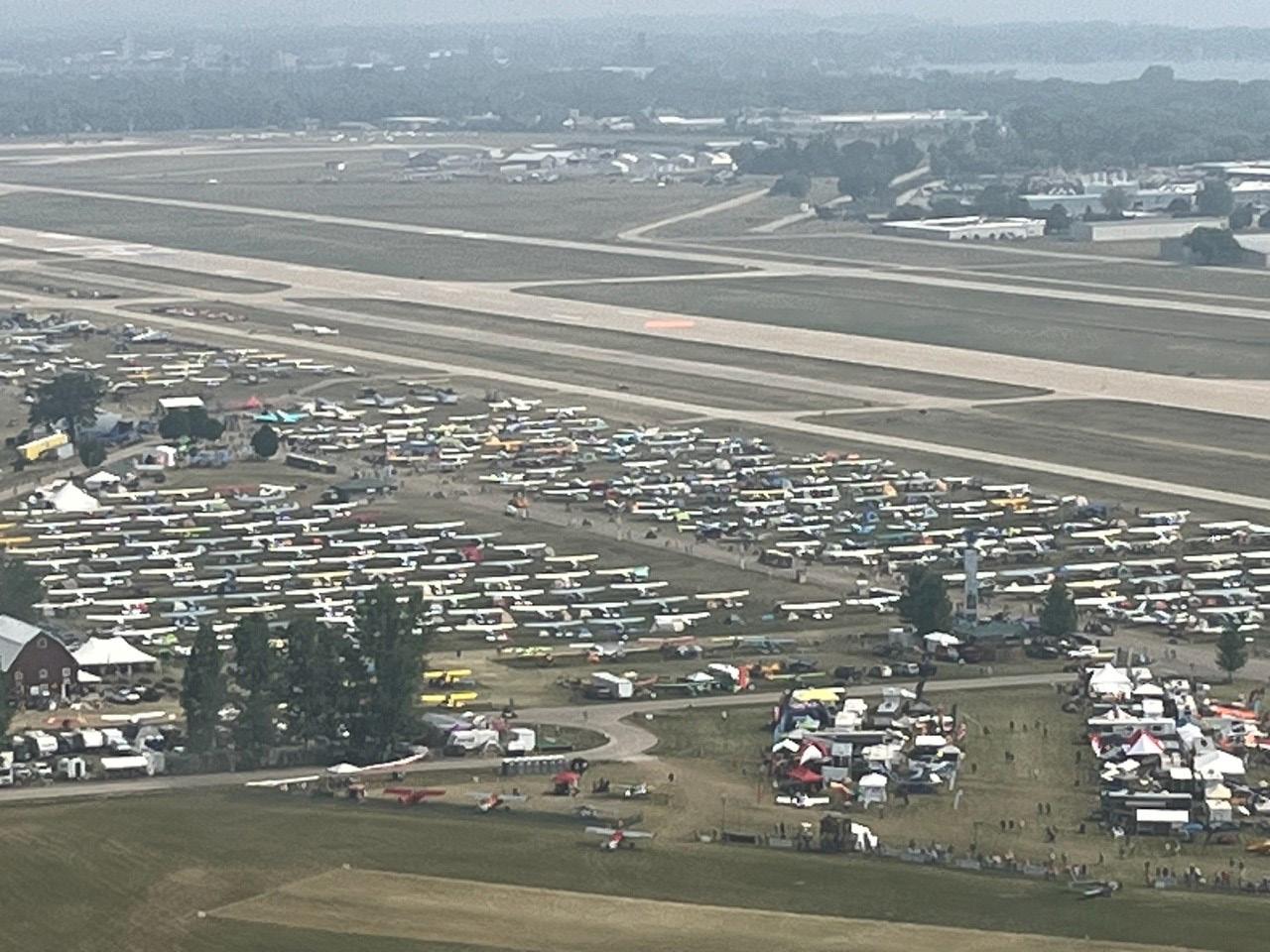
For the first few days of the show the sky had been grey with the haze from the Canadian bushfires. But today it dissipated to reveal a cerulean blue sky. The birds were tweeting, and a slight breeze ruffled my hair. It was a perfect day.
I was led to the Eagle’s Nest tower where I met the managers of the field. I was in my familiar happy place surrounded by the collective buzz of Rotax engines and from this vantage point I had a bird’s eye view.
After signing the indemnity form, I slid down into the right seat next to Sean. We were airborne
in a few metres and levelled out at 300 ft AGL, which is the designated circuit height. (The Americans call it the pattern).
I had been amazed by the vast scale of the airshow on the ground; but nothing could prepare me for the incredible spectacle laid out below me.
The morning sun glinted off thousands of aeroplanes: caravans and Recreational Vehicles (RV’s). The emerald landscape slid past below us, periodically dotted with concrete grain silos, hinting at the farming nature of Oshkosh.
Dams and rivers glittered like strewn jewels, and a fresh breeze poured into the cockpit, providing a temporary reprieve from the oppressive heat.
I am due for a conversion onto the Bat Hawk, and Sean demonstrated its versatility. He deftly guided the plane around the aircraft on the ground (flying over parked aircraft is strictly
prohibited) and over the power lines and street poles to line up with the runway.
After landing, but still on cloud nine, I walked around the exhibition area and chatted to the international sales director of the Bush Cat, ex-South African Mike Gill, about the success of this proudly South African brand which has been in the USA for the past 12 years. Based out of Wonderlake Illinois’ Galt airport, Bush Cat offers fully assembled aeroplanes or kits for self-build.
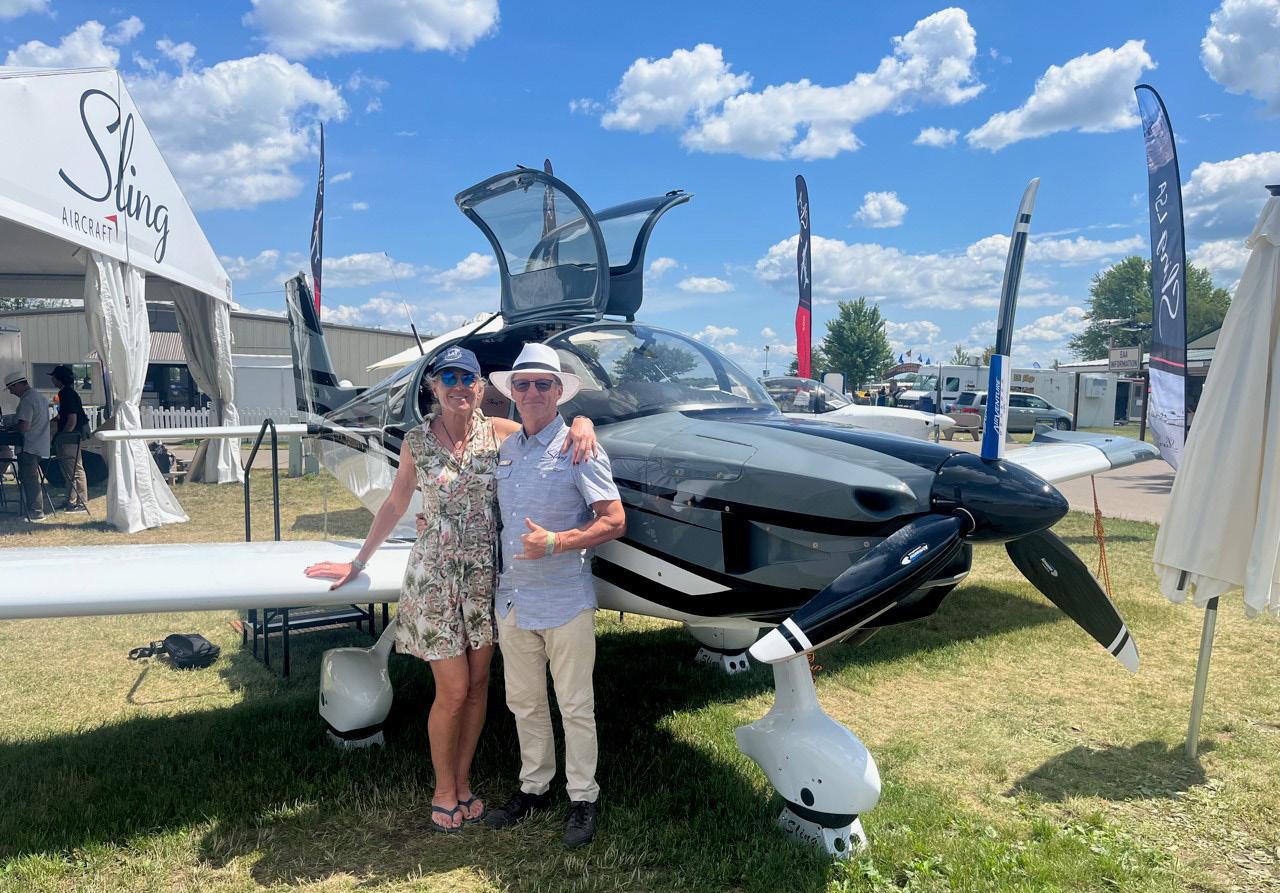
I was back at camp early that afternoon to prepare for the legendary night show and fireworks display.
Over the years, word had spread through Camp Scholler that ‘Afrikaners is plesierig’ and Plakkerfontein has become the place to be. South Africans and their guests from all over the world were clustered around the braai, regaling one another with stories, as the delicious aroma of barbecued meat permeated the air.
Young Jesse Jeffrey, the Bowden’s grandson,
splashed around in a plastic pool while his mom Laura cradled 5-week-old baby Georgia, who is the youngest South African (possibly the youngest human) to ever attend Oshkosh.
Some folks were slouched in camping chairs whilst others lounged on bean bags sipping icecold Bud (which consensus has it, is nowhere as good as our local SAB brews).
Periodically all faces turned skywards, and the conversation was drowned out as the F-18 Hornets tore up the sky.
It was a perfectly wonderful afternoon.
Against a backdrop of a silver moon in a darkening sky, the AeroShell Aerobatic team of four North American T-6 ‘Harvards’, executed a series of carefully choreographed manoeuvres, including loops, rolls, and other aerobatics, all in perfect tight formation.
By showcasing the beauty of classic WWII aircraft and demonstrating the teamwork and
training required for precise formation flying, Team Aeroshell’s performance captivated the audience and was my favourite evening demonstration.
With its tadpole-shaped body and distinctive canard-wing configuration, a Long-EZ swirled around the sky in time to alien music. I wondered, not for the first time, if Burt Rutan was dropping acid when he designed it.
The Super Salto sailplane had me enthralled with its silent, graceful aerial ballet. Powered by the PBS TJ-100 jet engine, it is the only glider on the air show circuit capable of performing a low-level, jet-powered performance.

A de Havilland Chipmunk called GhostWriter ended the show with a bang. Originally designed as a trainer for the Royal Canadian Air Force, this 1956 Chipmunk has been specially modified for aerobatics and skywriting. As fireworks exploded in shards of multi-coloured lights, the
Chipmunk weaved between them, releasing its own stream of flares and pyrotechnics.
Mushroom cloud-like fireballs erupted from the ground in loud booms, the heat so intense that it could be felt on the opposite side of the runway.
The tempo and the frequency of the fireworks escalated, resulting in a heart-pounding climax. It was undoubtedly the best display I’d ever seen.
That evening, Plakkerfontein had its own extra-terrestrial visitations in the form of an inflatable pterodactyl, a flamingo wearing a cerise tutu, and a glowing green alien. Never a dull moment.
The following morning, I attended a talk at the Rotax stand on the new 916iS. With a service ceiling of 23,000 ft and 160HP, it is impressive, but comes at an even more impressive price tag of R1 million.
I wouldn’t change a thing
A yellow and white RV-9 N179RV, sporting a 916iS, was on display, highlighting how far the original Rotax design had progressed since its early days when it was developed for free wheel bicycle hubs. The first aircraft engines were manufactured in 1975 and the rest, as they say, is history.
Whilst at the presentation, I met John Tiley, from Canterbury in the U.K, who had purchased a 915iS to put in his Sling TSi. I was intrigued as to why, of all the available kit planes on the market, John had chosen the South African brand.

He explained that he wanted something modern and comfortable with sufficient range and interior space to take his grandchildren on holiday. He also mentioned (several times) what great service he’d received from the Sling agents in the UK.
Inspired by his story, my next port of call was Sling where I met up with ex-South African Jean d’Assonville. Jean is the USA representative for Sling who currently resides in the Bahamas. A far cry from 20 years ago when we used to fly paragliders at Hartbeespoort Dam together.
We chatted about the High Wing and how Sling is replacing the Rotax 915iS with the new Rotax 916iS, which should provide the HW with an extra edge.
A highlight that afternoon was the sixthgeneration air taxi, the Wisk, which took a vertical leap into the air. The world’s first fourpassenger, autonomous, electric vertical takeoff, and landing (eVTOL) air taxi flies itself while being monitored from the ground. Each flight is monitored (not remotely piloted) by a groundbased supervisor that can intervene by sending new commands that the aircraft then executes autonomously.
Back in SA, it would be repurposed to fit 10 people and a small goat. Kidding aside, the skies above Jo’burg would be complete bedlam.
As below, so above; a frightening thought!
A record number of 2,372 attendees from 93 countries outside the U.S. had registered at the International Visitors Tent.
The EAA international parade on Friday was dominated by 150 South Africans who were led out by patriarch Karl Jensen. The sun was bright, and the mood was jovial as we wound our way through the streets behind the rainbow flag.
At 16h00 a warning was issued regarding the possibility of severe storms and hail that evening. Hundreds of aircraft owners rushed to fly out of Wittman before their planes got damaged. The queue on the taxiway was insane, ATC was letting groups of planes depart amongst planes that were arriving. Some people waited on the taxiway for over an hour before getting airborne.
At 22h00 strong winds whipped through the camp, snatching at the tent pegs. The storm unleashed its full fury over Oshkosh. The rain
lashed against my tent, soaking through the flimsy material within minutes. Fortunately, the hail never materialized, and the storm exhausted itself by midnight.
My things were mostly dry thanks to the tarpaulin Warren had lent me, but the floor of the tent was under water.
According to Neil, camping in a storm is the ultimate Oshkosh baptism.
The next morning dawned, revealing a pristine sky. I had the privilege of being shown around the Warbirds area by aircraft guru Karl Jensen
I found the Spitfire conspicuous by its absence. The iconic Spitfire deserves to be adored and I couldn’t help but think that the Americans don’t want to draw attention away from their not-quiteas-sexy P51 Mustang.
Unfortunately, four people died and two were critically injured on Saturday the 29th of July.
An ELA 10 Eclipse gyrocopter and an Exec162F helicopter collided near the south end of the AirVenture flight line, and an American T-6 Harvard went down in Lake Winnebago. This tragedy serves as a stark reminder that aviation is not without a dark side.

My D2 Delta Garmin watch calculated that I covered over 100km in 8 days. There is a multitude of motorized transport, but I was grateful for the opportunity to be able to walk.
To be sure, the variety of aeroplanes and the advance in aviation technology is so astounding that there was always something to report on. However, for me, it’s the people and planes, and the technology that I find interesting, especially when there’s a South African connection.
Back home I’m being asked what I would have done differently. My answer is that I wouldn’t change a thing. I made some lasting friendships and built valuable networks. I hope to be back at Plakkerfontein next year.
The night shows are unmissable.



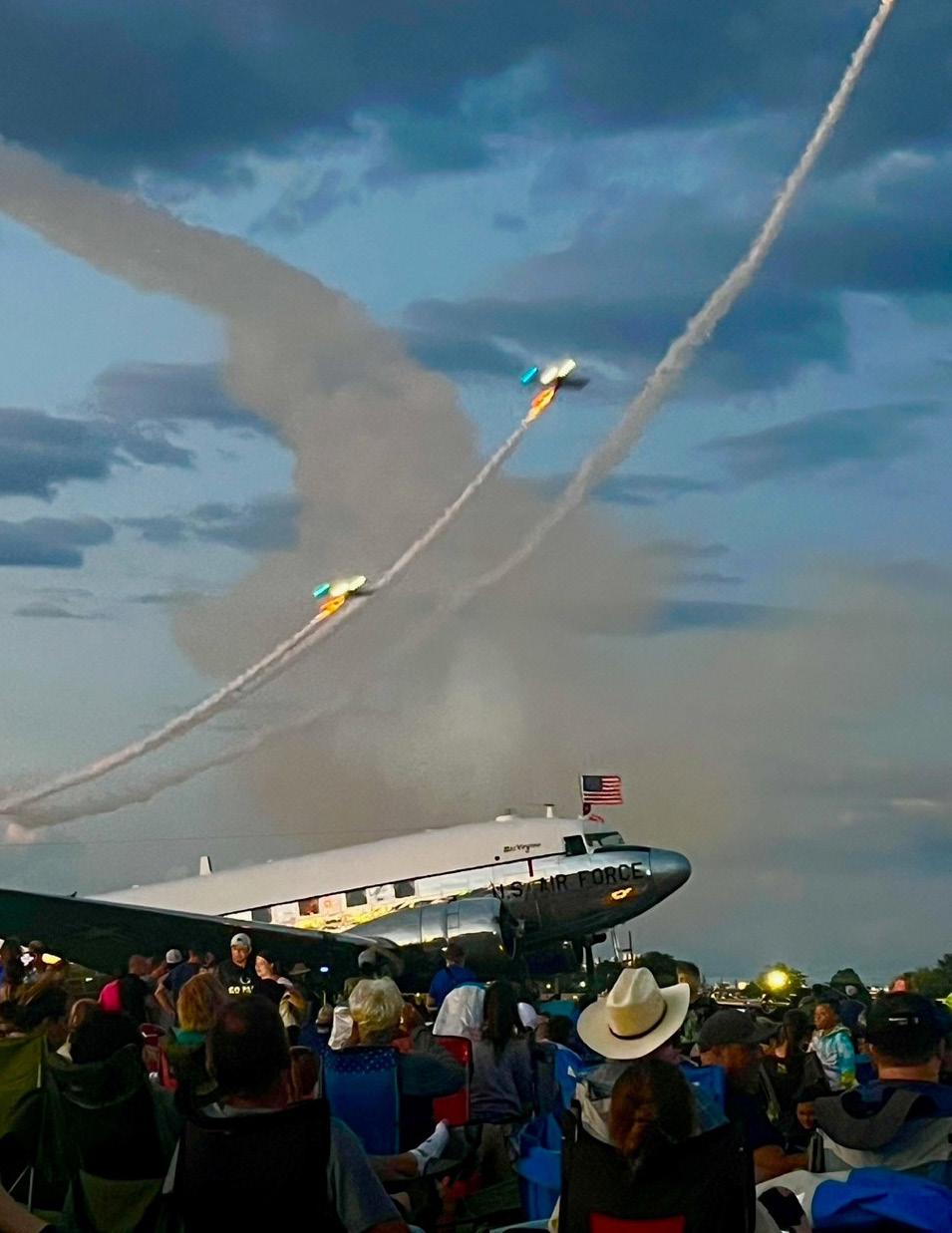 Clockwise from left Jesse, Rob, baby Georgia and Laura Jeffrey in their RV with the 'Plakkerfontein' tents.
Hugh Moubray and Mike Puzey shooting the breeze.
'Plakkerfontein' had its own extraterrestrial visitations.
Clockwise from left Jesse, Rob, baby Georgia and Laura Jeffrey in their RV with the 'Plakkerfontein' tents.
Hugh Moubray and Mike Puzey shooting the breeze.
'Plakkerfontein' had its own extraterrestrial visitations.

The Yashimiti engine is a horizontally-opposed air-cooled 4-cylinder which resembles a Continental O-200. However the Yusimiti is far from an exact copy. Most notable are patented single-piece cylinders. That is, the cylinder head and cylinder proper are a single aluminium casting with an integral iron sleeve.
Most of the new engine’s specifications are standard fare. It’s a 4-stroke, with direct drive and hydraulic lifters. It displaces 3.3 liters (212 cubic inches), is rated at 110 hp at 2800 rpm and runs on 95/98 octane mogas or 100LL. Installed weight is listed at 75 kg or 165 lb (with
oil). Yusimiti has fitted their engine with dual electronic ignitions.
The single engine on show was wearing a carburettor but fuel injection is said to be an option. A conventional accessory section houses the two ignition/distributors, oil filter and pumps. The engine is supplied complete with carburettor, alternator, ignition, oil filter, mechanical diaphragm fuel pump and vacuum pump. List price is a competitive $25,000. There is no certification so the engine is for experimental applications only.
Yusimiti says a 3 year warranty is in the works and they are looking for dealers.
FROM THE TROPICAL COASTAL belt north of Richard’s Bay to the temperate coastal fynbos areas at the southern tip of the continent, from the coastal deserts along the northern sections of the West Coast to the arid regions of the Namaqualand and the savannah desert regions of the Kalahari, the change in both landscapes and the animals that reside in each area is dramatic as you move from region to region.
In April 2023, together with some good friends Len Klopper, David Lehr, Michael Paans, Gert Coetzee and Karl Eintracht, I was able to experience several of these areas first hand from the elevated vantage point of my gyrocopter as we flew from the Cape to the Kalahari to attend the Kalahari Bundu Bash Flying Adventure.
With a light mist blanketing the ground to the east, we departed Morningstar and followed the N7 northwards.

South Africa is a place of massive contrasts, especially in terms of the geography, biodiversity and the sheer variety of habitats to be found across the various corners of our country.
This landmark event on the flying calendar takes place on Koppieskraal Pan, a flat mud and salt pan in the middle of nowhere in the Kalahari, with over 70 aircraft of all types flying in from all parts of SA.

My next article will have more details about the event itself, but Part 1 serves to describe the two day flying adventure across a multitude of varying landscapes that it took just to get there!
Departing Morningstar Flying Club on a perfect blue-sky day, we headed straight out to north, intersecting the Berg River just past the Hopefield wind farm. After a flypast over fellow pilot Julian Melck’s magnificent homestead, Kersefontein Guest Farm, we followed the river to the sea at Laaiplek & Velddrif before flying along the coast. There were multiple small pods of dusky dolphins enjoying the surf and playing in the backline. Everywhere I looked there were birds working just offshore and so many small baitballs in evidence.
Rounding the impressive Baboon Point we arrived at the famous surfing mecca of Eland’s Bay, then continued on to Lambert’s Bay where we encountered a thick band of fog. The original plan was to route to Strandfontein before heading inland but the fog was impenetrable and we diverted direct to Vredendal Flying Club for a refuelling stop and a leg stretch.
Taking off again we followed the Sout River to the N7. This is the first time over the course of many trips (mostly by road) through this area that I have seen standing water in the Sout River and the entire, normally dry and arid Knersvlakte area was looking uncharacteristically verdant.
We routed along the Saldanha Sishen railway line following the edge of the escarpment for quite a way before climbing up and over into the moonscape of a bone dry Bushmanland, passing the Loeriesfontein wind farm for a landing at the railway siding airstrip at Halfweg.
After a brief refuel, we tackled the last leg for the day, flying up to the Orange River and landing at Augrabies Falls Dundi Lodge.


Eventually our ground crew in the form of Karl Eintracht arrived looking rather worse for
wear, after having a trailer tyre burst on the notoriously bad stretch of gravel road between Loeriesfontein and Poffadder.
We enjoyed a magnificent dinner and a lovely bottle of red wine before collapsing into bed.
The following morning’s schedule included only a single flight to reach our destination, so we took a small detour and went the scenic route. After getting airborne I climbed up to
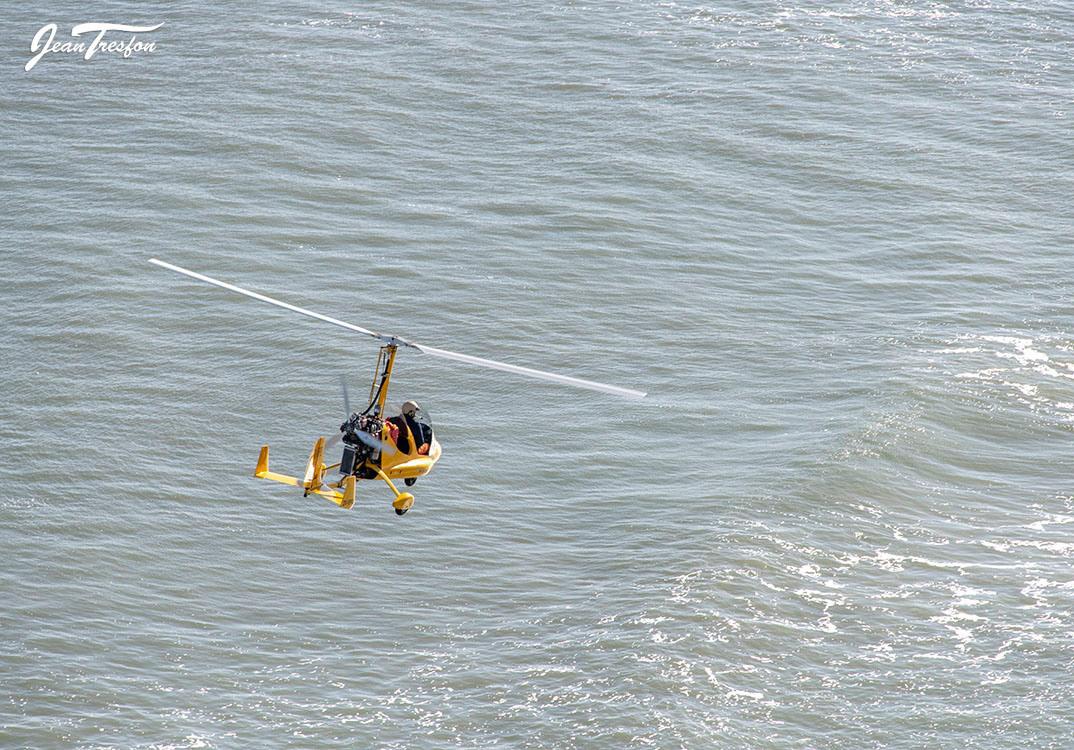
the required 5,500ft to overfly the Augrabies National Park and take a few photos of the Augrabies Falls, before dropping back down and re-joining our gaggle of gyrocopters.

Dusky dolphins enjoying the surf just south of Baboon Point.
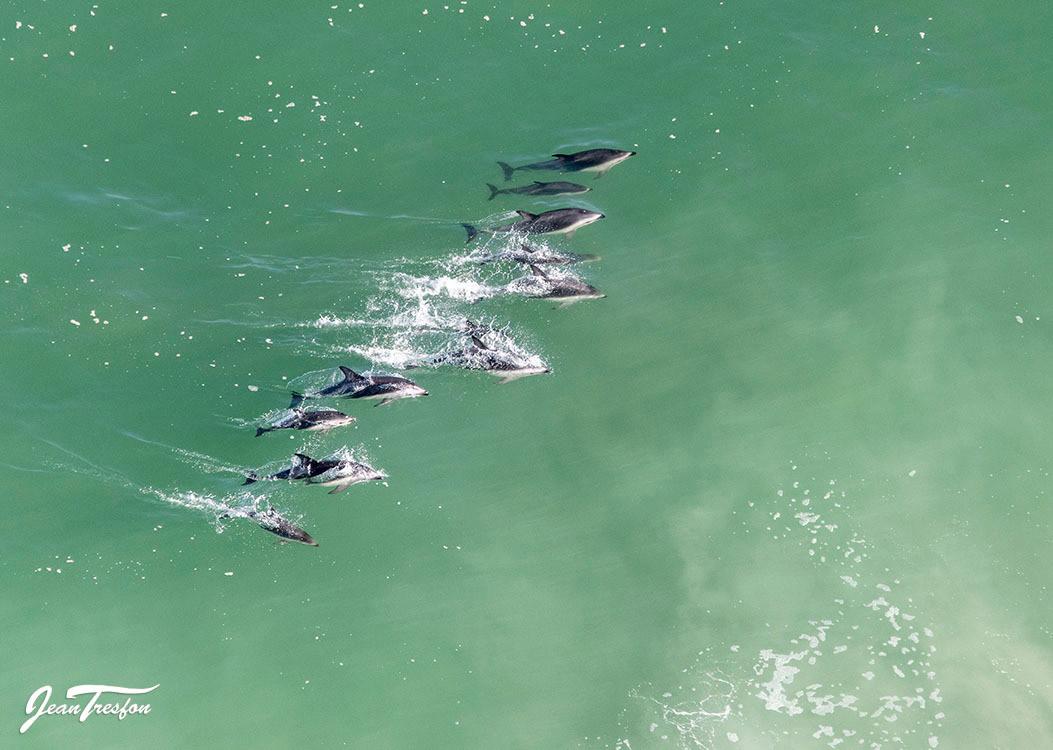
And finally the terrain changes to the stunning red dunes of the Kalahari proper.

We followed the Orange River to Kakamas before turning out to the north and routing direct to Koppieskraal Pan. The topography changed from mountainous terrain to grassland savannah, and eventually to the beautiful red dunes of the Kalahari. The huge pan could be seen from miles away and we arrived at midday, with quite a few aircraft already parked on the pan below.
We landed just in time for a welcome lunch, before pitching our tents and preparing for three days of epic flying adventures in the Kalahari...

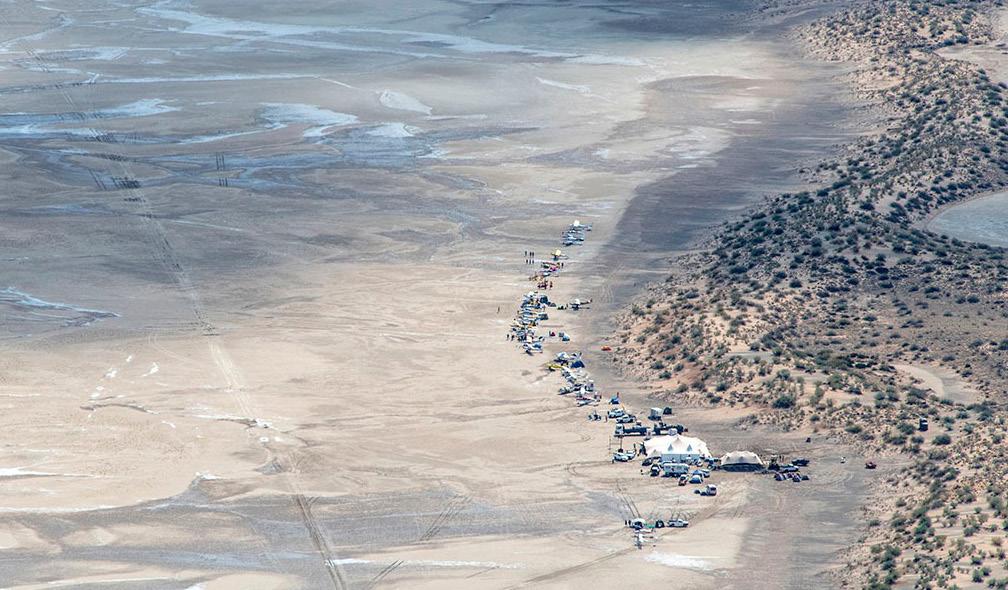
POOLEYS HAVE DONE a world-class job on this complex subject. They have packed a daunting amount of material into the book’s 360 pages – but as we have come to expect from the Air Pilot’s Manuals, the information presentation is a model of simplicity and clarity.
Navigation is probably the one book that needs the most ‘localisation’ to make it relevant for South African students. And Pooleys does not disappoint. All the key information is derived from South African charts and conditions. So it really is applicable to South African PPL students.

The subject matter is wideranging – from a description of the earth (no, it’s not flat, it’s an oblate spheroid) and it's revolving around the sun, to GPS navigation. This book lays a solid groundwork for any student to learn how to get around the planet without getting lost (unsure of their position).
Being published in good old-fashioned print makes it sometimes difficult to reproduce all the details from the 1:1,000,000 aeronautical charts. Pooleys overcomes this by reproducing all the symbols accurately in the accompanying keys and explanations.
The book is not just built around the PPL syllabus requirements, it tackles all the key subjects that are essential to safety – such as how to calculate density altitude, and timing and fuel management.
If I have one quibble with be book, it assumes the student will still be using the good old fashioned circular slide rule ‘confuser’ computer, and the Pooleys one at that. The bottom line though is that it is a required skill for the PPL syllabus. These days I expect most students splash out on the microchip brain that is the CX-3 calculator. But the great thing about circular computers is that they are small and light and fit into flight bags – and the batteries never run out, (it doesn’t have any). I still use mine.
Section 3 is a thorough exposition of radio navigation aids. The book is particularly good on using the VOR and in recognition of the increasing controlled airspace, covers radar particularly thoroughly. Twenty pages are used for radar and a full 35 pages are devoted to the VOR.
However just nine pages are used for the GPS section. This is, I suppose, more a reflection of
Navigation is one of the more challenging subjects for PPL students as it is a complex topic that most students approach with very little prior knowledge.
how easy GPS is to use compared to the VOR. And crucially, the GPS section covers the two basic mistakes that ‘newbie’ GPS users make: They use the ‘Go to’ function rather than the flight planning function. And they don’t read the manual (RTFM!). It took me five years to get half-good at the industry standard Garmin GNS430.
Rather anachronistically, thirty pages are devoted to the NDB and ADF. This took me straight back to sweating out QDM and QDR intersects for my instrument rating and is still required for the night rating. These days I doubt if many Piper and Cessna basic trainers even have working ADFs. And there are almost no NDB transmitters anywhere in South Africa. But IT’S IN THE SYLLABUS. And it’s nice to navigate while simultaneously listening to music from the medium wave radio station you are homing in on.
Section 4 is headed Practical Navigation. This has extensive explanations of the plotting and dead reckoning basics such as the 1 in 60 rule –and how to fly a diversion. This is also required knowledge in the PPL syllabus. It is also great for competing in navigation rallies and the State President’s Trophy Air Race.
Quite simply, this is an excellent reference book that is required study material to pass exams – and should remain as a refence on every pilot’s bookshelf. The bottom line is – if you are studying to pass the PPL exams – this is the reference that you need.
The books may be obtained from all good pilot supply stores – or order online from: https:// www.pooleys.com/shop/category/books-ebooksmanuals-resources/air-pilots-manuals-forsouthern-africa/
j
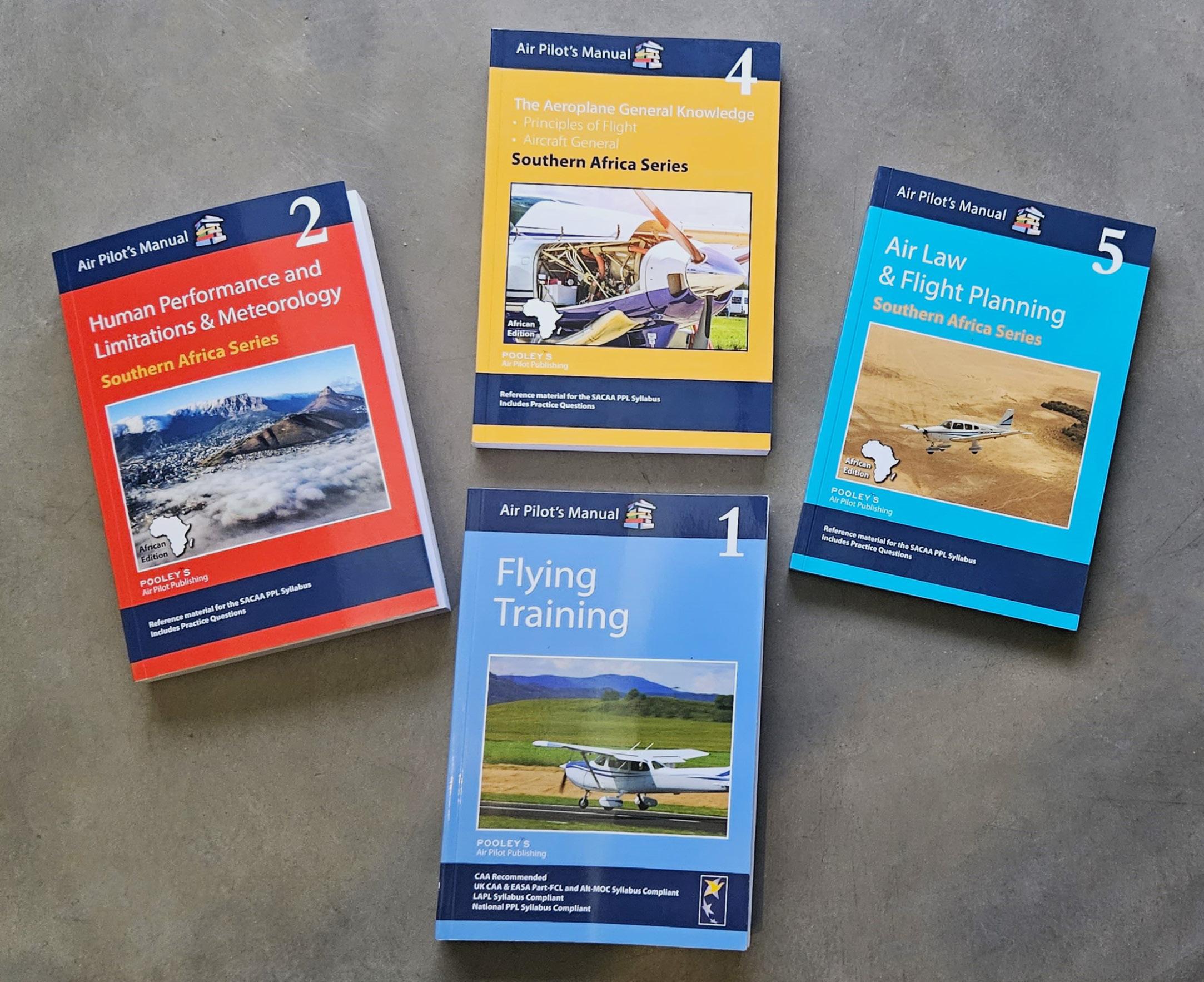


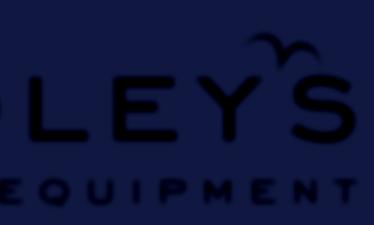







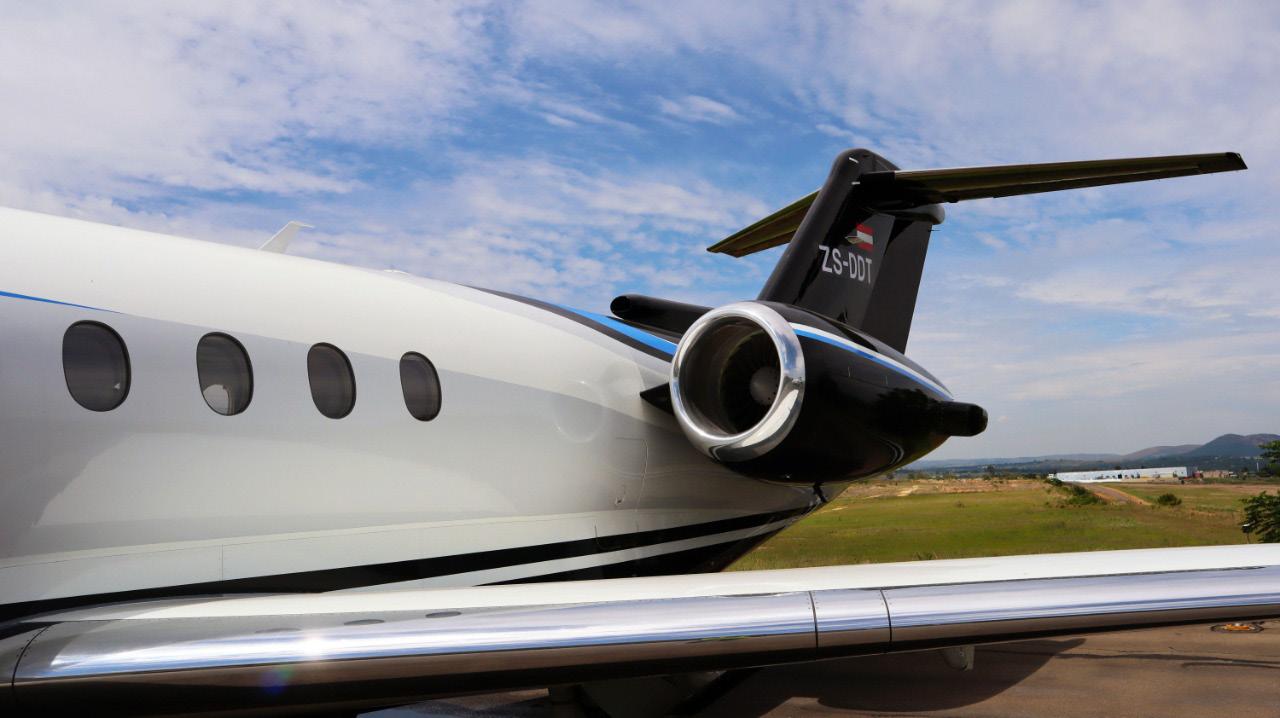

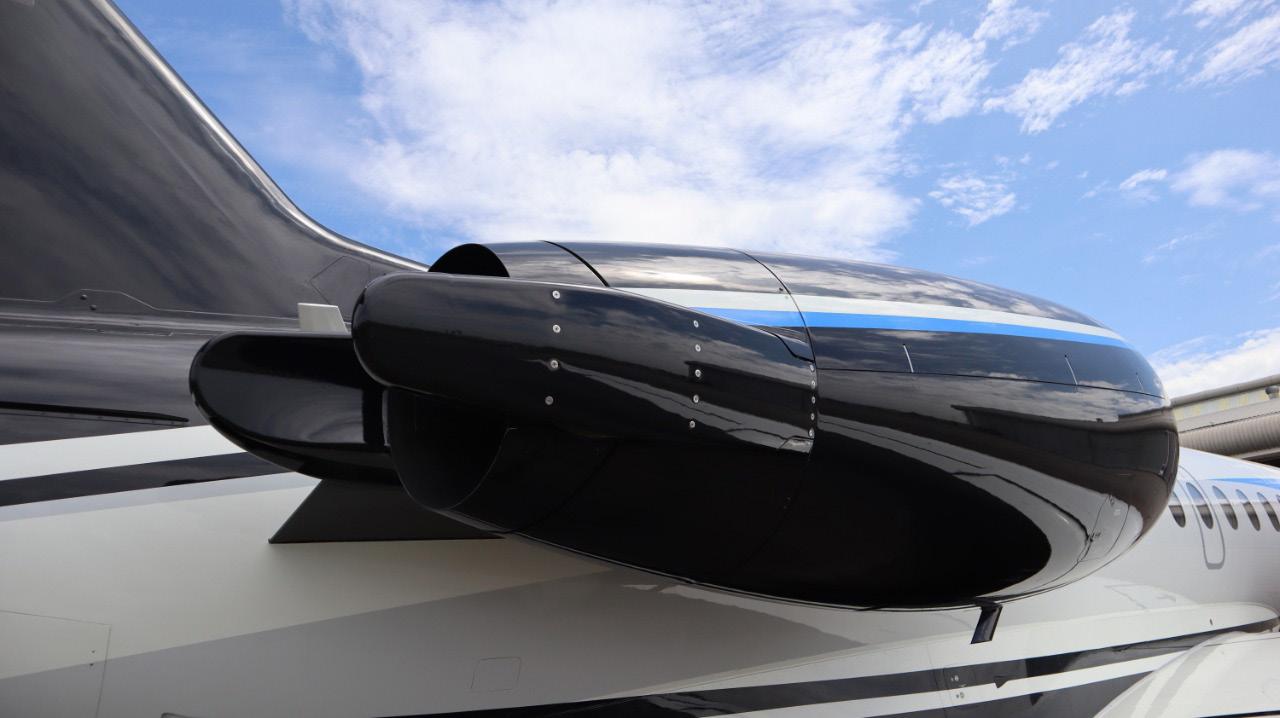






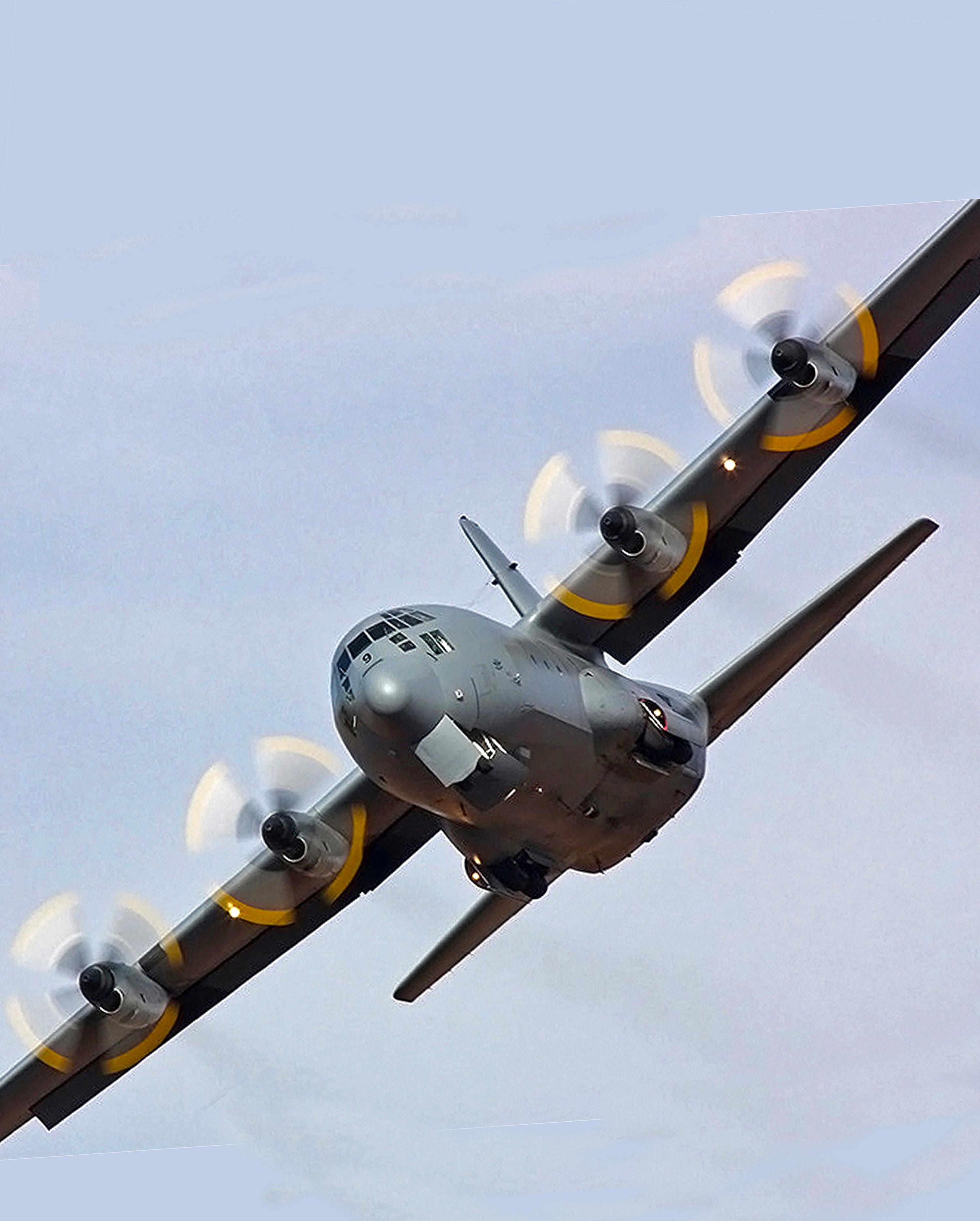
04 08 12 15 16 19 20 24 26 27 28 29 30 32
Publisher Flyer and Aviation Publications cc
Managing Editor Guy Leitch guy@flightcommag.com
Advertising Sales Wayne Wilson wayne@saflyermag.co.za
Layout & Design Patrick Tillman: Imagenuity cc
SEPTEMBER 2023
ADMIN:
+27 (0)83 607 2335
TRAFFIC:
+27 (0)81 039 0595
ACCOUNTS:
+27 (0)15 793 0708
Bush Pilot - Hugh Pryor
Pilots - Laura McDermid
John Bassi - Taming Tailwheels
News - Boeing 777X- sales
Defence - Darren Olivier
AME Directory
Jeffrey Kempson - Okavango Disconnect
Laura McDermid - Universal Air Evac
News - Boeing’s 737 MAX split
News - Benin’s Super Pumas break cover
Alpi Aviation SA: Flight School Directory


Merchant West Charter Directory
Skysource AMO Listing
Backpage Directory
THE LATEST
Africa initiative. An IATA press release says it aims to maximize the contribution of aviation to development across Africa by better serving passengers and shippers.
Under Focus Africa, private and public stakeholders are committed to delivering measurable improvements in six key result areas: Safety, infrastructure, connectivity, finance and distribution, sustainability, and skills development. It reads like a shopping list of fixes for the beleaguered African airline industry.
IATA and the African Airlines Association (AFRAA) have agreed a joint work programme which includes five key objectives: Promoting air connectivity by working together with governments to support the implementation of the Single African Air Transport Market (SAATM). The objective is to get the 23 countries which have committed to SAATM to actually do something to enable it. And also to encourage more countries to join SAATM.
The second objective is to unblock airline funds held by governments. Since 2018, a significant amount of blocked funds have been repatriated from Angola, Ethiopia, Ghana, Nigeria, and Zimbabwe through working with the respective governments. However, $1.5 billion in airline funds are still blocked across the continent.
IATA has been spectacularly successful in improving the once disastrous African aviation safety record by creating the IATA Operational Safety Audit (IOSA). A third objective is now to improve operational safety
through a data-driven, collaborative programme to reduce safety incidents and accidents. This includes improving data sharing and promoting IATA safety auditing programmes including IOSA and IATA Standard Safety Assessment (ISSA).
The fourth objective is to achieve reasonable levels of taxes and charges by focusing governments on the long-term social and economic benefits of aviation. User charges in Africa are 8% higher than the global average. IATA argues that Infrastructure charges must be set at levels that are fair, justified, and reflective of a value service proposition for airlines and passengers. Efforts in this area have resulted in charges reductions in Chad, the Ivory Coast and Zambia over the past five years.
The fifth objective is to support compliance with the Carbon Offsetting and Reduction Scheme for International Aviation (CORSIA). CORSIA is a key element of the commitment to achieve net zero carbon emissions by 2050 agreed to by the industry and governments. It bears noting though that the CORSIA objective is probably the least likely to succeed as the African airline industry and governments have so far tended to take the view that environmental concerns are a rest of the world problem, as Africa cannot afford to pay these taxes. Further as African airlines contribute a minuscule less than one hundredth of a percent of carbon pollution to European skies, it is irrelevant anyway.
Thus will African aviation remain a special case.
African aviation will remain a special case
The seemingly unremitting challenge of trying to get Africa to transcend government interference and exploitation of the African airline industry has seen a fresh initiative of combined forces.
BASICALLY
engineers do is to tell you what you’ve found. So, you spend enormous amounts of money digging a hole thousands of metres into the ground and then, for an extra half million bucks or so, the wireline people will come along, armed with lashings of spaceage equipment and unintelligible jargon and tell you there’s nothing down it.....nine tenths of the time. Only about one exploration well in ten actually produces any significant oil or gas.
To find out what’s down the hole, the wireline people have an extensive array of highly sophisticated tools available to tell you if there’s oil, or gas, or water, down there. They can tell you exactly where the product is, how fast it will flow out of the storage rock, how deep the production zone is, and where you are in the geological formation.
make extensive use of expensive metals like titanium and gold and some of the instruments involve the use of nuclear sources.
An oil rig costs upwards of thirty thousand dollars a day to hire, so you won’t want it to sit idle for long. When you want the wireline team, you want them NOW and you want them to complete the job yesterday.
That’s where I come in. I fly the aeroplane, a Pilatus Porter, an extraordinary little ten-passenger (if they like each other as it has rather intimate seating arrangements!) single-engined turboprop which has very undemanding runway requirements. In fact, you can normally find somewhere to land right next to the rig to deliver an urgently needed tool, spare part or operator.
And when they’ve done all that, they can puncture the well-casing at the precise spot where the oil or gas is so that it can flow into the well and thence to the surface. All at a cost, you understand. Even some wireline people have wives and families to look after.
The tools they use have to be very rugged because they must be able to operate normally in temperatures of up to three hundred degrees Celsius and under pressures of up to ten thousand pounds per square inch. They
All these toys must be kept working by someone. He’s the Electronics Technician and he lives in a world of test equipment and computers.
The one we had on the particular project I’m writing about was an English nerd called Richard. He didn’t enjoy the job much, possibly because we lived a celibate existence in the middle of the Libyan desert, and he had a quite exceptionally attractive wife at home in England. This could also have accounted for a habit which annoyed his colleagues.
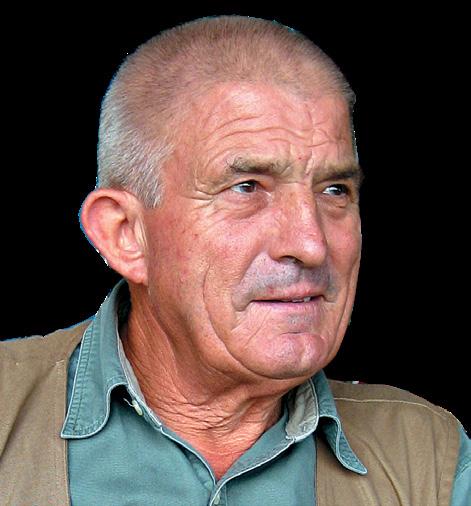
“Wireline” is on the cutting edge of oilfield technology and that’s probably why it’s so extraordinarily expensive.
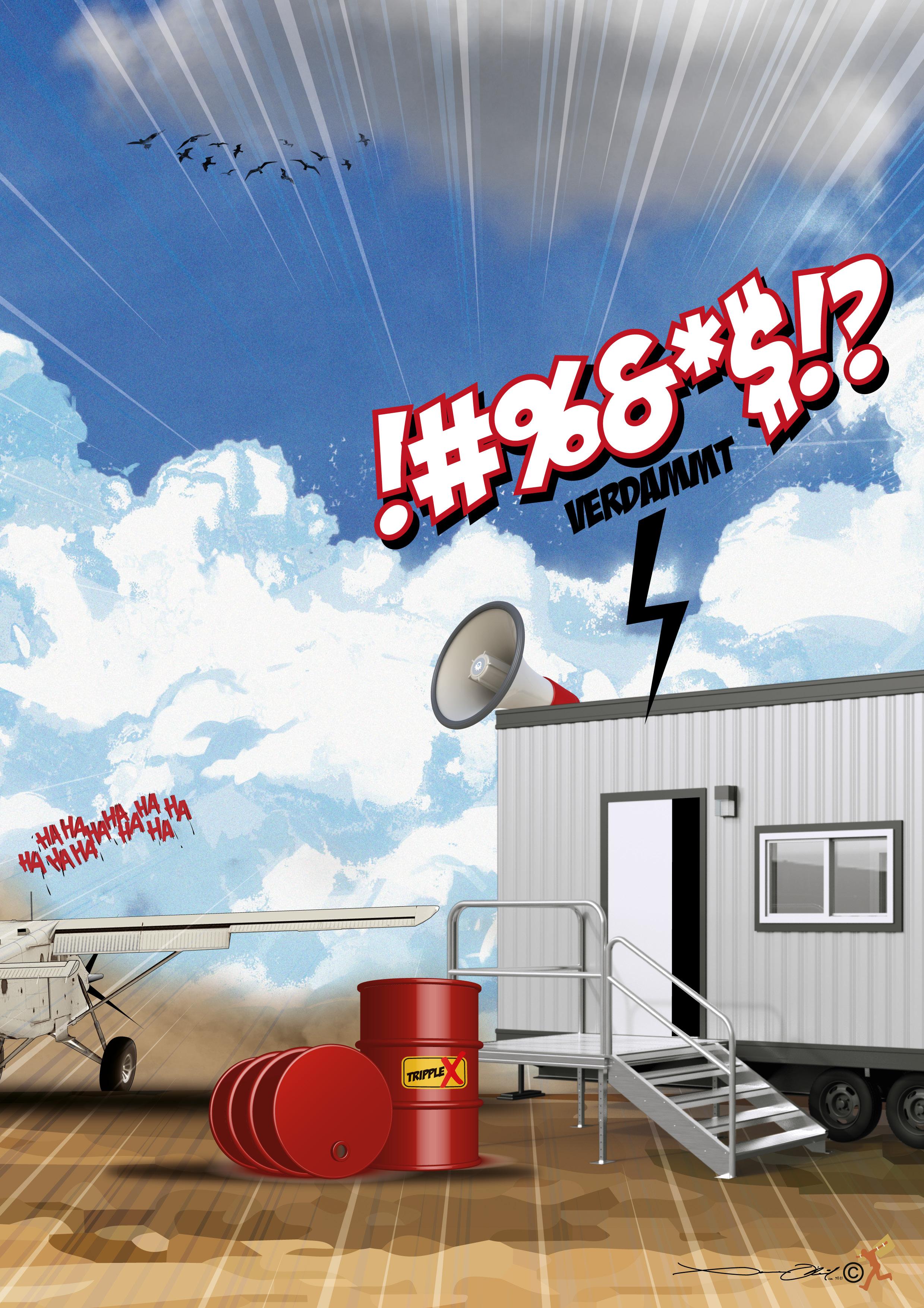
Frequently, two or three days before he was due to come back from leave, his wife would call up the office and tell them that Richard was too sick to come back to work. She would fax the doctor’s certificate through as proof of Richard’s incapacitation. What was not generally known was that the doctor was in fact her brother. We jealously suspected that Richard must have had some pretty impressive hidden talents to earn such loyalty from so delightful-looking a young lady.
About the fourth occasion that the fax came through, the team was very busy indeed. Several wells had come up for final logging at the same time and the demand for logging tools outstripped the ability to service them.....because Richard was at home, too sick to come to work.
It looked like there would be an emergency unless a replacement could be found for the ailing nerd. So Jean Charot, the Technical Services Manager, screamed for help. His call was answered by the German branch of the company who had an Electronics Technician who was taking his annual leave. They would have to call him back so that he could fill in for Richard until his obliging brother-in-law said it was OK for him to resume his duties.
He came down to Zella with Libyan Arab Airlines and I flew down there to pick him up and take him back to One-Oh-Three Alpha where we were based. Ralph turned out to be something of a star. A very amiable and hardworking character, he had one outstanding quality. He was an excellent and experienced brewer of beer and he had brought his own hops essence with him from Germany.
We could supply him with virtually unlimited quantities of Baby Malt, yeast and sugar and Ralph did the rest. And so started a tradition which rapidly made Ralph an essential part of the team’s social life in this Alcoholfree desert paradise.
One evening, towards the end of Ralph’s tour, as we were settling into the first relaxing bottle of Ralph’s Special Tripple-X, after a long and exhausting day
in the desert sun, the Selcall siren went off. It was mounted on the roof of the office and let out an earsplitting wail when somebody was trying to contact us on the radio. We had the same system installed in the aeroplane so that we could call people up and tell them what time we were going to land at their destinations. We didn’t have a siren fitted in the plane, so people couldn’t call us, but all we had to do was to stab the appropriate numbers into the box and press the “SEND” button and we could raise any of the companies stations anywhere in Libya.
This time it was Jean Charot and he wanted to speak to Ralph, so Marvyn, our team Manager went and called Ralph away from his beer to the radio.
“Hello”, said Ralph into the microphone, “Who’s calling please?”
“Bon soir Ralph”, came the reply from the ether, “’ere ees Jean Charot at Tripoli” The French accent was very strong, even over the crackle of static which came from the speaker. “We ‘ave a terrible problem weeth Richar’. ‘ee ees steel very seek een Angleterre and zee Docteur say ees no good ee come to work. Ees possible you make extra two week?”
Ralph was obviously not too happy to have his leave curtailed like this, but seeing as how the company was in a jam and he was, after all, receiving the “Libya Coefficient” which effectively about doubled his salary, he agreed. Ursula, his wife, would not be too happy, but he’d be able to smooth things over, no doubt.
Twelve days later, at almost the same time in the evening, the Selcall siren sounded, and once again it was Jean Charot from Tripoli, wanting to talk to Ralph.
“Pardonnez-moi Ralph,” he blurted out, “’ere ees Jean Charot speaking. Ralph...I ‘ave to keep you one more week. Zees Richar’ ees steel very seek. Zee Docteur ‘ee send me a fax jus’now. Ees beeg problem for me. OK you stay on?”
Ralph didn’t like this at all and neither would Ursula. What was to say that “zees Richard” would be better
I was going to tart up the plane a bit
in a week anyway? It would also mean that he would miss Ursula’s brother’s wedding. She wouldn’t like that, particularly since he was supposed to be the Best Man.
On the other hand, what was Jean Charot going to do without an Electronics guy? There was no doubt about it, the workshop was flat out with work. Ralph had only just managed to keep ahead on the “Q” checks and things would come to a grinding halt in a couple of days if he left them without a Technician. He didn’t like it, but there seemed little alternative.
“Listen Jean.” he told the radio, “This is most inconvenient. Isn’t there anybody else who can fill in?”
Pardonnez-moi, Ralph,” Jean sounded almost close to tears, “Je suis desolé, I am desolated, but I cannot find nobody to replace you. I am so sorry Ralph, please believe me, I need your help. I increase your Coefficient weeth twenty percent, yes? Eees OK?, no?”
“OK, Jean,” came Ralph’s reluctant reply, “I’ll stay on, but please make sure it’s no more than a week. And don’t forget about the coefficient!” he added as an indication of his annoyance.
“Sank you Ralph. You save my life. I make eet worth eet for you! Don’t worry!” The radio sputtered back into background static again.
During the course of the coming week, Ralph decided to brew a bumper edition of his Special Tripple-X, to celebrate his belated departure.
The day before he was due out was a Thursday and for the first time in weeks there was a lull in the frantic work schedule. Everyone was in camp on the Friday and we were anticipating a day of rest. There were no flights planned either and I was going to tart up the aeroplane a bit if I suddenly got the urge. Thursday night promised plenty of potential, judging by the bottles stashed away in the locked recreation room toilet.
We started at sixish in the evening and at around seven I had a brilliant idea. I wandered over to Marvin and
had a quiet word in his ear. “What do you think?”
“Too good to miss!” he said.
So I went out to the plane, which was parked just the other side of the camp fence. I unlocked the cockpit door, climbed in, found the Master Switch and turned it on. I then selected the Radio Master, Dialled up the company frequency on the HF and stabbed in the Selcall code for One-Oh-Three Alpha. I pushed the “SEND” button and instantly heard the wail of the siren coming from the roof of the office. As previously arranged, Marvin answered the Selcall and went to get Ralph to the radio.
“Bon soir Ralph!” I said in my best Franglais accent, “Zees ees Jean Charot at Tripoli. Ralph I do not know ‘ow to say zees, but zee Richard ees steel not betteur. Zee docteur ‘ee say zat zee Richard need one month ‘oliday after zee seeckness, so I ask you to make jus’ one more month.....Please Ralph.....I make more twenty percent coefficient for you.....’allo Ralph.....’allo..... you steel there Ralph?”
Ralph, who had already absorbed a few Special Tripple-X’s, was in orbit.
Then it came.....A torrent of German filled my head-set like lava and judging by the tone and volume, it was not all polite.
I couldn’t carry on, I was laughing so much, so I closed down the plane and ran back to the office. Marvin was doubled up outside the office door, crying with laughter, while Ralph continued to shovel pure vitriol into the microphone. It took me a full half hour to convince Ralph that it was only a joke and that it was our way of telling him that we didn’t want to lose him.
After that the party really sizzled and nobody got to bed until after midnight. Ralph obviously got the taste in a big way, because he didn’t wake up until about ten o’clock the next morning. His flight to Tripoli had left unusually promptly for Libyan Arab Airlines, at seven!
A torrent of German filled my head-setLAURA MCDERMID
The Rwanda bloodshed began in April 1994. Also known as 'Genocide Against the Tutsi in Rwanda', the racial murders spread throughout the country with shocking speed and brutality, as ordinary citizens were incited by local officials and the Hutu Power Government to take up arms against their neighbours.
IT ALL STARTED ON 6 APRIL, when the Dassault Falcon 50 carrying the leader of the Rwanda government, Juvénal Habyarimana, and Burundi’s president Cyprien Ntaryamira was shot down over the capital of Kigali, killing all on board.
Within an hour of the plane crash, the Presidential Guard, together with members of the Rwanda Armed Forces (FAR) and the Hutu militia groups set up roadblocks and barricades and began slaughtering the Tutsis.
The mass killings quickly spread to the rest of Rwanda, and within three months the Hutu ethnic majority in Rwanda murdered as many as 800,000 people, mostly Tutsi minority.
The Rwandese Patriotic Front gained control of the country in early July, forcing 2 million refugees to flee their homes, exacerbating what had already become a full-blown humanitarian crisis.
Eight days after the Falcon was shot down, I flew the Reuters news team in a Cessna Caravan 5Y-TAS from Nairobi’s Wilson Airport via Mwanza in Malawi (for immigration and customs purposes) to the Ngara district in Tanzania, where one of many refugee camps was established to accommodate the masses who had fled Rwanda.
My passengers were unusually quiet; we were all shell-shocked and utterly horrified by the atrocities that were unfolding in Rwanda.
we were all shellshocked and utterly horrified
The United Nations had peacekeepers in Rwanda, the UN Assistance Mission for Rwanda (UNAMIR), and 450 of them came from Belgium.
Rwanda had been one of the biggest recipients of Belgian development aid. From 1990 - 1994 the Belgians did all they could to promote dialogue. As the regime started getting more oppressive, they encouraged the Hutu opposition parties, denouncing human rights violations, political assassinations, and localized ethnic massacres. Everything suggests that they never really believed that a people who had been their protégés for so long, were capable of genocide.
On 14 April, foreign minister Willy Claes told UN Secretary-General Boutros Boutros-Ghali that Brussels intended to withdraw its peacekeepers. There was no objection in Belgium to effectively abandoning Rwanda to the executioners.
Rwanda’s airspace had been closed in April following the exit of the Belgians. The first time I flew into Kigali following the eruption of violence was on 21 July 1994. We were one of the first civilian aircraft to do so.
I was flying with friend and fellow colleague, Peter Polhill (affectionately dubbed Pothole), in Aircraft

Leasing Service’s King Air, 5Y-BJM, call sign Red Cross 435 (or just Red 435).
To establish peace and implement some form of normalcy, the International Committee of the Red Cross (ICRC) was to meet members of the UN in Kigali to discuss the way forward.
As I announed my intention to land at Kanombe International Airport, I received chirps from fellow pilots: ‘Hey Cuddles, you do know that Kigali is closed’.
My standard answer was yes, I did, but I had obtained special permission. In fact, we had only received clearance late that day, and the ICRC had asked to be taken right away.
I can’t recall anyone being in the tower, although it is likely that it was manned by someone from the UN.
The one thing that I will never forget, is flying over the city of Kigali. The town was devoid of life. Not a donkey, cow, or person stirred. Cars, carts, and bicycles had been abandoned exactly where their owners had left them. No clothes flapped on washing lines; no smoke rose into the air.
There were no signs of life, it was a ghost town.
‘Kigali Tower, Romeo-Echo-Delta-four-three-five, final approach for runway two eight’ I relayed our position on the tower frequency of 124.3.
No one knew what to expect as we taxied to the parking area. Pothole opened the door and had a good look around before getting out.
There was not a soul in sight. Eventually, we saw two people waving at us from the terminal door, they held up a big sign on which were written two letters: U.N. Once we were sure the area was secure, we allowed our passengers to disembark.
Whilst our passengers had their meeting next to the aeroplane, Pothole and I decided to look inside the deserted airport building.
It was like standing inside a Jackson Pollock painting where someone had splashed a tin of burgundy paint over everything. Pieces of ceiling board hung in tatters
whilst dust and chunks of plaster covered the floor. I felt like an interloper in a nightmare and told Pothole that I needed to get some air, so we headed to the tower.
A myriad of empty bullet casings littered the ground around us. I pointed out some odd-looking gouges in the tarmac to Pothole.
He explained that the explosion from hand grenades was responsible for the craters and pockmarks on the tarmac surface. These gruesome scenes were stark reminders of the innocent people that were butchered in cold blood.
I couldn’t wait to leave Kigali and its horrors behind.
Two weeks later, I ferried ICRC staff in Red 435 to Kilimanjaro to attend a convention on ‘The Rules of War’. I couldn’t help but ponder on the irony of there being rules for war.
That early ICRC and UN flight paved the way for further flights into Kigali. Aircraft Leasing Services
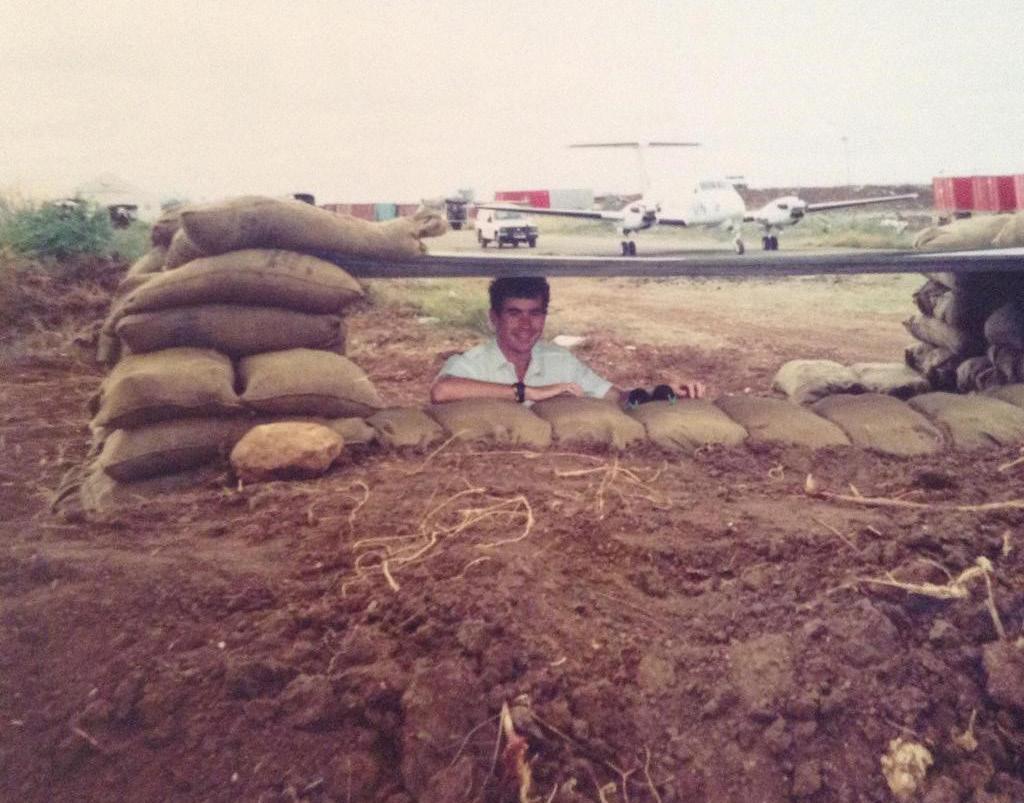
had a contract with ICRC, and Kigali had become a regular route.
The UN managed to secure Jet A1 fuel at the airport, and we would either route Wilson-Kigali-Bujumbura (Burundi)Wilson or Wilson-Ngara-Wilson.
European countries, under the UN umbrella, were assisting with the provision of armed troops. It was on one of these flights that I met the President of Ireland, Mary Robinson, who was there to see if and how Ireland could provide aid.
On 13 October, I ferried President Robinson and her entourage from Wilson to Kigali. ALS’s planes were all occupied, so I flew C404 5Y-MCK, a private aircraft owned by my friend Kim Mackenzie.

I helped the passengers disembark. The press had tons of camera equipment that needed to be unpacked carefully, a laborious task that took ages.
I was only able to carry out the post-flight checks once everyone had gone. Fuel...check; chocks…. check; pitot cover…. check. I filed my flight plan for the following morning as my passengers wanted to be airborne by 07h00. By the time I got to the terminal building, it was completely empty.
They had forgotten about me.
There were no phones and most certainly no taxis in Kigali, so I returned to the aircraft. This was not the first time I had to sleep in an aeroplane. All things considered, the C404 could be made comfortable.
I had access to the VIP lounge in the terminal building. The airport had been restored since my first visit all those months ago, and there was running water and clean ablutions. I had bought my overnight kit with me and always travelled with thermos flasks of hot water, coffee, and tea. I even had a small bottle of Tabasco which I poured on everything, not only for the taste but to kill seen and unseen bugs.
Following a dinner of instant noodles, I cleaned up and brushed my teeth. Using the windscreen cover as a blanket, together with a silver ‘space’ blanket that
I found in the medical supply box, I made myself comfortable and settled in to read. With UN troops all around, Kigali airport was probably the safest place to be, and I spent a very peaceful night in the C404.
The next morning whilst I waited for my passengers, I used the last bit of lukewarm water in my flask to fix myself a cup of coffee.
They arrived back looking haggard. President Robinson was bleary-eyed, and the men all sported five ‘clock shadows. I did my best to look sympathetic as I listened to their stories about the gigantic bedbugs, the constant noise, and the lack of water and sanitation in the hotel.
I smiled to myself; Karma is a bitch.
I herded them onto the C404 and flew to Goma, in the DRC, which was half an hour away. From there I dropped my passengers at Jomo Kenyatta International Airport.
As I headed back to Wilson, I switched my Walkman on and hummed along to Simon & Garfunkel: “God bless you please Mrs. Robinson, Heaven holds a place for those who pray, Hey, Hey, Hey”.
I sincerely hoped that her prayers for peace would be answered.
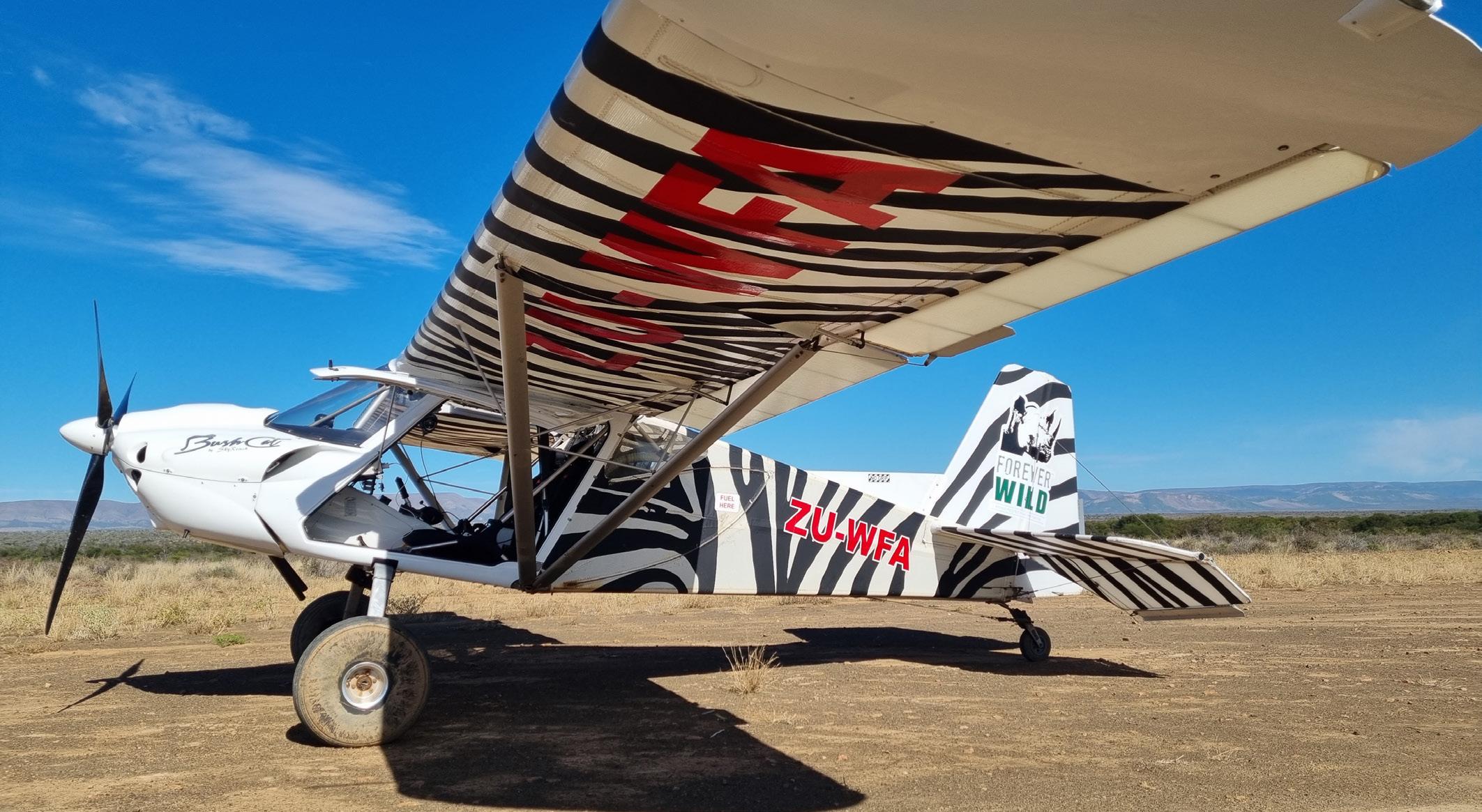
Flying used to be – and should still be – about feeling stoked. About having real fun, whilst maintaining standards appropriate to our profession.
For me – and perhaps for many – those pleasures seem to have diminished. Undermined by the endless mindless SACAA bullshit, the competitive greed of operators undercutting prices, politics, unqualified operators stealing clients and constantly fighting for permits and clearances to just get work.
For the first time in my career, I’m aware of a kind of “brotherhood” among tailwheel aviators. This does not happen with commercial helicopter operators, as in my experience, most helicopter pilots suck. They have too much attitude, ego, greed and competition and work in a hard commercial environment. And so the basic joy and pleasure of flight has been killed by the demands of operating commercially.
The privilege of experiencing Oshkosh this year drove home some realities. Firstly, I need a LOT more
up to a world of fun
And so old war birds have much more meaning for me - and as for their pilots, huge respect.The Wilderness foundation Bushcat in its zebra livery. We use this aircraft to assist helicopter operations, locating rhino.
money to play (that’s not going to happen), coupled with such a huge variety of aircraft available (reluctant acceptance that I will probably never be able to fly them all, but I will try) and a realisation that less is so often, more.
So back to my grappling with tailwheels. The Cheetah was my first taildragger, and as mentioned, the first few hours of tailwheel instruction chronicled in my logbook made the score pretty clear—Cheetah: 2. Me: 0.
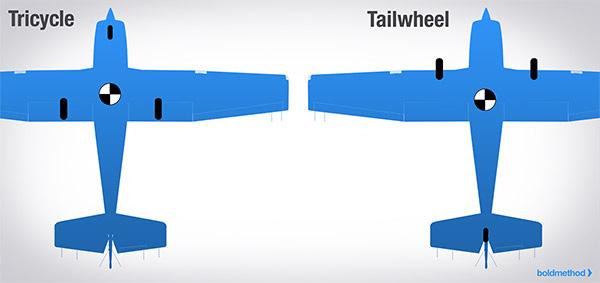
Andy Kasperson always managed to add colourful comments to illustrate the at-times-agonizing progress, ”If you don’t catch it you’re going to become a passenger behind the aircraft,” he reminded me during many of our sessions.
telling me through the vibrations and the noises was a skill that did not come easily.
I came to appreciate the simplicity of the Cheetah, especially in an era of general aviation cockpits chockfull of labour-saving automation. By the time I had logged around 10 hours in the Cat, I felt confident handling the rudder dance the taildragger demanded, even in relatively strong winds.
Eventually by hour five, my grasp on runway dancing improved once I realized I’d been letting the little Cat lead me around on the ground rather than the other way around.
Those repetitive sessions eventually taught me the value of subtle inputs to an aeroplane’s flight controls. Being able to understand what the plane, any plane, is
I later tried my hand flying the locally manufactured KFA Bushbaby, which looks nice from far, but was for me, extremely disappointing. I was then fortunate to fly in the new Bushcat and this understated plane left me in awe. She infused me with a deeper understanding of the fundamentals of flying, seamlessly managing: attitude, balance, fixed airspeeds and a flight path; habits that I had developed in helicopters 35 years ago.
The new Bushcat with the sturdier main gear, larger tires and larger vertical stabilizer, differential toe brakes and a wider cabin is simply incredible, especially considering its value for money. I have since tried out a couple of other local LSA tail draggers and personally feel that the Bushcat ticks all my boxes.
“Why bother with the extra efforts of a taildragger?”
This question is one I used to ask myself and now I laugh at my nosewheel- only trained friends. Even during my early training, as wildly zigzaggy as it became at times, I never thought of my efforts as work, but really more of a challenge. It was one I willingly accepted because it seemed a natural progression to my role in life as a professional pilot. In a tricycle-gear plane, you’re in trouble when your feet start moving. In a taildragger, you’re in trouble when your feet stop moving. In a helicopter you’re in trouble if you don’t set your feet in a fixed position for a particular power setting.
But the desire to understand the plane beyond minimum standards is not the only reason to spend some time with a taildragger. They hone your finesse as a pilot. The huge variety of tail wheel aircraft available today demand these skills.
Each type has its quirks, but all have one thing in common, the in-built desire to ground loop. I initially took it for granted that I knew how to move my feet on the rudder pedals when necessary, whist co-ordinating aileron inputs. These subtle control movements are so responsive on a Bushcat. Many aircraft builders have added links between the rudder and ailerons to help counteract adverse yaw, but these modifications have not helped improve a pilot’s understanding of the messages their planes are trying to send them.
Flying taildraggers gives you instant street credibility, a presumption of competence that opens up new opportunities. However, let there be no doubt, learning to fly a taildragger — even when you’re able to practice regularly, can easily become a humbling experience for the complacent pilot.

BOEING HAS AMASSED a total of 363 net orders for the entire 777X family, split between just eight for the 777-8X, 55 for the 777-8F and 300 for the 777-9X.
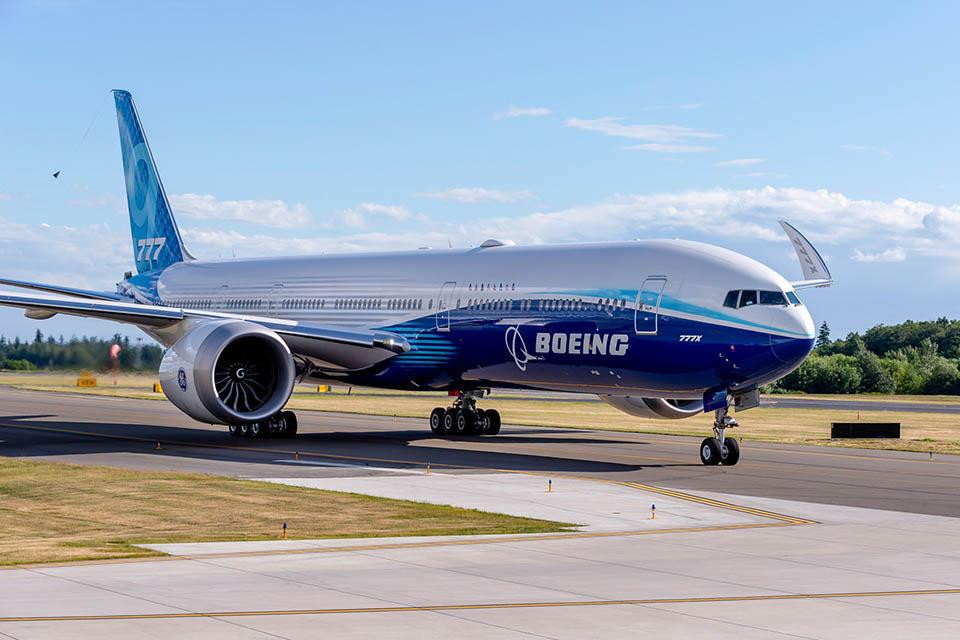
Boeing has disclosed that Emirates ordered 16 777Xs, despite the airline already having a backlog of 150 aircraft since its order for the type in November 2013. The order was firmed up in July 2014.
Remarkably, according to ch-aviation.com data, Etihad remains the only airline with orders for the 777-8X, having placed eight orders for the aircraft type.
These paltry eight orders for the 777-8X are unchanged despite Boeing having recently ‘stretched’ the 777-8X
on its product page. The American plane maker has quietly just edited the specifications of the aircraft with more capacity, range and additional length.
Boeing’s latest product page shows that the 777X-8 seats 395 passengers in a typical two-class configuration, flying up to 8,745 nautical miles. The length of the aircraft is 232 feet and 6 inches. Previously, the page showed that the 777X-8 typically seated 384 passengers, flying up to 8,730 NM, with the length of the aircraft being 229 ft.
In August one of the South African Air Force’s C-130BZ Hercules transporters, serial 409, arrived at Marshall Aerospace in Cambridge, UK, to begin an 18 month major servicing and rectification process.

THIS WILL KICK OFF a six year upgrade and major servicing programme, enabled by an initial R1 billion allocation from Treasury, but which should eventually cost around R4 billion, to improve the fleet’s availability and make it compliant with current airspace regulations.
By FY2028/29 the programme should result in average fleet availability going up to three or four aircraft on a sustainable basis, versus the one to two possible now.
Not all of the initial R1 billion will go to Marshall; about half the amount has been allocated for long
overdue engine overhauls, spares acquisitions, and support contract elements. The programme will include an upgrade to a new ADS-B Out compatible transponder and a replacement of the Secondary Flight Display (SFD).
Marshall will use 409 as the test aircraft for the transponder upgrade and new SFD so as to obtain certification for the new baseline. The SAAF C-130BZs are on a custom baseline after the fleet’s avionics upgrades in the 2000s and are certified by the Directorate System Integrity, so Marshall will need to both certify the updated baseline with them while verifying that the updated transponder is compliant with ADS-B Out requirements once installed.
It has not been without controversy, however. An MP from the opposition Democratic Alliance whose portfolio includes Denel which traditionally performs major servicing on the SAAF’s C-130BZs, issued a blistering press release demanding that the contract be cancelled. It’s unclear what he based his information on, but it was riddled with basic errors and failed to understand that Denel would be performing the upgrade and major servicing on four of the six aircraft.
While it’s always debatable whether work should be done locally or offshore for things like this, there are two major factors that must be taken into account:
Once 409 is complete, 405 will make the journey north for its own upgrade and major servicing and Marshall will ship modification kits to Denel, which will install them on the other four aircraft during major servicing carried out locally at their facilities.
First, Denel only has a single major servicing bay available, limiting the rate at which aircraft can be serviced until that capacity can be upgraded.
Second, Marshall has design and certification expertise that Denel does not have, and of course Marshall was the original prime integrator of the upgraded avionics
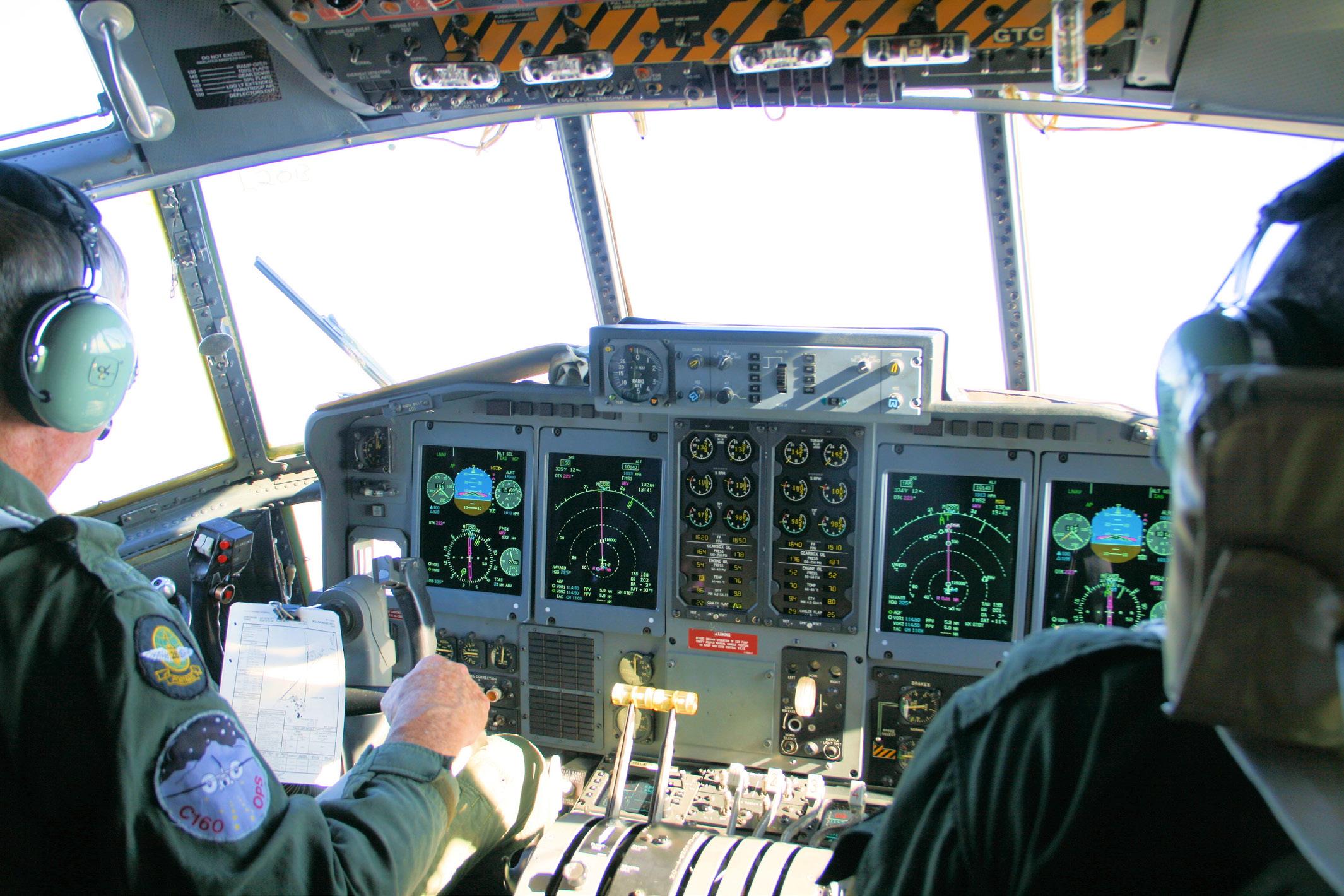
system installed under Project Ebb in the early 2000s. On top of that, Denel is clearly still struggling to recover from the effects of state capture.
Most importantly however, is that the tender appears to have been issued by Armscor as part of a regular procurement process. In November 2021 Armscor issued a Request For Information (RFI) titled “SAAF
C-130BZ ADS-B OUT Implementation, SFD Obsolescence Replacement and Aircraft Servicing”, which covered the upgrades and major servicing being partially done by Marshall now. It’s unclear exactly when the contract was awarded, but it was presumably part of the same RFI and then request for proposals (RFP).

So, why the need for the ADS-B Out upgrade, SFD replacement, and major servicing, and the relative urgency with which the SANDF is approaching this? The first reason is that an increasing number of countries, including at some point soon South Africa, are enforcing ADS-B Out mandates for aircraft operating in controlled airspace. The SAAF’s planners have been warning about this as a needed upgrade for the C-130BZ fleet for years, and now there really isn’t much time left.
The second reason is that the SFDs have obsolescence issues and replacing them should improve ease of
maintenance and availability. That’s likely less urgent though.
The third reason, perhaps as important and urgent as the first, is that the SAAF has finally after many years managed to convince Cabinet and thus National Treasury to invest in a substantial effort to improve C-130BZ fleet availability and readiness, and past experience suggests that when that sort of opportunity arises you need to take advantage of it as fast as possible before the promised future funds disappear.
Time after time the SANDF has been promised that its acquisition budget would remain untouched for long enough to support a major acquisition, only to have future budgets slashed just as the opportunity arose to issue RFPs. Or, worse, sometimes budgets have been cut even after the contract has been awarded, putting already ongoing projects in jeopardy and raising the risk of penalties.
On top of that, using both Marshall and Denel maximises available servicing bays, as at present Denel has only a single bay that can accommodate a C-130BZ major service, although there’s a plan to increase that to two. Under current plans, 409 will still be undergoing its major service at Marshall when both 401 and 402 kick off their own major services at Denel in FY2025/26.
One immediate question that springs to mind is why the SAAF has opted to upgrade its aged C-130BZs, which are all around 60 years old, rather than acquiring newer aircraft. For instance, the US has reportedly offered the SAAF a number of ex-United States Air Force C-130Hs under the Excess Defence Articles process which might involve a reduced cost via a grant.
With the ex-USAF C-130Hs, it could still make sense to acquire two or more of them if the pricing is right and the budget can be made to match. However, apparently all were retired by the USAF before receiving the most recent digital cockpit upgrades meaning that they’d require a costly upgrade process before they could be brought into service. This process might be more expensive in the end than the cost of keeping the SAAF’s current C-130BZs flying for a few more years.
Of course that can’t last forever. At some point it will become impossible to keep the C-130BZs flying for any reasonable amount of money and then another big decision will have to made. But acquiring new aircraft is for now out of the question. New C-130Js, the most suitable direct replacements, are not available for less than around $180 million (R3.4 billion) to $200 million (R3.7 billion) apiece when acquired as part of a package including support, spares, and training.
It’s to be hoped, therefore, that this process gets many more years of life out of the SAAF’s C-130BZs. Because when they finally do have to retire, it’s not at all certain that the force can afford to replace them under current budget levels and trends.

In the mid-eighties I felt like a break from the unrelenting dog eats dog lifestyle that beset the Johannesburg based freelance charter pilot’s life. So, for four months, I rekindled my former aviation romance with the beautiful Okavango Delta of northern Botswana.

IMOVED TO MAUN and joined the largest charter outfit located there. They operated several Cessna 206s, two Britten Norman Islanders, a Beechcraft 58 Baron and a Pressurised Baron.
The C206 sported large bush tires and a cargo pod beneath the fuselage. These machines together with the twin engine Islander operated as many as ten legs a day, mostly into fairly primitive dirt airstrips, when conveying affluent tourists to a variety of luxury game lodges.
Interestingly, this air charter company had developed a practical visual rule of thumb to determine the ballpark weight and centre of gravity of a busy aircraft in the field.

Aircraft departing from Maun often carried a lot of fuel to enable continued client and freight transfers between distant locations where refuelling was not available.
Their weight and balance determination method was novel, and never let me down. In the case of the C206, once loaded with fuel, baggage and five passengers, the pilot then walked to the front of the aircraft. He placed his hand under the propeller spinner, and tried to lift the nose. During this exertion the nose oleo would extend a bit, but as long as the nose wheel tyre did not leave the ground, the aircraft was good to fly.
Also, once the pilot took his seat the centre of gravity situation improved.
With the Islander, once the passengers and baggage had been loaded, the pilot walked behind the wing then turned to face the leading edge of the horizontal stabiliser. If the pilot was of average height, and the aircraft not excessively loaded, the leading edge of the tail plane should be at a height about level with the centre of the pilot’s forehead.
could not maintain altitude on one engine
This constituted the pilot’s ‘E’ for enough determination of weight and balance.
A heavily loaded Islander, suitably leaned out, was happy to fly on both engines at high density altitudes. However, in the conditions encountered during Okavango summer afternoons, an Islander at or near gross weight could not maintain altitude on one engine. Particularly, as the aircraft also had a high drag non-retractable undercarriage. I reckon the name Islander implies that these aircraft were happiest operating at sea level.
If an engine failed while the aircraft was at gross weight in typical Botswana summer temperatures, with the powerless propeller promptly feathered, and maximum power applied on the working engine, the aircraft would generally drift down at about three or four hundred feet per minute. So, the best available landing site had to be selected quickly.
I had one particularly memorable flight in a heavily laden Okavango Islander.
That hot, bumpy afternoon I took off from Maun with eight hefty male passengers and their baggage, and turned north towards Delta Camp, at the edge of the Okavango river system.
Established on track, I completed the after takeoff vital actions. But, when I switched off the left engine’s electric fuel pump, the Lycoming died. So I switched the pump back on, and the engine resumed normal operation.
Now Delta Camp is only about a fifteen-minute flight away, and the prevailing wind generally permitted an almost straight in approach to its dirt runway. With this in mind, and knowing that I was to return to Maun empty, I elected to complete the flight and land at Delta and deliver the passengers, rather than turn back to Maun.
necessary to assess the situation quickly, and if possible, go the proverbial extra mile to get the job done.
Anyway, my re-selection of the auxiliary electric fuel pump had been noticed by the front seat passenger, who then turned to his seven rear seated companions, and with a little hand waving, appeared to be remarking on the obviously deficient left engine mechanical fuel pump. His loud complaint was animatedly expressed in a guttural foreign language, unknown to me. However, as the Islander is a particularly noisy aircraft, I feigned ignorance of his concern.
A few minutes later with the destination runway in sight I reduced engine power and began our short decent.
A bit of a crosswind became evident, and I crabbed the aircraft to the right to maintain the runway centre line, then I reduced power to 18 inches and selected the first notch of flaps. Then I selected the remaining flap and slowed to 65 knots.
At about a hundred feet I further reduced the power but noticed a swing of asymmetric yaw. Glancing down at the manifold pressure I noticed we now held 13 inches of manifold on the left engine, but the right engine still indicated 16 inches, although the throttle levers were level.
I moved the right throttle further back with no effect, then I moved it forward. No additional power was forthcoming.
So I tapped the gauge, with no effect. The right throttle mechanism had somehow become disconnected.
This situation was also noted by my right seat companion and relayed to his colleagues with incomprehensible gusto.
Bush pilots do not have the luxury of airline operational protocols, and when things change, it is invariably
Holding the asymmetric yaw with right rudder we crossed a few feet above the threshold, and I pulled both mixture levers into idle cut off.
No additional power was forthcoming
Moments later the dead stick Islander, feeling more controllable, permitted me to dip the right wing with some degree of finesse to neutralise the right crosswind. We touched down gently about a quarter of the way down the runway as the passengers, who had become unnaturally quiet, erupted into a spontaneous cacophony of clapping and cheering.
I raised the flaps, and we coasted into the empty aircraft parking area and stopped. As I pulled the handbrake on and shut down the aircraft, the man sitting on my right said in heavily accented English; “You did very good job getting us safely onto the ground. But we don’t want to go any more in this plane.”
I replied, “Neither do I. By the way, are you a private pilot?”
“No”, he said. “We are all Israeli Air Force pilots, here on holiday. I have been telling my colleagues about all the bad things going wrong with the aeroplane on our short flight.”
Then he said; ‘I am instructor, and you pass.”
I was bemused enough to forget to ask him to write a commendation for my logbook.
When we had deplaned and unloaded the baggage one of the Israeli pilots said that flying military missions gave him the advantage of being able to eject, which he felt was safer than flying over Africa in an unserviceable Islander.
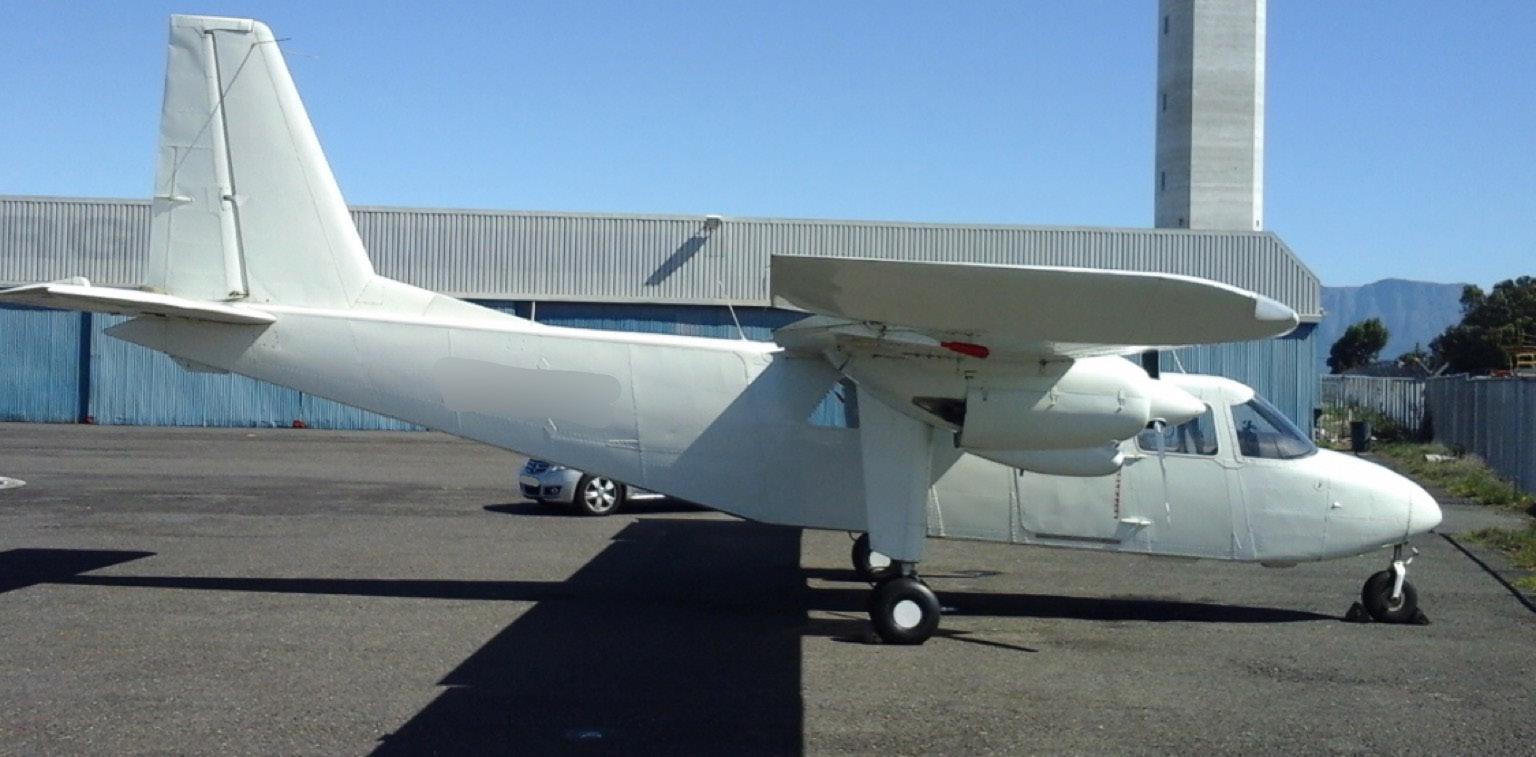
I felt his remark to be a little catty but declined to debate the issue.
Delta camp radioed our company in Maun to advise them of the now unserviceable aircraft on their airstrip. A C206 was dispatched with an engineer and toolbox. A lock nut had unlocked on the throttle linkage. This was replaced and the engine tested satisfactorily.
Then, mindful of the necessity for the left engine’s hard working auxiliary electric fuel pump to keep working for a little longer, I flew the empty aircraft back to Maun without further incident – and blissfully free of passenger commentary in Hebrew.
You did very good jobYou can tell if an Islander is overloaded by the height of the tail plane.
On18 August 2023, Universal Air Evac celebrated its ten-year anniversary since its inaugural flight to Togo in West Africa. That first flight evacuated an American volunteer who had sustained serious injuries from being knocked off her scooter.

THE PATIENT WAS TRANSPORTED to South Africa aboard one of the two Lear 35 air ambulances owned by the company. She received the necessary treatment in a Johannesburg hospital until she was fit enough to be flown to Tenerife in the Canary Islands, where a wing-to-wing transfer had been arranged to ensure her safe journey home.
Universal Air Evac conducts an average of 15 flights per month, with 95% of these being international trips crossing South Africa’s borders. A joint venture with National Airways Corporation (NAC), Universal Air Evac has grown to become one of the world’s most prominent and reputable fixed-wing medical evacuation services. They hold certification from EURAMI, a globally recognized accreditation agency for exceptional air medical transport services.
While their primary operations cover Africa, the Middle East, and parts of Europe, they can also handle evacuations from more distant locations through partnerships with trusted industry peers.
An onboard doctor and a nurse (or paramedic) provide top-tier medical assistance from a fully equipped ICU unit. This ensures patients receive proper care, both on the ground and during the flight.
A dedicated team manages all aspects of repatriation, including pre-flight assessments, flight arrangements, ground transportation, airport clinics, and airline medical clearances.
When asked what sets them apart from their global competitors, Medical Director Dr Glenn Staples maintained that South Africa’s healthcare system stands superior to that of the rest of the continent. It remains the preferred choice for international insurance brokers. General Manager of Operations, Shaun Starke, added that they are better equipped for emergencies compared to their European counterparts.
Dr Staples summarized their ethos by stating, “We have combined our love for aviation with our love of saving lives.”
The company’s global operations are coordinated from their 24/7 call centre based at Lanseria Airport. They can be reached at +27(11) 430-1777.
Each flight is operated by an experienced airline Captain and First Officer. They adhere to rigorous international protocols as specified in the Part 138 Aerial Work Certificate.

THE 737 MAX IS THE KEY to Boeing’s success over the next ten years. It has ramped up production to an unprecedented 45 aircraft deliveries per month.
Boeing has revealed the order split for the 737 MAX aircraft family, which is comprised of the 737 MAX7, MAX-8, as well as the MAX-8-200, MAX-9 and MAX-10.
The 737 MAX-8 is by far the most popular model with more than 5,000 gross orders. Its higher-density derivative, the MAX-8-200, has 469 gross orders.

The second-most popular variant is the yet-to-becertified 737 MAX-10, with 918 gross orders. The 737
MAX-9 has 420 gross orders, while the smallest, and still uncertified variant, the 737 MAX-7, has 325 gross orders. Net orders for the 737 MAX-7 and MAX-10 stand at 297 and 810, respectively.
Boeing has already delivered 965 737 MAX-8, 124 MAX-8-200 and 187 MAX-9, with 2,751, 344, and 137 unfilled orders, respectively.
displayed three newly acquired H215 Super Puma and two H125M helicopters.
The H215s will join the two H125Ms in counterterrorism operations in the northwest of Benin, where 3,000 soldiers are deployed to counter Islamist extremists as part of Operation Mirador, which has been ongoing since last year. Government troops, aircraft and armoured vehicles have been deployed on the border with Burkina Faso and the border with Niger.

In 2020, Benin’s military received two AS550 Fennec helicopters. In terms of serviceable aircraft, the Benin air force has just one Mi-8 helicopter, a single DHC-6
and MA600 transports, two Humbert Tétras CSM light aircraft and a BAe 748 transport.
The donation of the Puma helicopters is a significant boost to the Benin Air Force’s capabilities. The helicopters will be used to support the country’s counter-terrorism operations in the north, where there has been an increase in attacks by terrorist groups.
In a December 2022 speech, Beninese President Patrice Talon said the military response in 2022 included more than $130 million to recruit nearly 4,000 security personnel, modernise equipment and begin fortifying bases, while building 10 operating bases and ‘several dozen’ fortified positions.
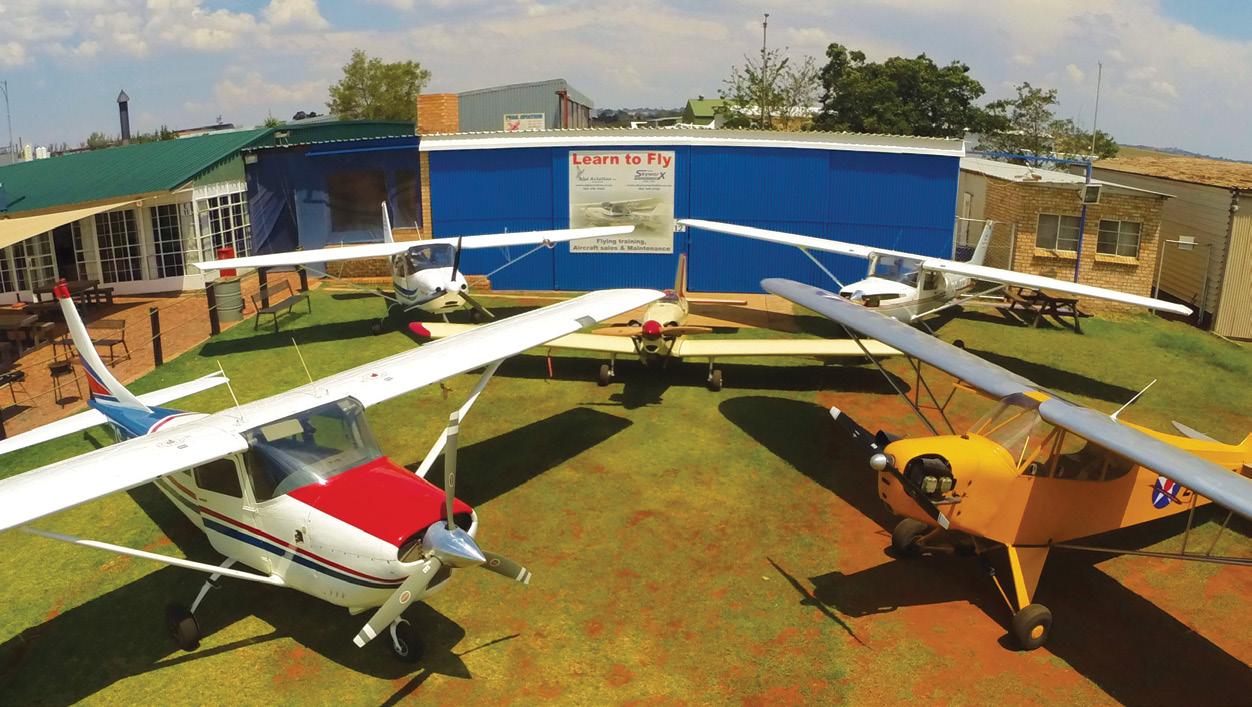










208 Aviation
Ben Esterhuizen +27 83 744 3412 ben@208aviation.co.za www.208aviation.com
A1A Flight Examiner (Loutzavia)
Jannie Loutzis 012 567 6775 / 082 416 4069 jannie@loutzavia.co.za www.loutzavia.co.za
AES (Cape Town)
Erwin Erasmus 082 494 3722 erwin@aeroelectrical.co.za www.aeroelectrical.co.za
AES (Johannesburg)
Danie van Wyk 011 701 3200 office@aeroelectrical.co.za www.aeroelectrical.co.za
Aerocolour cc
Alfred Maraun 082 775 9720 aeroeng@iafrica.com
Aero Engineering & PowerPlant
Andre Labuschagne 012 543 0948 aerocolour@telkomsa.net
Aerokits
Jean Crous 072 6716 240 aerokits99@gmail.com
Aeronav Academy
Donald O’Connor 011 701 3862 info@aeronav.co.za www.aeronav.co.za
Aeronautical Aviation
Clinton Carroll 011 659 1033 / 083 459 6279 clinton@aeronautical.co.za www.aeronautical.co.za
Aerospace Electroplating
Oliver Trollope 011 827 7535 petasus@mweb.co.za
Aerotel
Martin den Dunnen 087 6556 737 reservations@aerotel.co.za www.aerotel.co.za
Aerotric
Richard Small 083 488 4535 aerotric@aol.com
Aviation Rebuilders cc Lyn Jones 011 827 2491 / 082 872 4117 lyn@aviationrebuilders.com www.aviationrebuilders.com
AVIC International Flight Academy (AIFA)
Theo Erasmus 082 776 8883 rassie@aifa.co.za
Air 2000 (Pty) Ltd
Anne Gaines-Burrill 011 659 2449 - AH 082 770 2480 Fax 086 460 5501 air2000@global.co.za www.hunterssupport.com
Aircraft Finance Corporation & Leasing
Jaco Pietersen +27 [0]82 672 2262 jaco@airfincorp.co.za
Jason Seymour +27 [0]82 326 0147 jason@airfincorp.co.za www.airfincorp.co.za
Aircraft General Spares Eric or Hayley 084 587 6414 or 067 154 2147 eric@acgs.co.za or hayley@acgs.co.za www.acgs.co.za
Aircraft Maintenance International Pine Pienaar 083 305 0605 gm@aminternational.co.za
Aircraft Maintenance International Wonderboom Thomas Nel 082 444 7996 admin@aminternational.co.za
Air Line Pilots’ Association
Sonia Ferreira 011 394 5310 alpagm@iafrica.com www.alpa.co.za
Airshift Aircraft Sales Eugene du Plessis 082 800 3094 eugene@airshift.co.za www.airshift.co.za
Alclad Sheetmetal Services
Ed Knibbs 083 251 4601 ed@alclad.co.za www.alclad.co.za
Algoa Flying Club Sharon Mugridge 041 581 3274 info@algoafc.co.za www.algoafc.co.za
Alpi Aviation SA
Dale De Klerk 082 556 3592 dale@alpiaviation.co.za www.alpiaviation.co.za
Apco (Ptyd) Ltd
Tony/Henk + 27 12 543 0775 apcosupport@mweb.co.za www.apcosa.co.za
Ardent Aviation Consultants Yolanda Vermeulen 082 784 0510 yolanda@ardentaviation.co.za www.ardentaviation.co.za
Ascend Aviation Marlo Kruyswijk 079 511 0080 marlo@ascendaviation.co.za www.ascendaviation.co.za
Atlas Aviation Lubricants
Steve Cloete 011 917 4220 Fax: 011 917 2100 sales.aviation@atlasoil.co.za www.atlasaviation.co.za
AVDEX (Pty) Ltd
Tania Botes 011 954 15364 info@avdex.co.za www.avdex.co.za
Aviatech Flight Academy
Nico Smith 082 303 1124 viatechfakr@gmail.com www.aviatech.co.za
Aviation Direct Andrea Antel 011 465 2669 info@aviationdirect.co.za www.aviationdirect.co.za
Avtech Riekert Stroh 082 749 9256 avtech1208@gmail.com
BAC Aviation AMO 115 Micky Joss 035 797 3610 monicad@bacmaintenance.co.za
Blackhawk Africa Cisca de Lange 083 514 8532 cisca@blackhawk.aero www.blackhawk.aero
Blue Chip Flight School
Henk Kraaij 012 543 3050 bluechip@bluechip-avia.co.za www.bluechipflightschool.co.za
Bona Bona Game Lodge MJ Ernst 082 075 3541 mj@bonabona.co.za www.bonabona.co.za
Breytech Aviation cc 012 567 3139 Willie Breytenbach admin@breytech.co.za
Celeste Sani Pak & Inflight Products
Steve Harris 011 452 2456 admin@chemline.co.za www.chemline.co.za
Cape Town Flying Club Beverley Combrink 021 934 0257 / 082 821 9013 info@capetownflyingclub.co.za www.@capetownflyingclub.co.za
Century Avionics cc Carin van Zyl 011 701 3244 sales@centuryavionics.co.za www.centuryavionics.co.za
Chemetall Wayne Claassens 011 914 2500 wayne.claassens@basf.com www.chemetall.com
Chem-Line Aviation & Celeste Products
Steve Harris 011 452 2456 sales@chemline.co.za www.chemline.co.za
Clifton Electronics cc CJ Clifton / Irene Clifton 079 568 7205 / 082 926 8482 clive.iclifton@gmail.com
Comair Flight Services (Pty) Ltd Reception +27 11 540 7640/FAX: +27 11 252 9334 info@flycfs.co.za www.flycfs.co.za
Corporate-Aviators/Affordable Jet Sales
Mike Helm 082 442 6239 corporate-aviators@iafrica.com www.corporate-aviators.com
CSA Aviation – Cirrus South Africa
Alex Smith 011 701 3835 alexs@cirrussa.co.za www.cirrussa.co.za
C. W. Price & Co Kelvin L. Price 011 805 4720 cwp@cwprice.co.za www.cwprice.co.za
Dart Aeronautical Pieter Viljoen 011 827 8204 pieterviljoen@dartaero.co.za www.dartaero.co.za
Dart Aircraft Electrical Mathew Joubert 011 827 0371 Dartaircraftelectrical@gmail.com www.dartaero.co.za
Diepkloof Aircraft Maintenance cc Nick Kleinhans 083 454 6366 diepkloofamo@gmail.com
DJA Aviation Insurance 011 463 5550 0800Flying mail@dja-aviation.co.za www.dja-aviation.co.za
Dynamic Propellers Andries Visser 011 824 5057 082 445 4496 andries@dynamicpropeller.co.za www.dynamicpropellers.co.za
Eagle Flight Academy Mr D. J. Lubbe 082 557 6429 training@eagleflight.co.za www.eagleflight.co.za
Execujet Africa 011 516 2300 enquiries@execujet.co.za www.execujet.com
Federal Air Rachel Muir 011 395 9000 shuttle@fedair.com www.fedair.com
Ferry Flights int.inc. Michael (Mick) Schittenhelm 082 442 6239 ferryflights@ferry-flights.com www.ferry-flights.com
F Gomes Upholsters Carla de Lima 083 602 5658 delimaCarla92@gmail.com
Fireblade Aviation 010 595 3920 info@firebladeaviation.com www.firebladeaviation.com
Flight Training College Cornell Morton 044 876 9055 ftc@flighttrainning.co.za www.flighttraining.co.za
Flight Training Services Amanda Pearce 011 805 9015/6 amanda@fts.co.za www.fts.co.za
Fly Jetstream Aviation Henk Kraaij 083 279 7853 charter@flyjetstream.co.za www.flyjetstream.co.za
Flying Unlimited Flight School (Pty) Ltd Riaan Struwig 082 653 7504 / 086 770 8376 riaan@ppg.co.za www.ppg.co.za
Flyonics (Pty) Ltd Michael Karaolis 010 109 9405 michael@flyonics.co.za www.flyonics.co.za
Gemair Andries Venter 011 701 2653 / 082 905 5760 andries@gemair.co.za
GIB Aviation Insurance Brokers Richard Turner 011 483 1212 aviation@gib.co.za www.gib.co.za
Guardian Air 011 701 3011 082 521 2394 ops@guardianair.co.za www.guardianair.co.za
Heli-Afrique cc Tino Conceicao 083 458 2172 tino.conceicao@heli-afrique.co.za
Henley Air Andre Coetzee 011 827 5503 andre@henleyair.co.za www.henleyair.co.za
Hover Dynamics Phillip Cope 074 231 2964 info@hover.co.za www.hover.co.za
Indigo Helicopters Gerhard Kleynhans 082 927 4031 / 086 528 4234 veroeschka@indigohelicopters.co.za www.indigohelicopters.co.za
IndigoSat South Africa - Aircraft Tracking Gareth Willers 08600 22 121 sales@indigosat.co.za www.indigosat.co.za
International Flight Clearances Steve Wright 076 983 1089 (24 Hrs) flightops@flyifc.co.za www.flyifc.co.za
Investment Aircraft
Quinton Warne 082 806 5193 aviation@lantic.net www.investmentaircraft.com
Jabiru Aircraft
Len Alford 044 876 9991 / 044 876 9993 info@jabiru.co.za www.jabiru.co.za
Jim Davis Books
Jim Davis 072 188 6484 jim@border.co.za www.jimdavis.co.za
Joc Air T/A The Propeller Shop Aiden O’Mahony 011 701 3114 jocprop@iafrica.com
Johannesburg Flying Academy
Alan Stewart 083 702 3680 info@jhbflying.co.za www.jhbflying.co.za
Kishugu Aviation +27 13 741 6400 comms@kishugu.com www.kishugu.com/kishugu-aviation
Khubenker Energy (Pty) Ltd T/A Benveroy
Vernon Bartlett 086 484 4296 vernon@khubenker.co.za www.khubenker.co.za
Kit Planes for Africa
Stefan Coetzee 013 793 7013 info@saplanes.co.za www.saplanes.co.za
Kzn Aviation (Pty) Ltd
Melanie Jordaan 031 564 6215 mel@kznaviation.co.za www.kznaviation.co.za
Lanseria Aircraft Interiors
Francois Denton 011 659 1962 / 076 810 9751 francois@aircraftcompletions.co.za
Lanseria Flight Centre
Ian Dyson Tel: +27 11 312 5166, F: +27 11 312 5166 ian@flylfc.com www.flylfc.com
Lanseria International Airport
Mike Christoph 011 367 0300 mikec@lanseria.co.za www.lanseria.co.za
Leading Edge Aviation cc
Peter Jackson Tel 013 741 3654 Fax 013 741 1303 office@leaviation.co.za www.leadingedgeaviation.co.za
Legend Sky 083 860 5225 / 086 600 7285 info@legendssky.co.za www.legendsky.co.za
Litson & Associates (Pty) Ltd
OGP/BARS Auditing & Advisory Services & Aviation Safety Training
Email: Phone:enquiries@litson.co.za 27 (0) 8517187 www.litson.co.za
Litson & Associates Risk Management Services (Pty) Ltd
eSMS-S™/ eTENDER/ e-REPORT / Aviation Software Systems
Email: Phone:enquiries@litson.co.za 27 (0) 8517187 www.litson.co.za
Loutzavia Aircraft Sales
Henry Miles 082 966 0911 henry@loutzavia.co.za www.loutzavia.co.za
Loutzavia Flight Training
Gerhardt Botha 012 567 6775 ops@loutzavia.co.za www.loutzavia.co.za
Loutzavia-Pilots and Planes
Maria Loutzis 012 567 6775 maria@loutzavia.co.za www.pilotsnplanes.co.za
Loutzavia Rand
Frans Pretorius 011 824 3804 rand@loutzavia.co.za www@loutzavia.co.za
Lowveld Aero Club Pugs Steyn 013 741 3636 Flynow@lac.co.za
Maverick Air Charters
Lourens Human 082 570 2743 ops@maverickair.co.za www.maverickair.co.za
MCC Aviation Pty Ltd
Claude Oberholzer 011 701 2332 info@flymcc.co.za www.flymcc.co.za
Mistral Aviation Services Peter de Beer 083 208 7249 peter@mistral.co.za
MH Aviation Services (Pty) Ltd
Marc Pienaar 011 609 0123 / 082 940 5437 customerrelations@mhaviation.co.za www.mhaviation.co.za
M and N Acoustic Services cc Martin de Beer 012 689 2007/8 calservice@mweb.co.za
Metropolitan Aviation (Pty) Ltd
Gert Mouton 082 458 3736 herenbus@gmail.com
Money Aviation Angus Money 083 263 2934 angus@moneyaviation.co.za www.moneyaviation.co.za
North East Avionics Keith Robertson +27 13 741 2986 keith@northeastavionics.co.za deborah@northeastavionics.co.za www.northeastavionics.co.za
Orsmond Aviation 058 303 5261 info@orsmondaviation.co.za www.orsmondaviation.co.za
Owenair (Pty) Ltd Clive Skinner 082 923 9580 clive.skinner@owenair.co.za www.owenwair.co.za
Par-Avion Exclusive Catering Jakkie Vorster 011 701 2600 accounts@par-avion.co.za www.par-avion.co.za
PFERD-South Africa (Pty) Ltd Hannes Nortman 011 230 4000 hannes.nortman@pferd.co.za www.pferd.com
Plane Maintenance Facility
Johan 083 300 3619 pmf@myconnection.co.za
Powered Flight Charters
Johanita Jacobs Tel 012 007 0244/Fax 0866 66 2077 info@poweredflight.co.za www.poweredflight.co.za
Powered Flight Training Centre
Johanita Jacobs Tel 012 007 0244/Fax 0866 66 2077 info@poweredflight.co.za www.poweredflight.co.za
Precision Aviation Services Marnix Hulleman 012 543 0371 marnix@pasaviation.co.za www.pasaviation.co.za
Propeller Centre Theuns du Toit +27 12 567 1689 / +27 71 362 5152 theuns@propcentre.co.za www.propcentre.com
Rainbow SkyReach (Pty) Ltd
Mike Gill 011 817 2298 Mike@fly-skyreach.com www.fly-skyreach.com
Rand Airport Kevin van Zyl Kevin@horizonrisk.co.za +27 76 801 5639 www.randairport.co.za
Dr Rudi Britz Aviation Medical Clinic
Megan 066 177 7194 rudiavmed@gmail.com Wonderboom Airport
SAA Technical (SOC) Ltd
SAAT Marketing 011 978 9993 satmarketing@flysaa.com www.flysaa.com/technical
SABRE Aircraft
Richard Stubbs 083 655 0355 richardstubbs@mweb.co.za www.aircraftafrica.co.za
Savannah Helicopters De 082Jager 444 1138 / 044 873 3288 dejager@savannahhelicopters.co.za www.savannahhelicopters.co.za
Scenic Air
Christa van Wyk +264 612 492 68 windhoek@scenic-air.com www.scenic-air.com
Sheltam Aviation Durban
Susan Ryan 083 505 4882 susanryan@sheltam.com www.sheltamaviation.com
Sheltam Aviation PE
Brendan Booker 082 497 6565 brendanb@sheltam.com www.sheltamaviation.com
Signature Flight Support Cape Town
Alan Olivier 021 934 0350 cpt@signatureflight.co.za www.signatureaviation.com/locations/CPT
Signco (Pty Ltd)
Archie Kemp Tel 011 452 6857 Fax 086 504 5239 info@signco.zo.za www.signco.co.za
Skytrim Rico Kruger +27 11 827 6638 rico@skytrim.co.za www.skytrim.co.za
SleepOver
Michael Richardson 010 110 9900 michael.richardson@sleepover-za.com www.sleepover-za.com
Sling Aircraft Kim Bell-Cross 011 948 9898 sales@airplanefactory.co.za www.airplanefactory.co.za
Solenta Aviation (Pty Ltd)
Paul Hurst 011 707 4000 info@solenta.com www.solenta.com
Southern Energy Company (Pty) Ltd
Elke Bertram +264 8114 29958 johnnym@sec.com.na www.sec.com.na
Southern Rotorcraft cc Mr Reg Denysschen Tel no: 0219350980 sasales@rotors-r-us.com www.rotors-r-us.com
Starlite Aero Sales
Klara Fouché +27 83 324 8530 / +27 31 571 6600 klaraf@starliteaviation.com www.starliteaviation.com
Starlite Aviation Operations
Trisha Andhee +27 82 660 3018/ +27 31 571 6600 trishaa@starliteaviation.com www.starliteaviation.com
Starlite Aviation Training Academy
Durban: +27 31 571 6600 Mossel Bay: +27 44 692 0006 train@starliteaviation.com www.starliteaviation.com
Status Aviation (Pty) Ltd
Richard Donian 074 587 5978 / 086 673 5266 info@statusaviation.co.za www.statusaviation.co.za
Superior Pilot Services Liana Jansen van 0118050605/2247Rensburg info@superiorair.co.za www.superiorair.co.za
Swift Flite Linda Naidoo Tel 011 701 3298 Fax 011 701 3297 info@swiftflite.com / linda@swiftflite.com www.swiftflite.co.za
The Aviation Shop
Karel Zaayman 010 020 1618 info@aviationshop.co.za www.aviationshop.co.za
The Copter Shop Bill Olmsted 082 454 8555 execheli@iafrica.com www.execheli.wixsite.com/the-copter-shop-sa
The Pilot Shop Helen Bosland 082 556 3729 helen@pilotshop.co.za www.pilotshop.co.za
Titan Helicopter Group 044 878 0453 info@titanhelicopters.com www.titanhelicopters.com
Top Flight Academy Nico Smith 082 303 1124 topflightklerksdorp@gmail.com
Turbo Prop Service Centre 011 701 3210 info@tpscsa.co.za www.tpscsa.co.za
Ultimax Aviation (Pty) Ltd Aristide Loumouamou +27 72 878 8786 aristide@ultimax-aviation.com www.ultimax-aviation.com
United Charter cc Jonathan Wolpe 083 270 8886 jonathan.wolpe@unitedcharter.co.za www.unitedcharter.co.za
United Flight Support Clinton Moodley/Jonathan Wolpe 076 813 7754 / 011 788 0813 ops@unitedflightsupported.com www.unitedflightsupport.com
Velocity Aviation Collin Pearson 011 659 2306 / 011 659 2334 collin@velocityaviation.co.za www.velocityaviation.co.za
Villa San Giovanni Luca Maiorana 012 111 8888 info@vsg.co.za www.vsg.co.za
Vortx Aviation Bredell Roux 072 480 0359 info@vortx.co.za www.vortxaviation.com
Wanafly Adrian Barry 082 493 9101 adrian@wanafly.net www.wanafly.co.za
Windhoek Flight Training Centre Thinus Dreyer 0026 40 811284 180 pilots@flywftc.com www.flywftc.com
Wings n Things Wendy Thatcher 011 701 3209 wendy@wingsnthings.co.za www.wingsnthings.co.za
Witbank Flight School Andre De Villiers 083 604 1718 andredv@lantic.net www.waaflyingclub.co.za
Wonderboom Airport Peet van Rensburg 012 567 1188/9 peet@wonderboomairport.co.za www.wonderboomairport.co.za
Zandspruit Bush & Aero Estate Martin Den Dunnen 082 449 8895 martin@zandspruit.co.za www.zandspruit.co.za
Zebula Golf Estate & SPA Reservations 014 734 7700 reception@zebula.co.za www.zebula.co.za